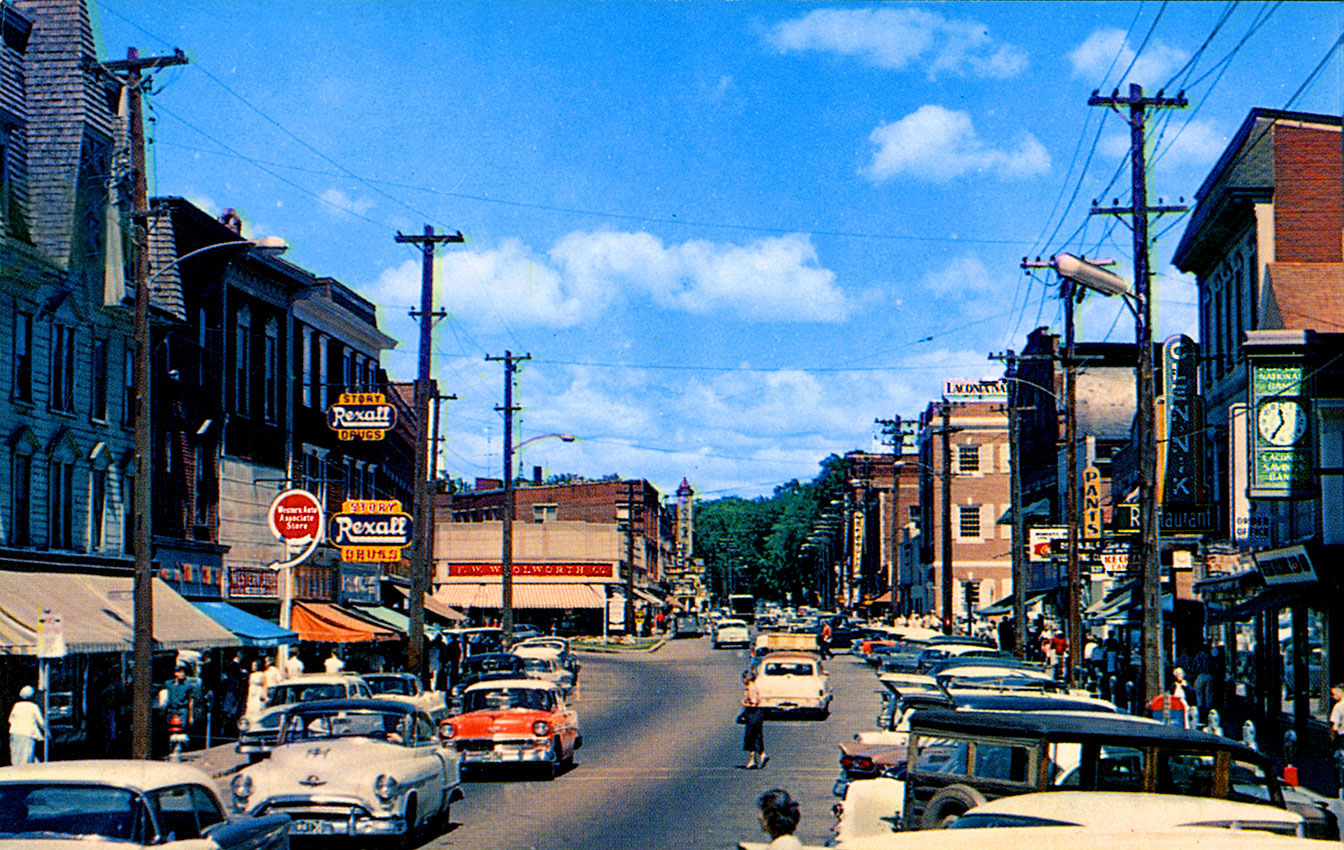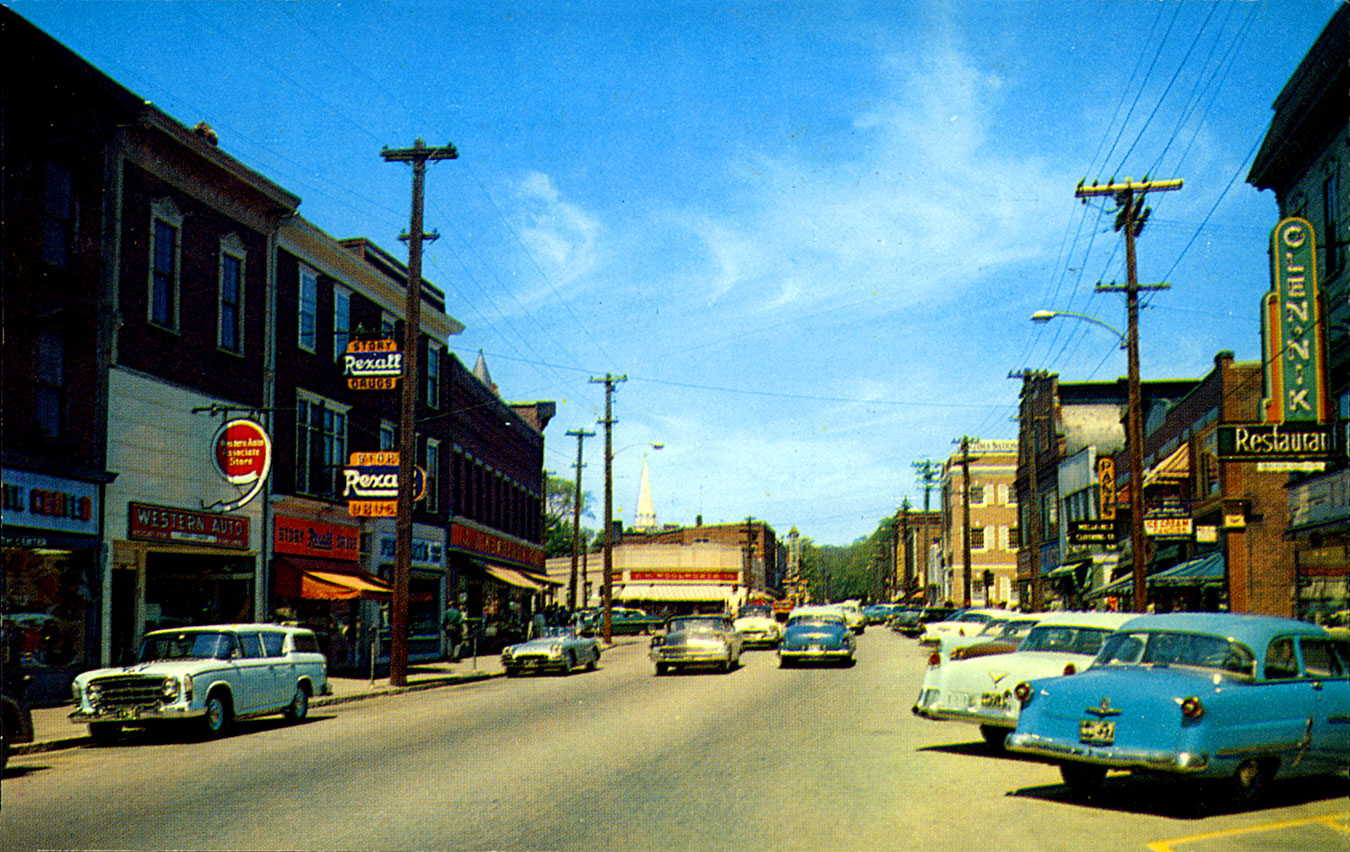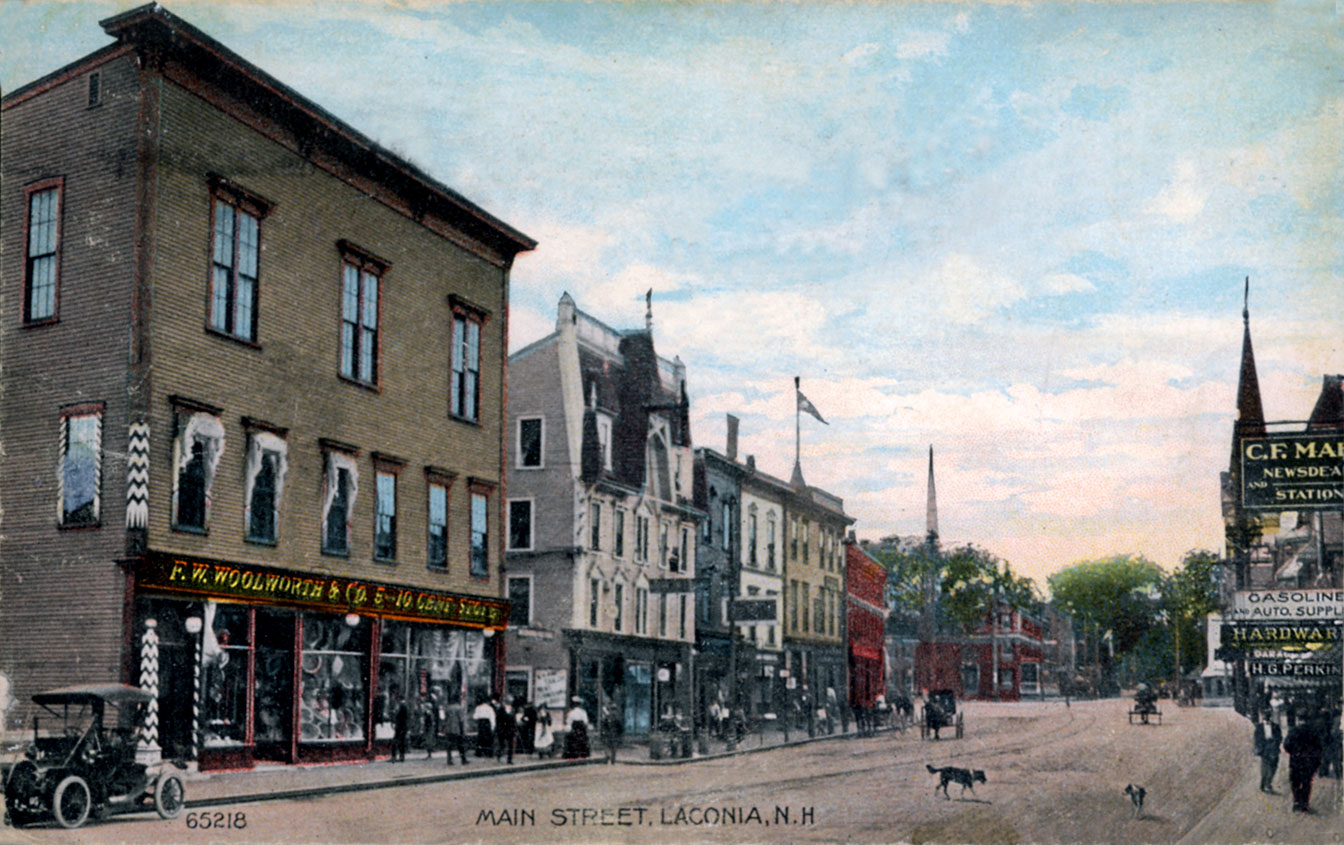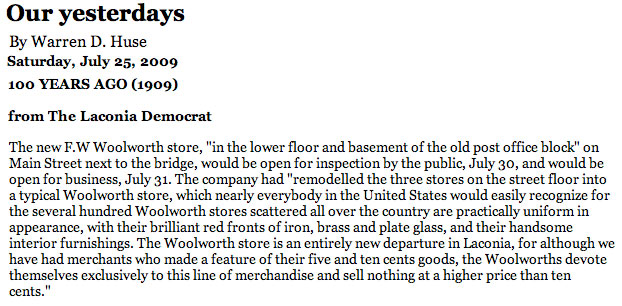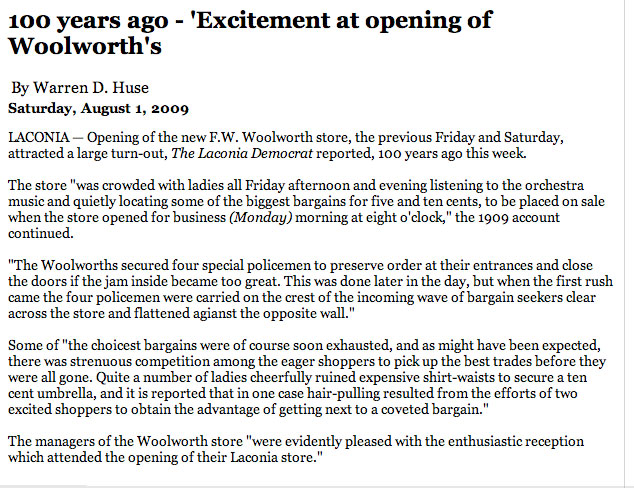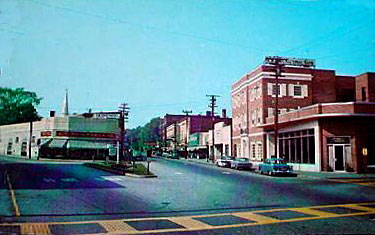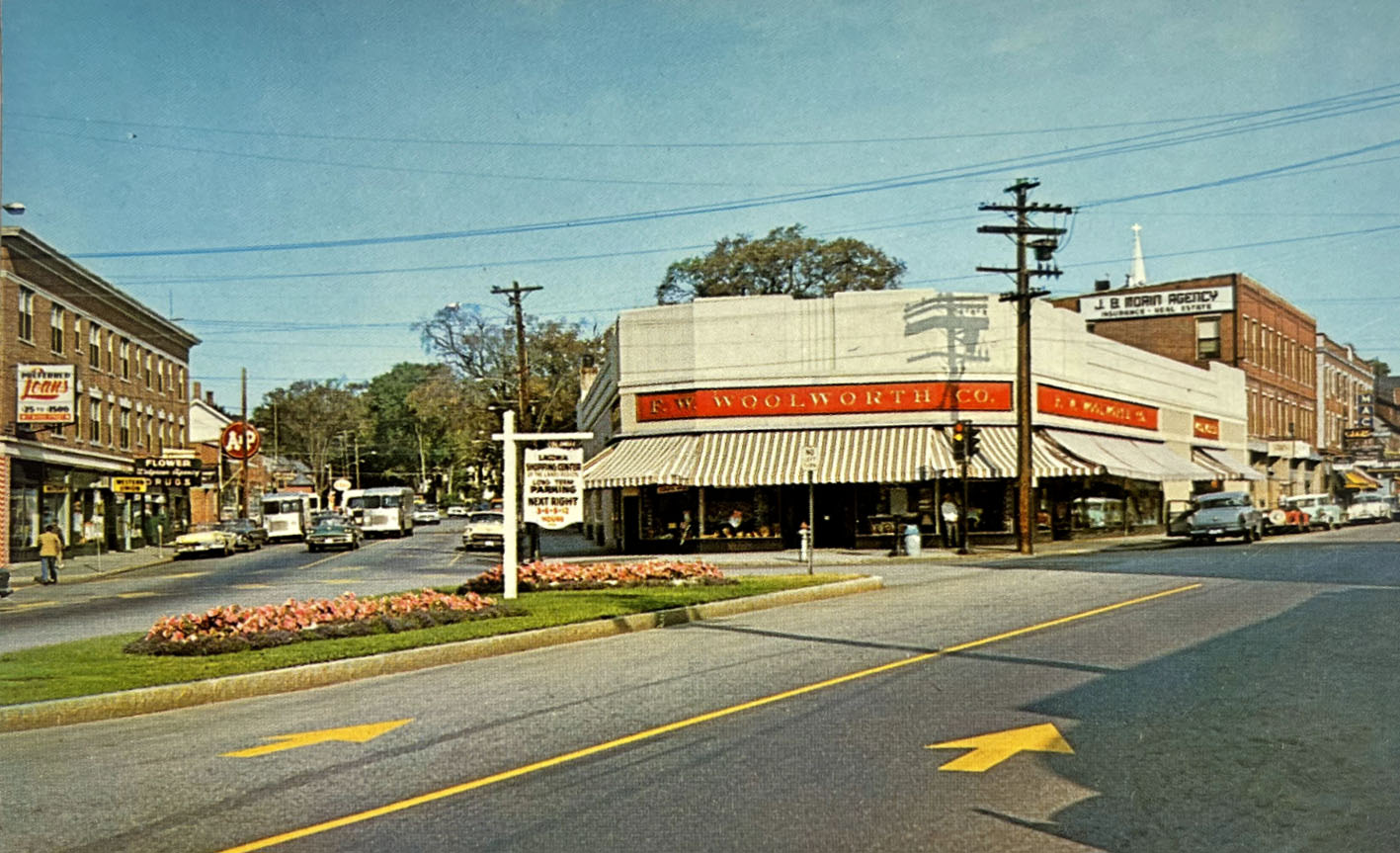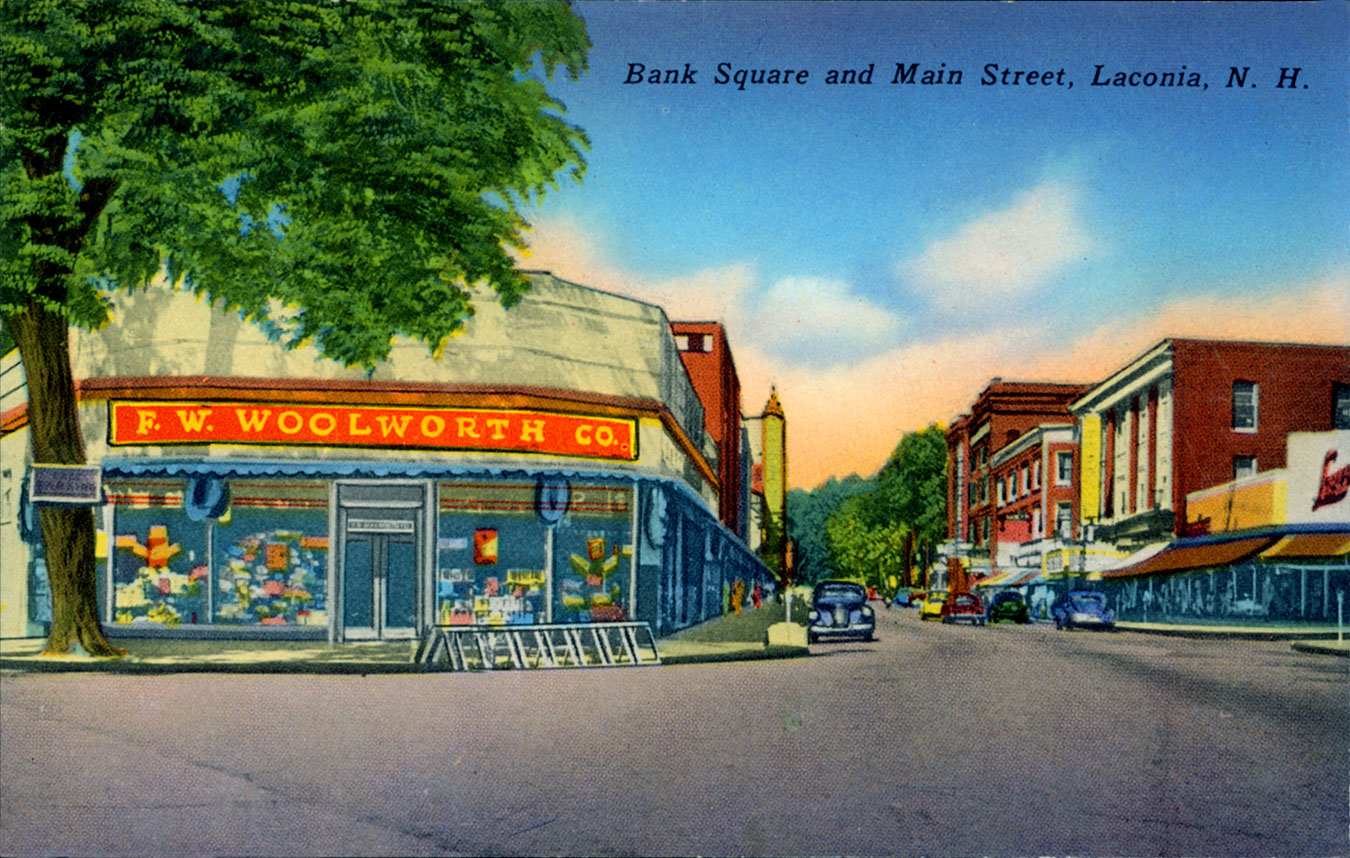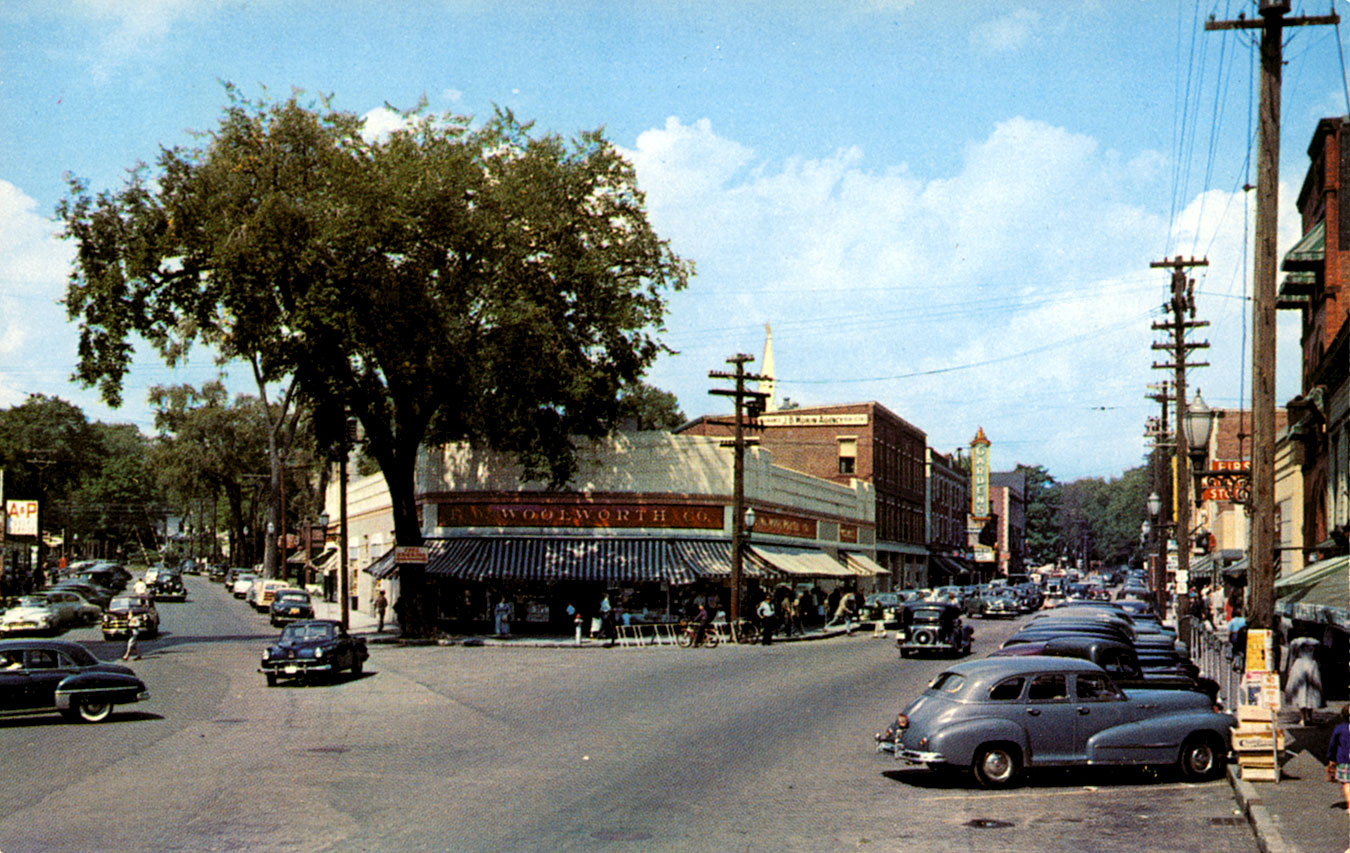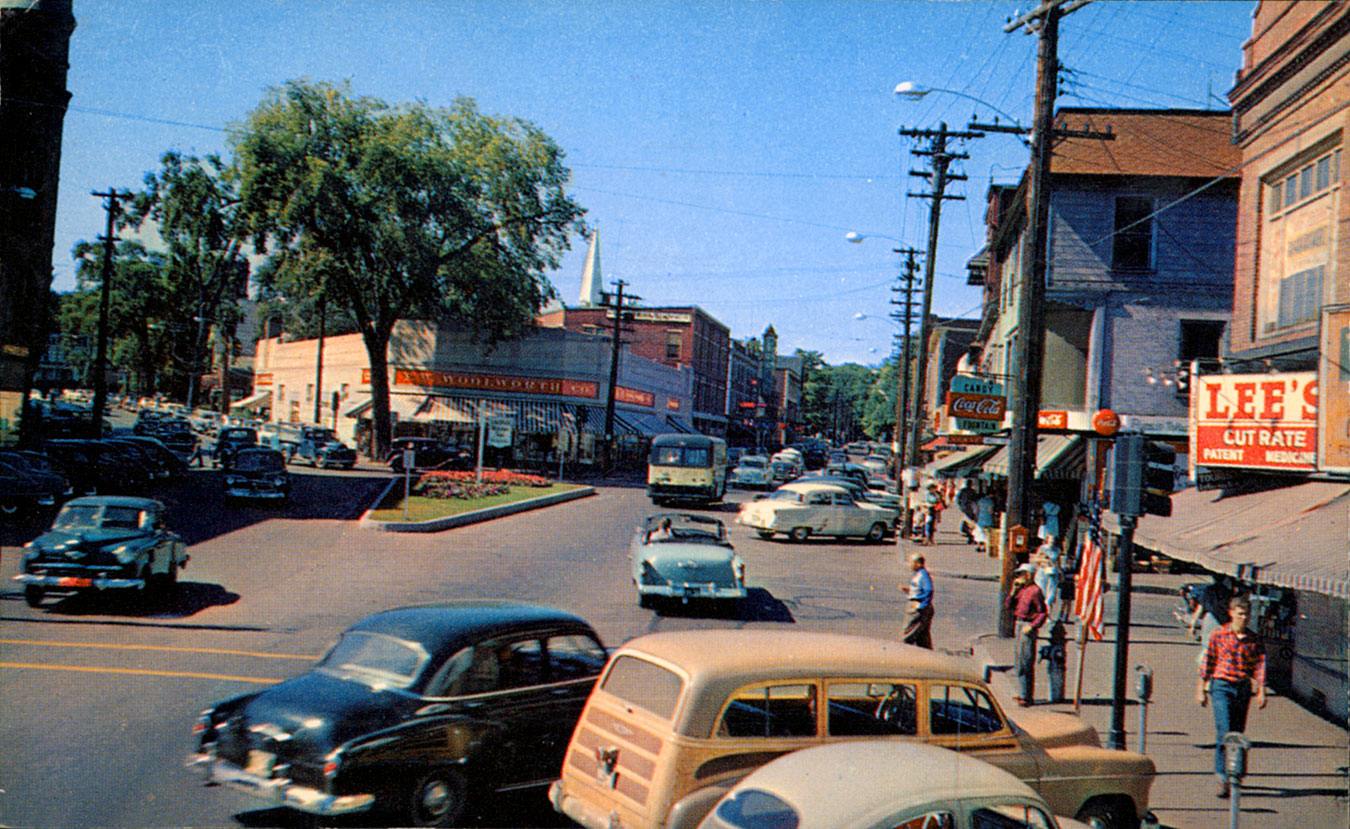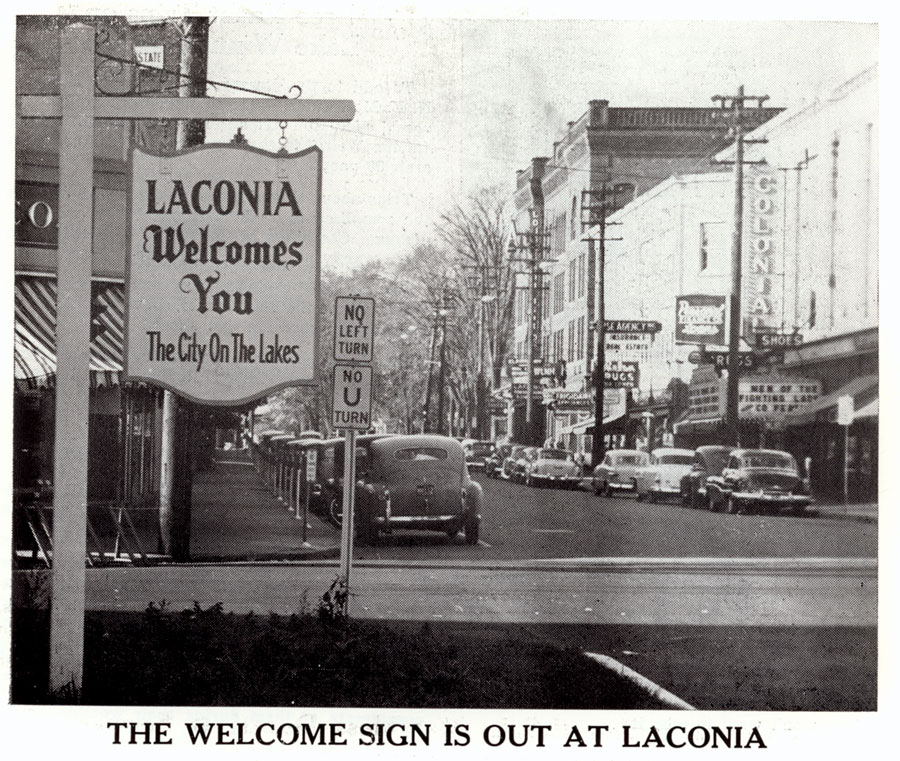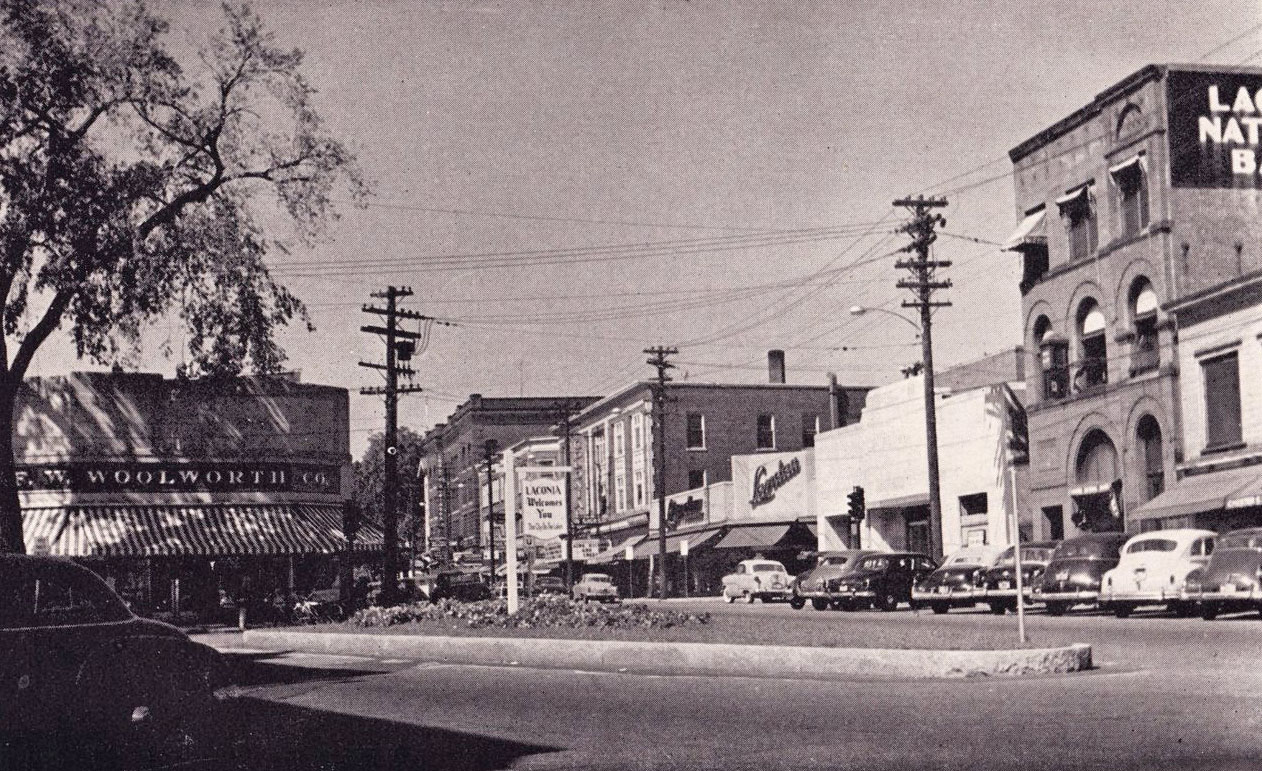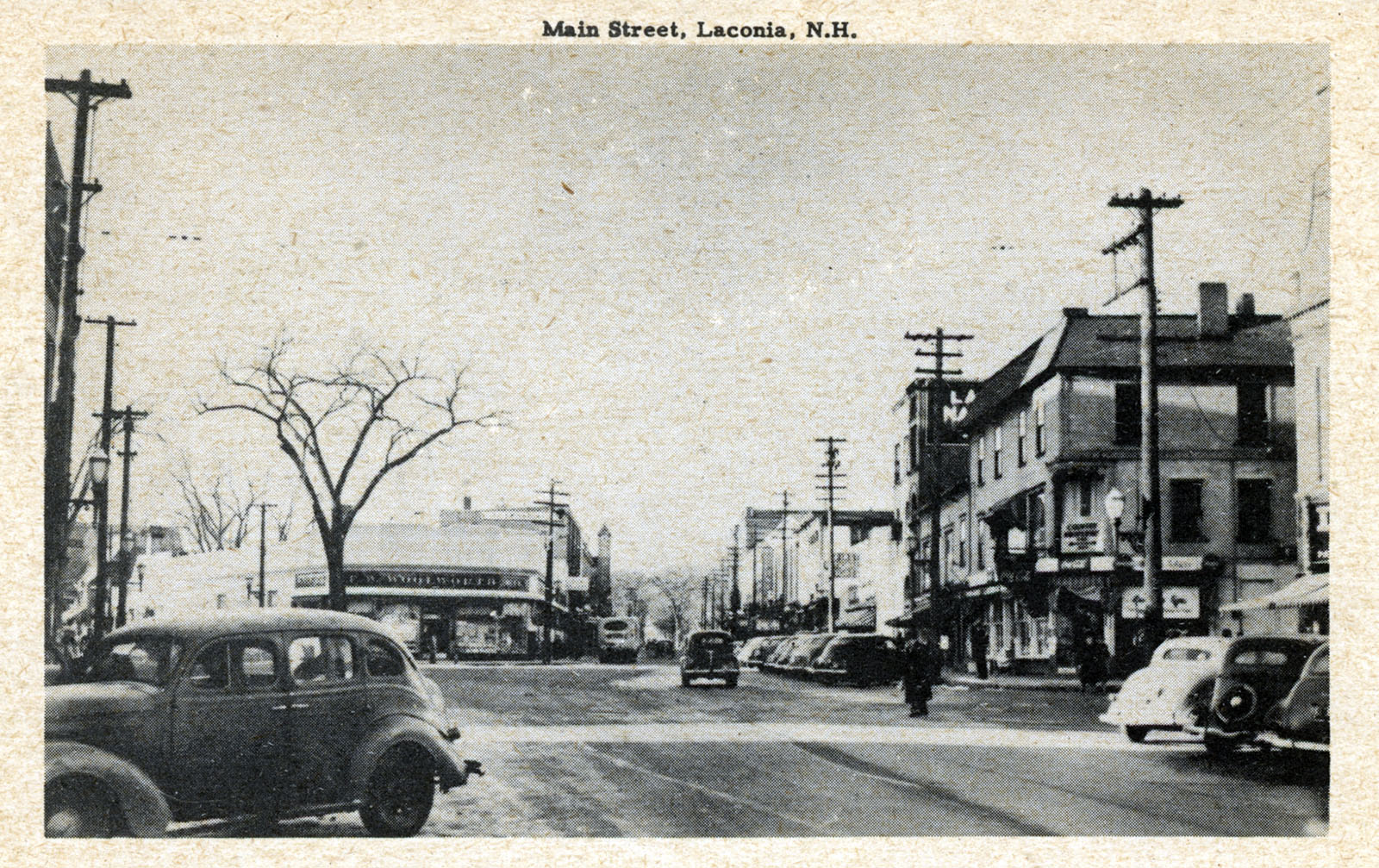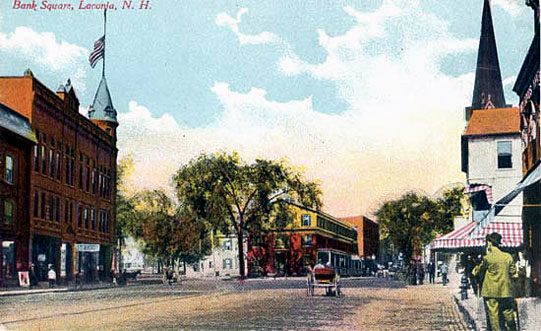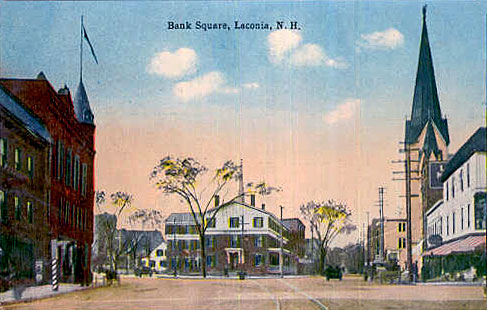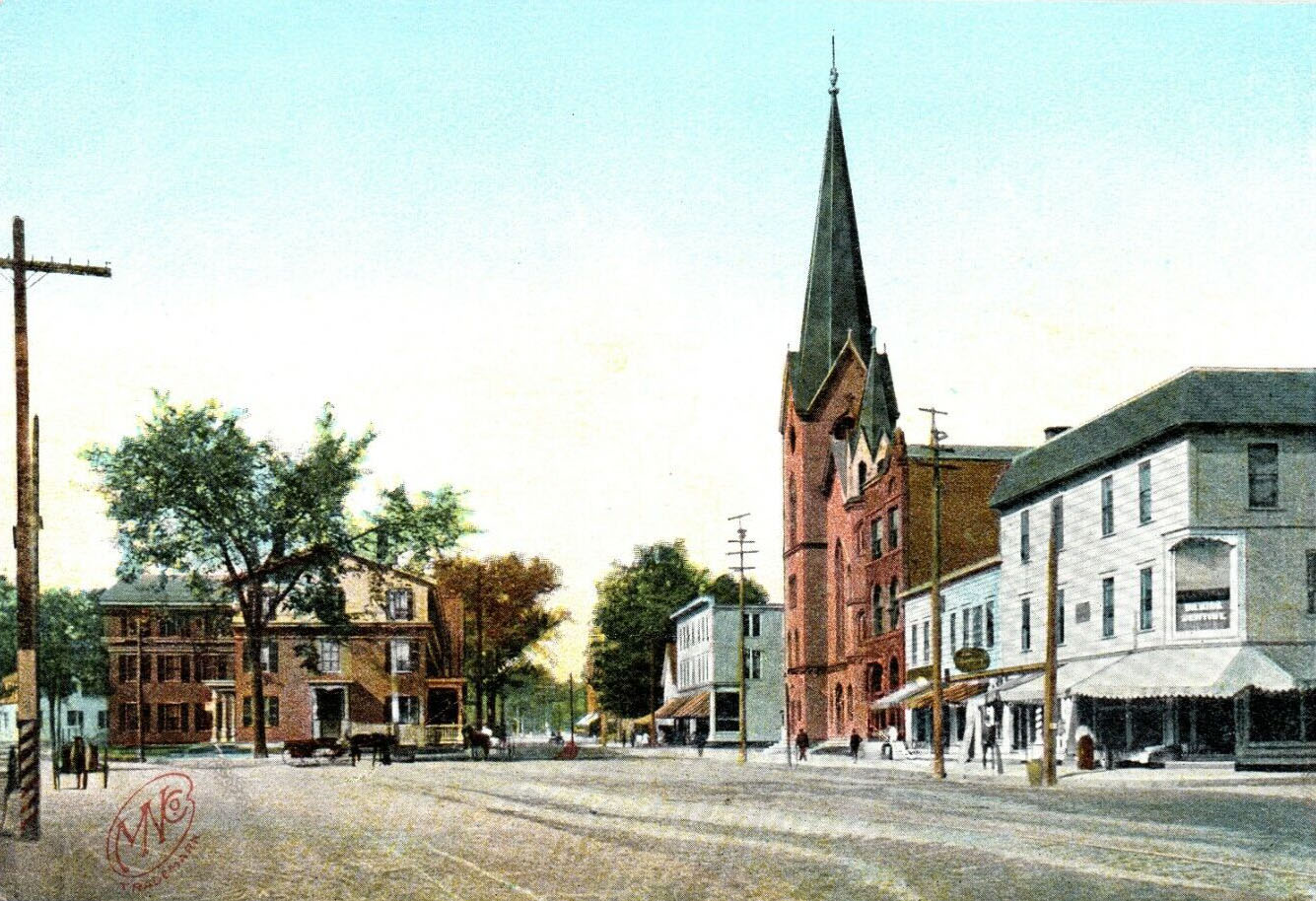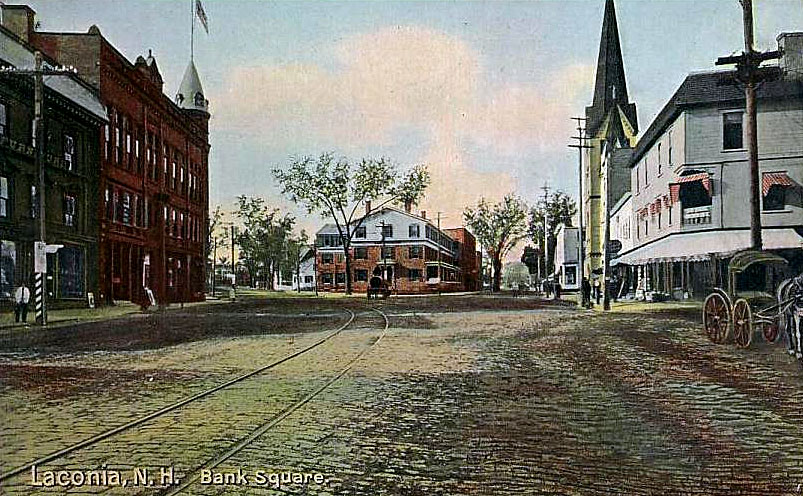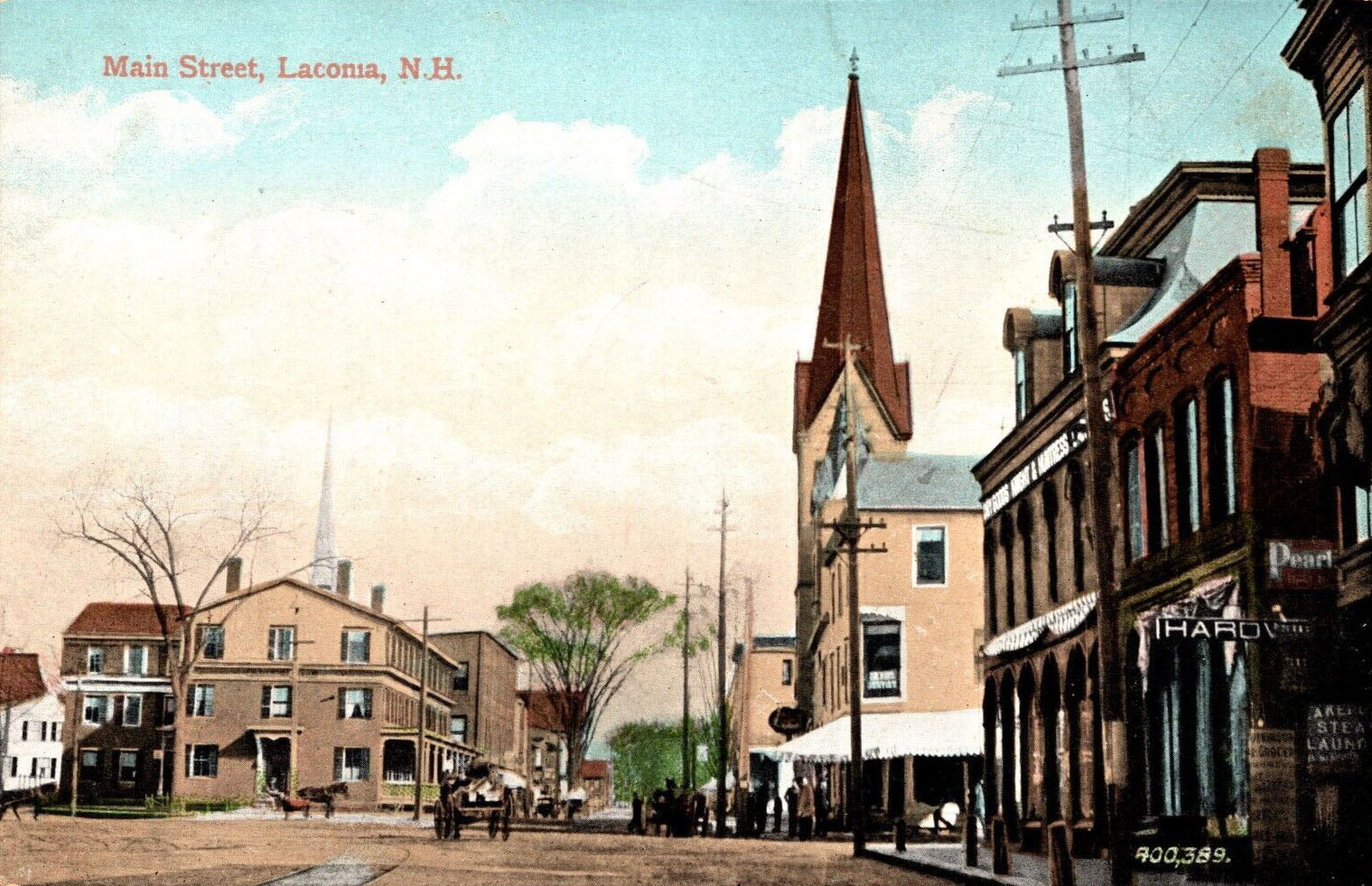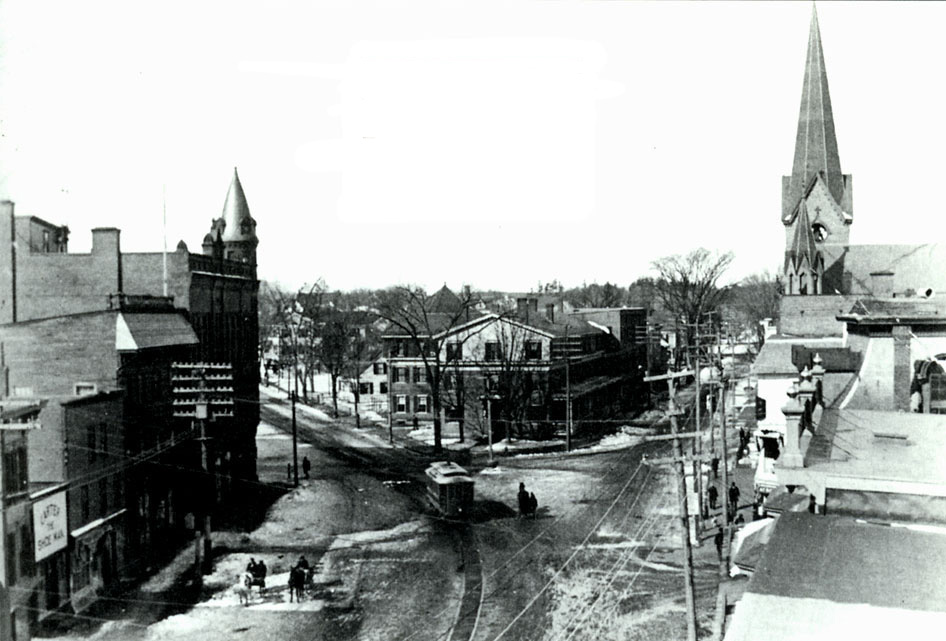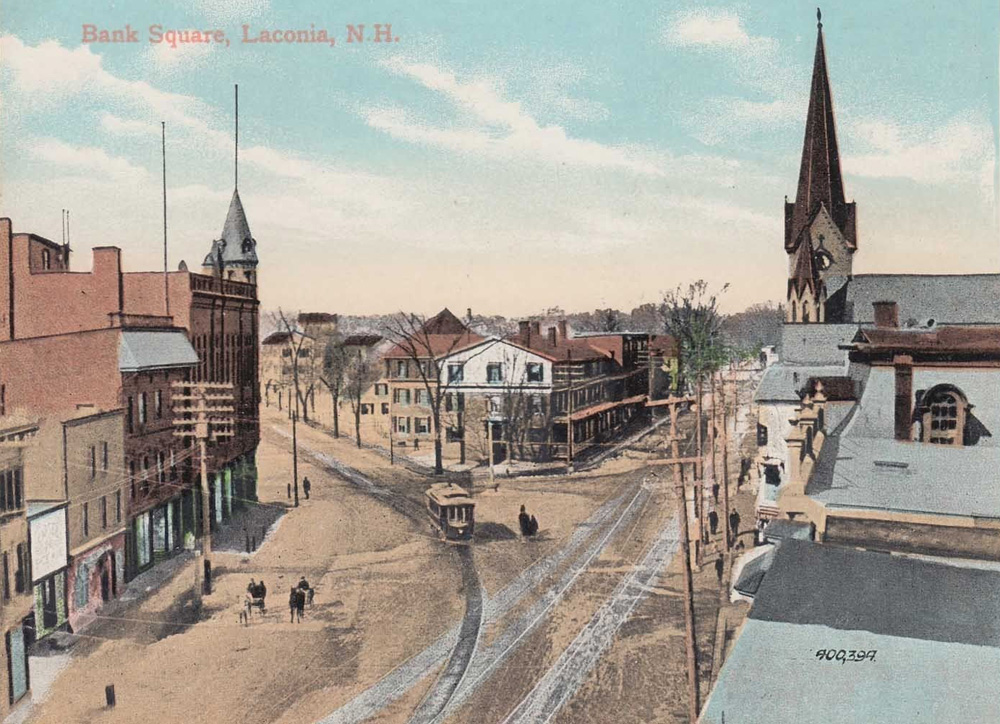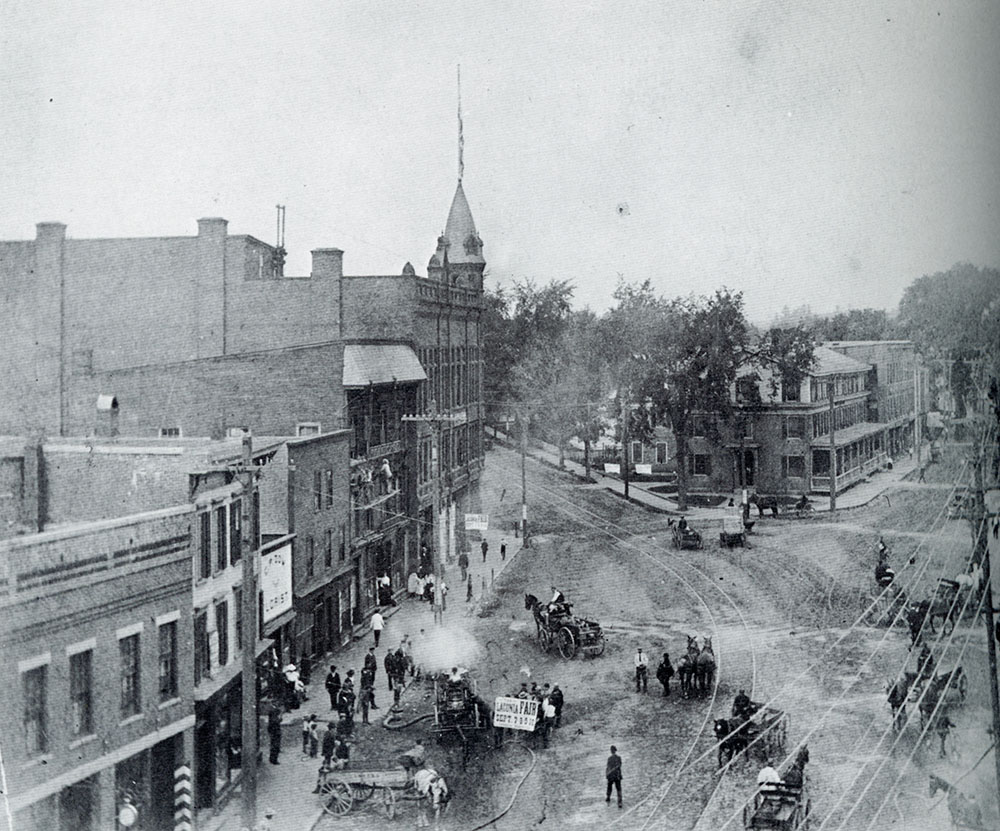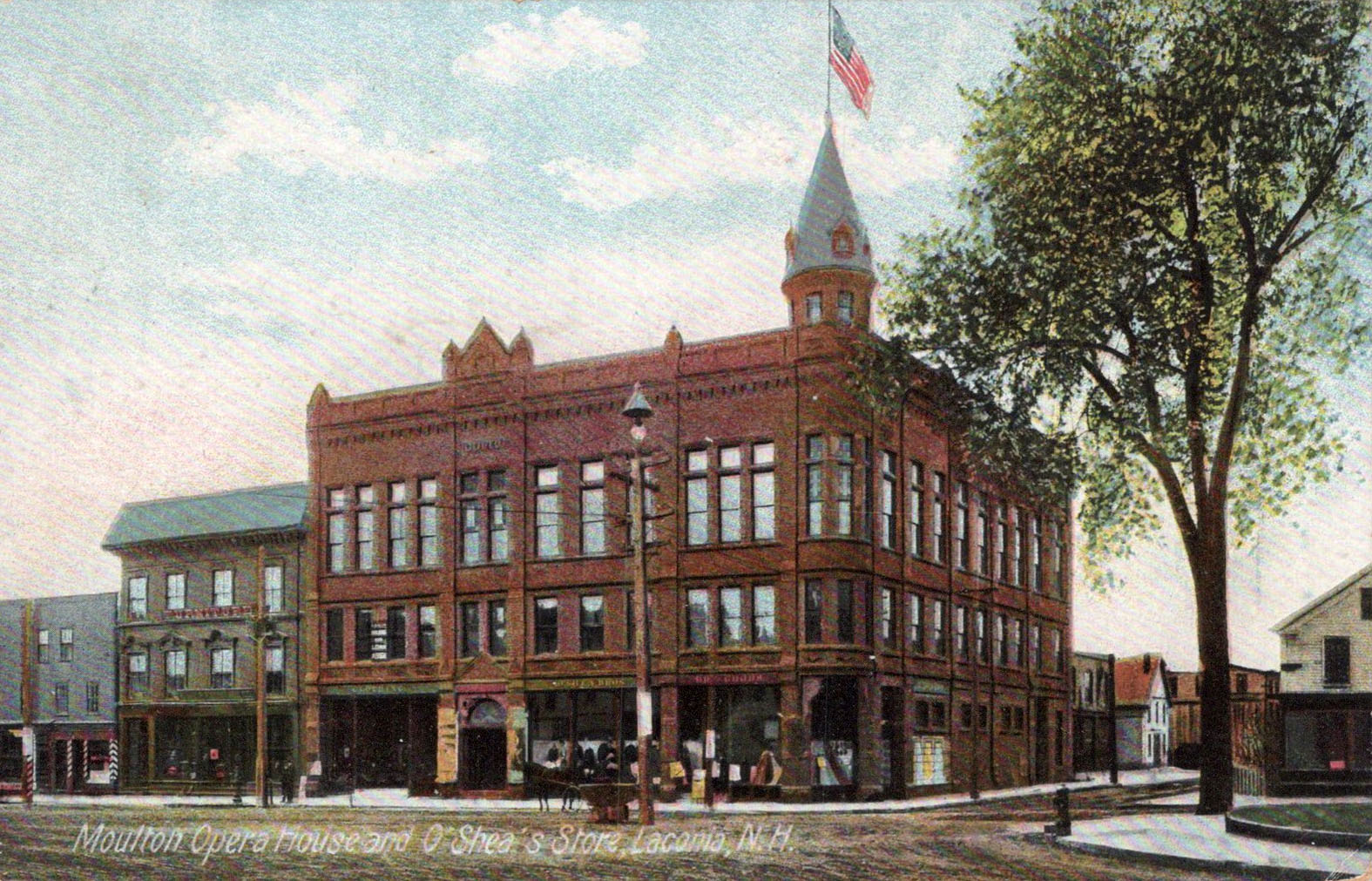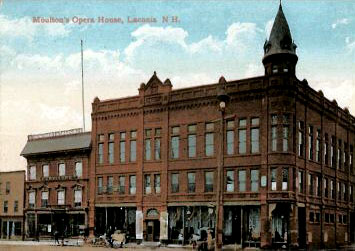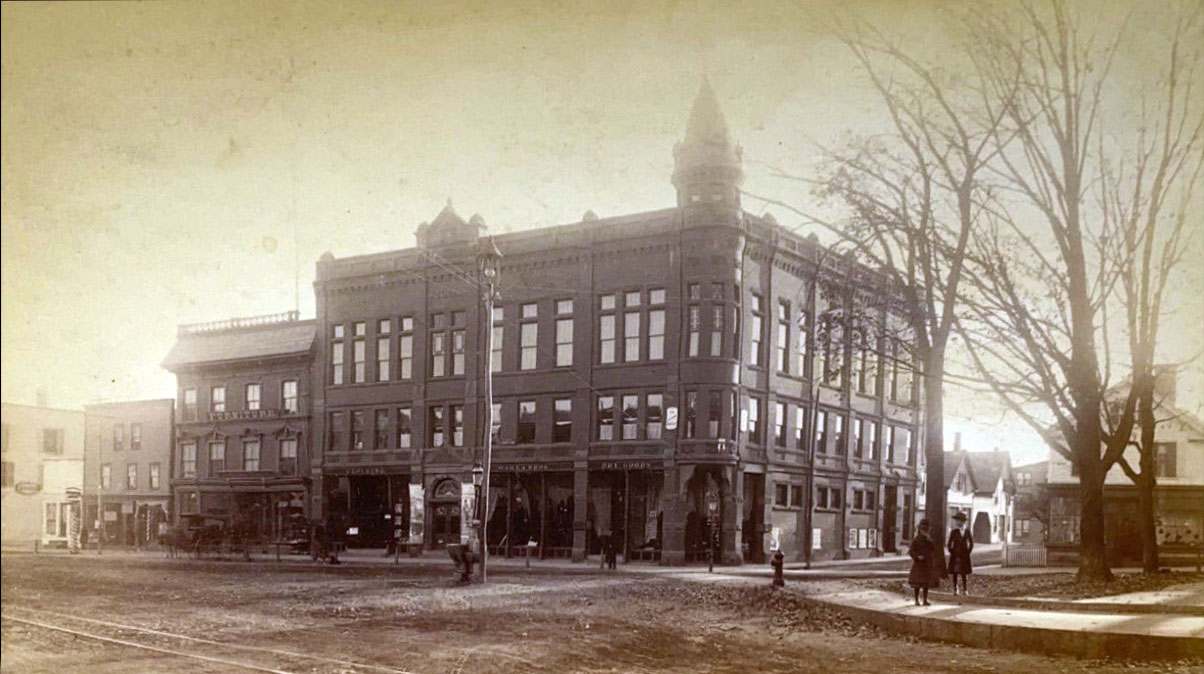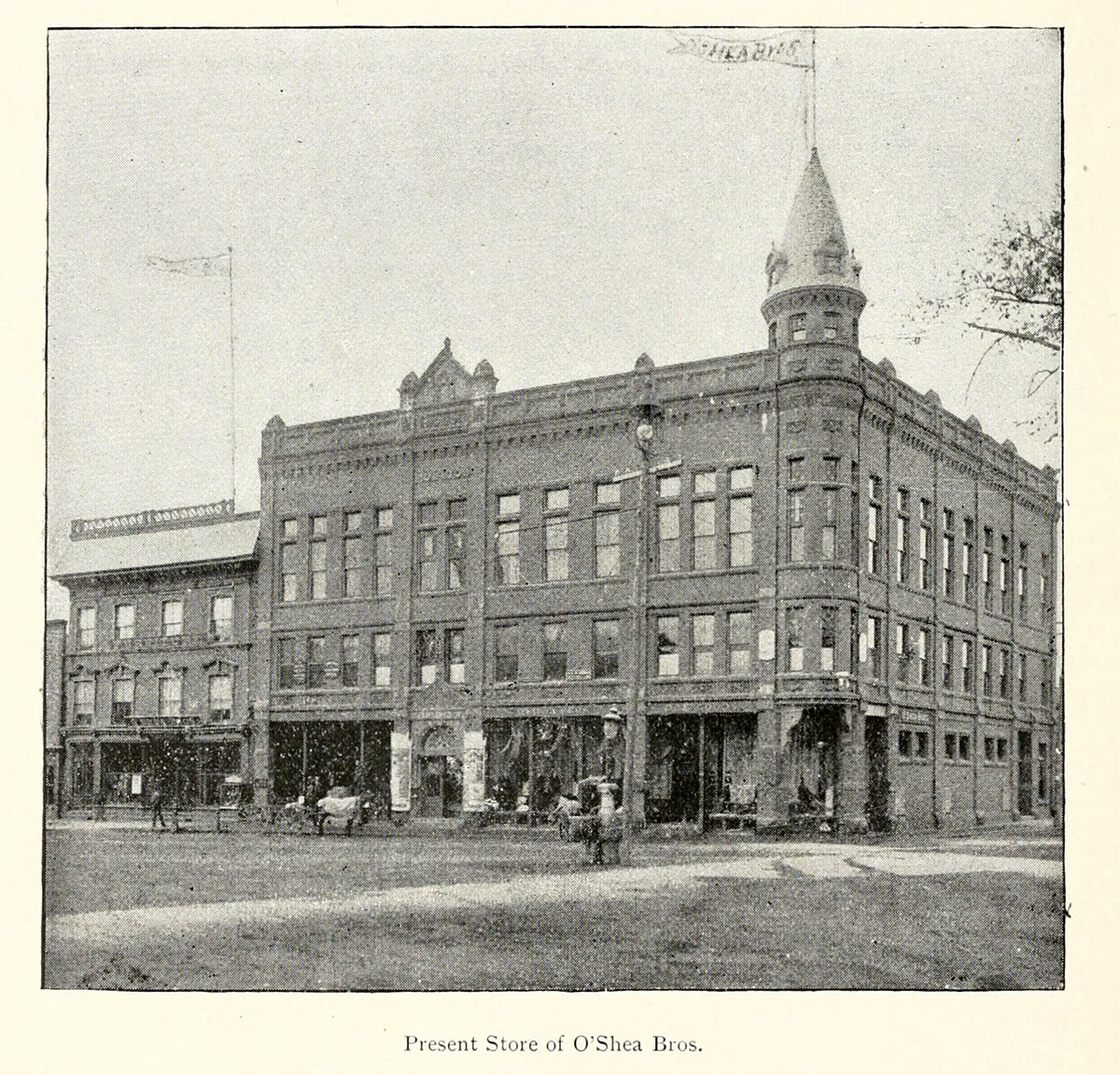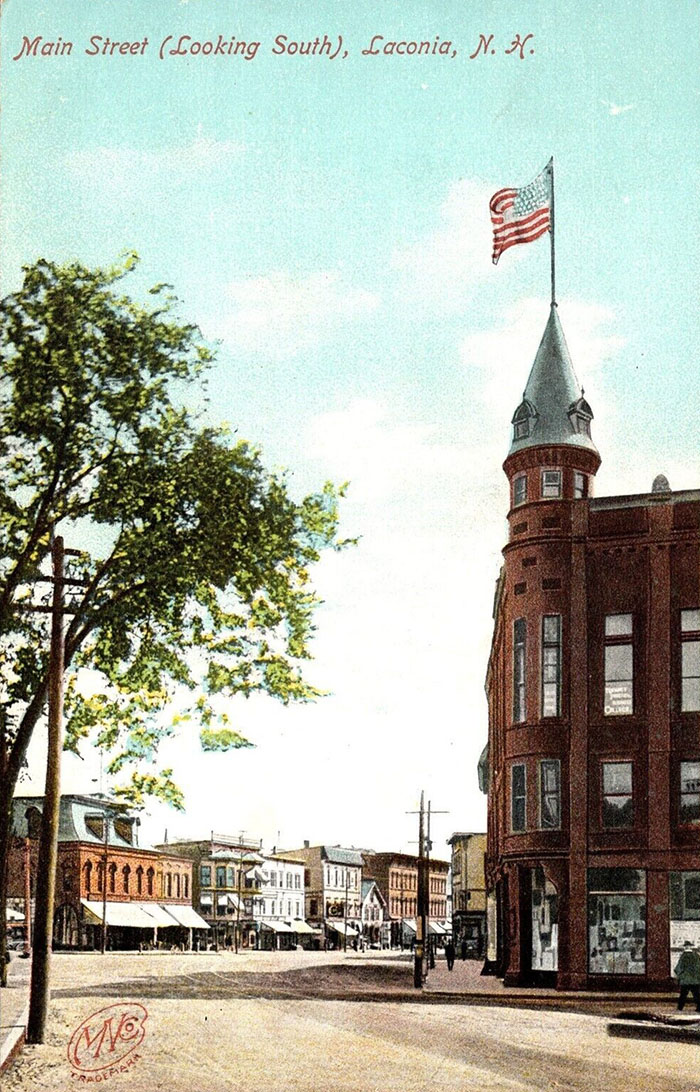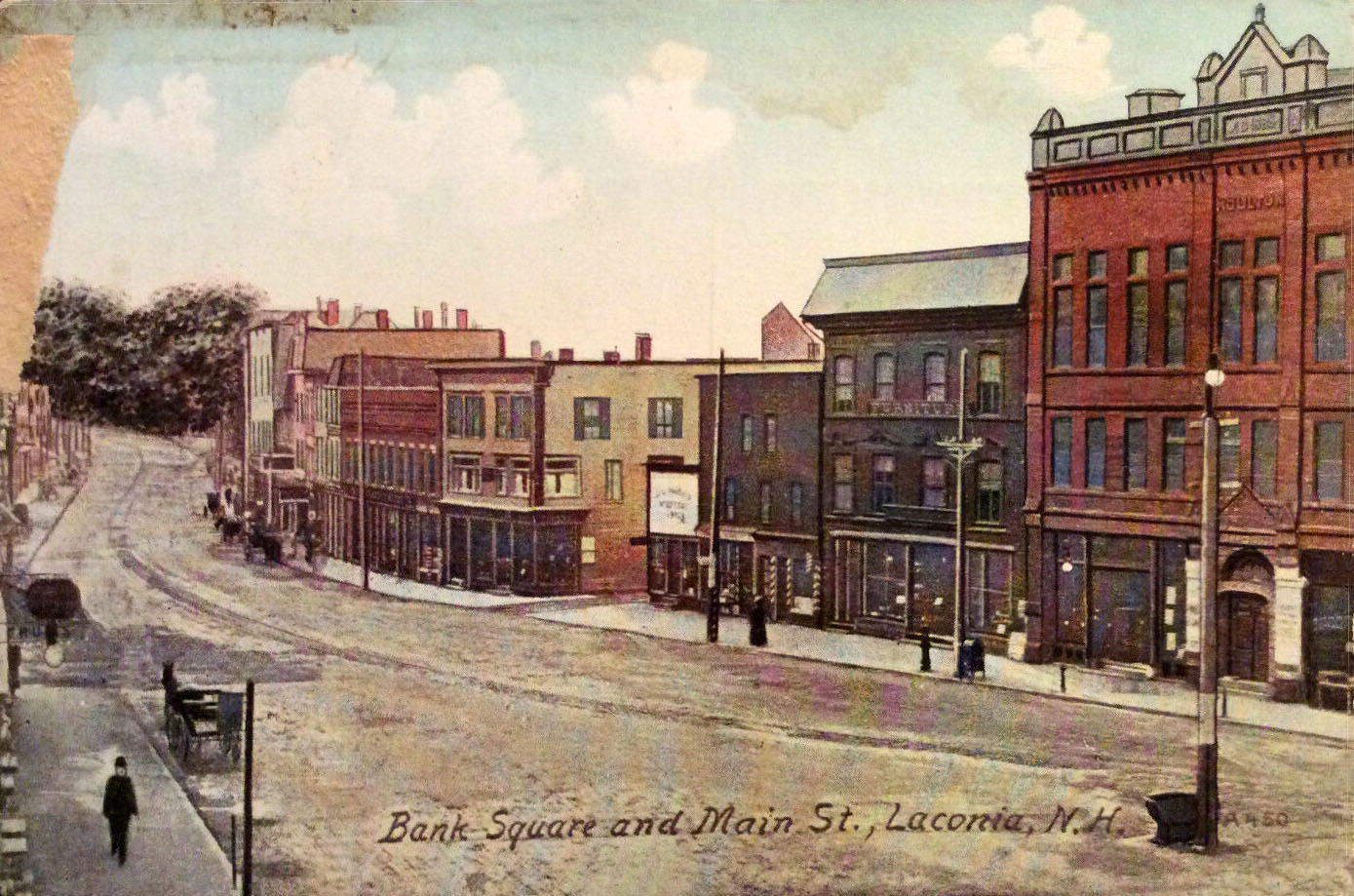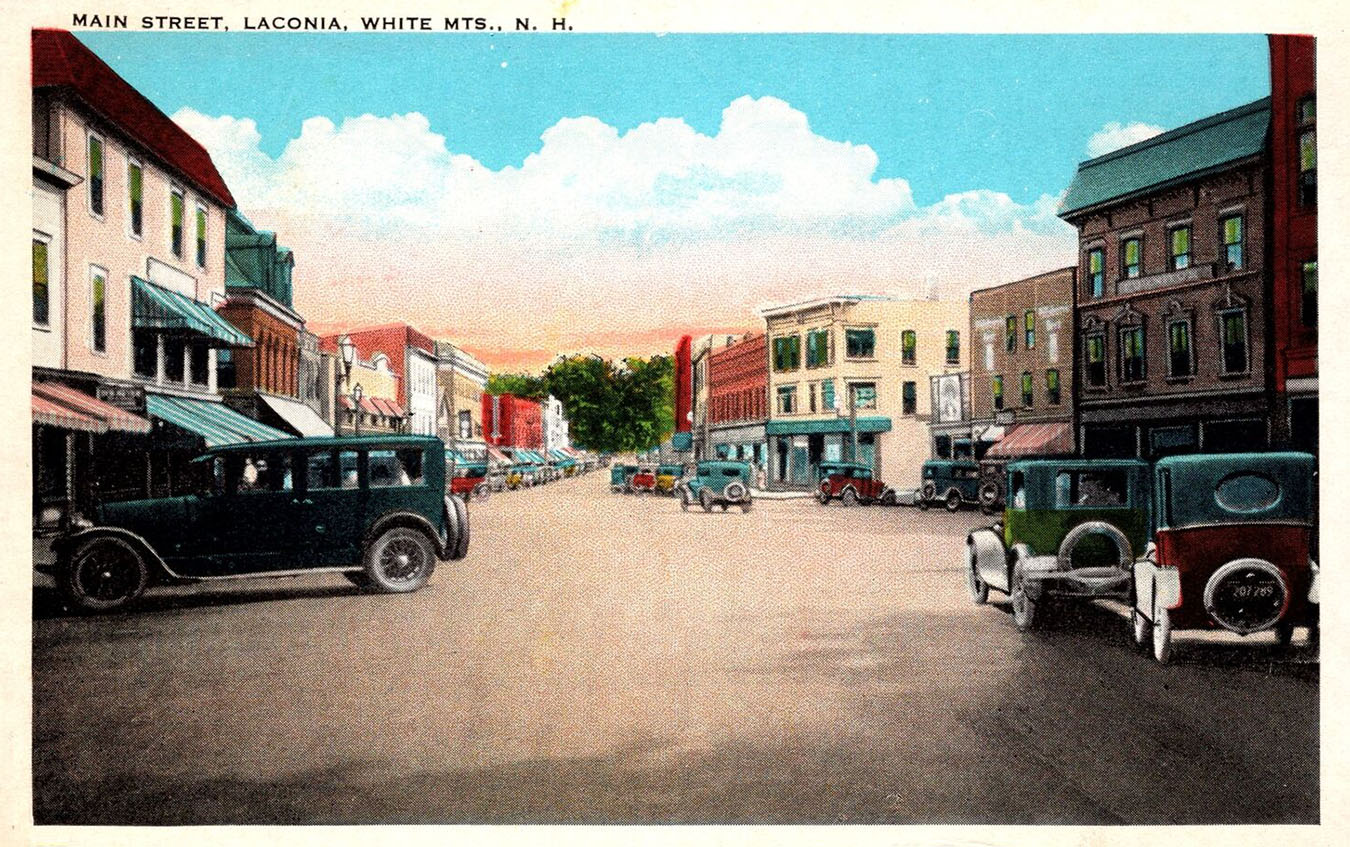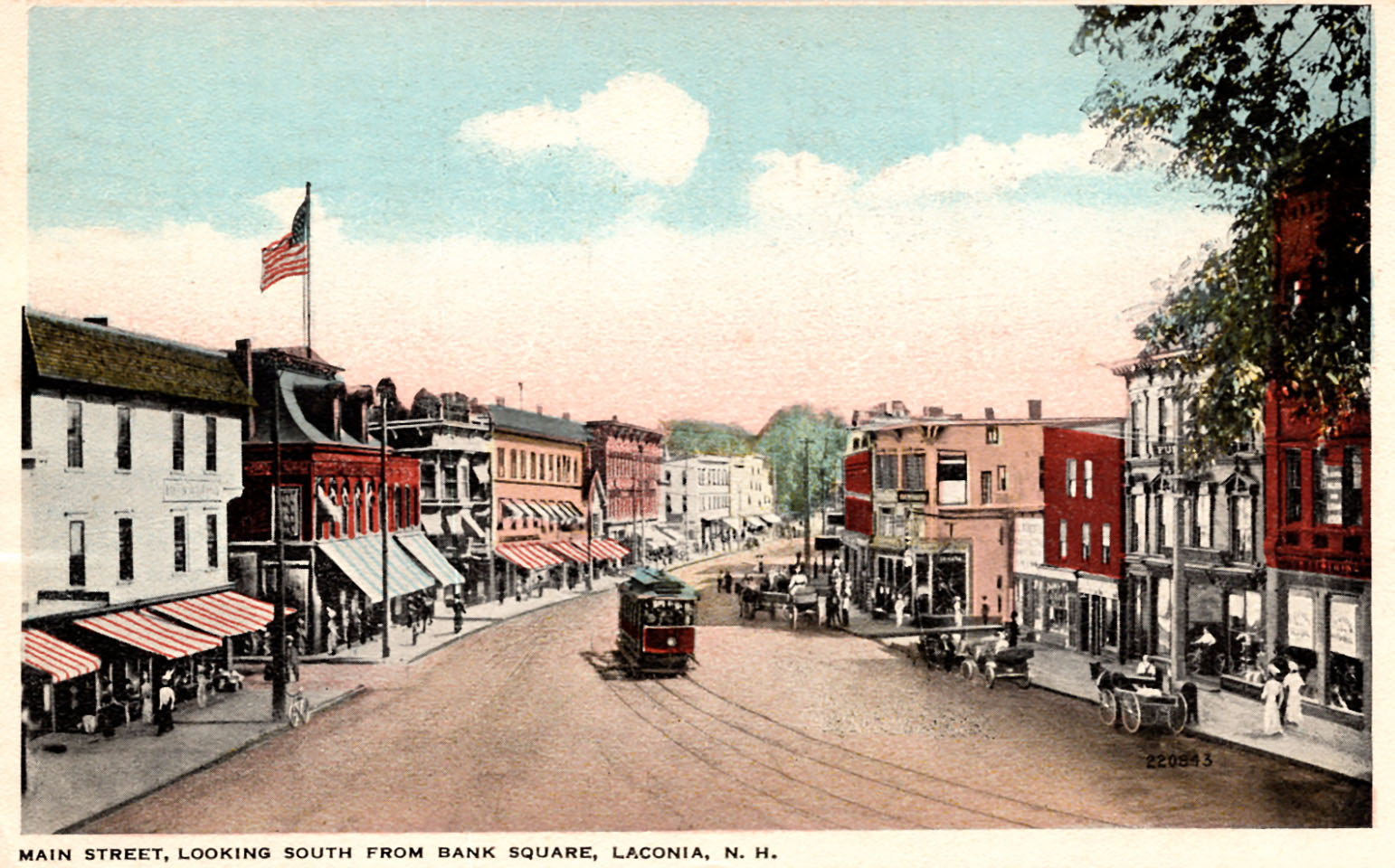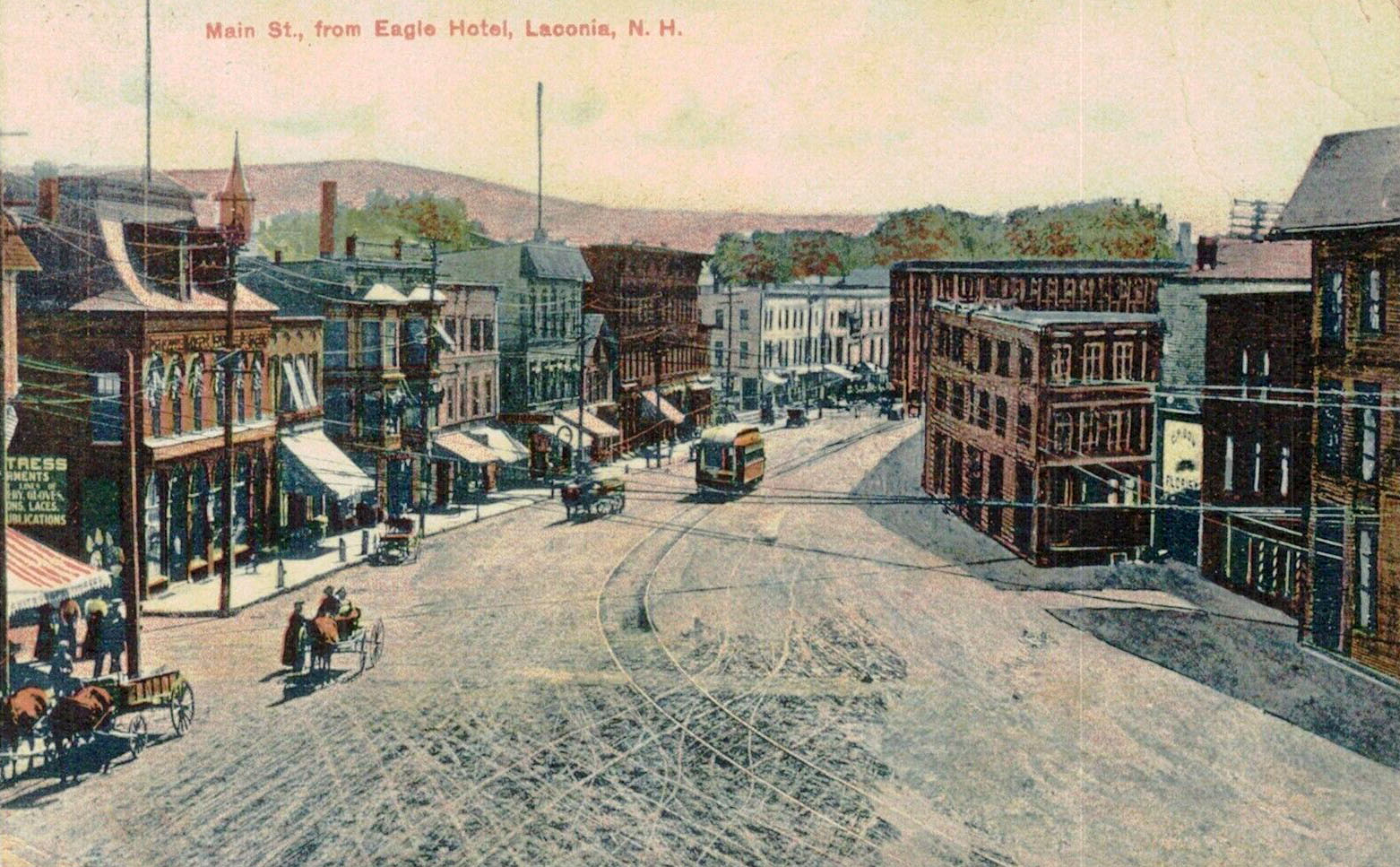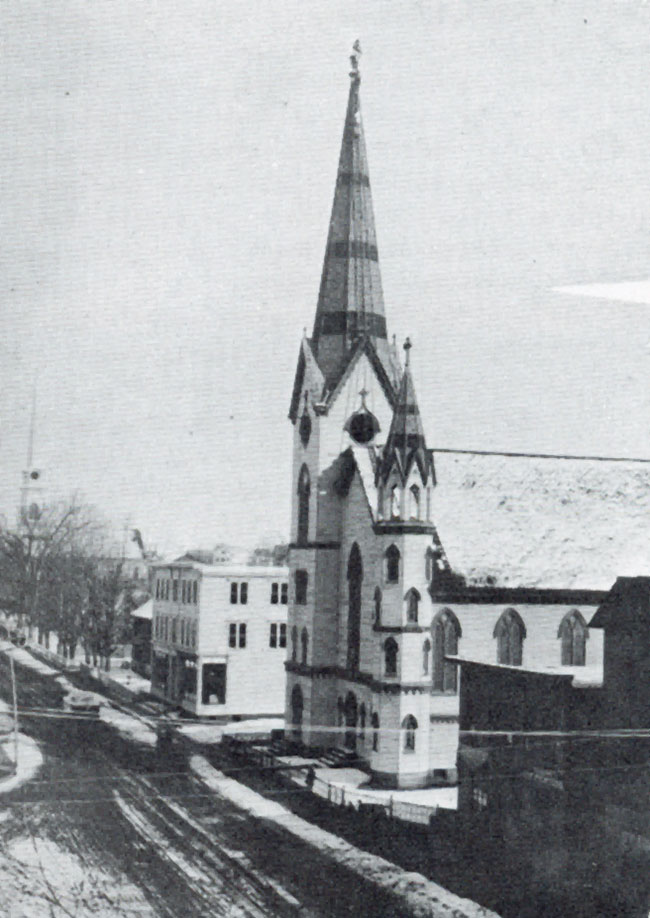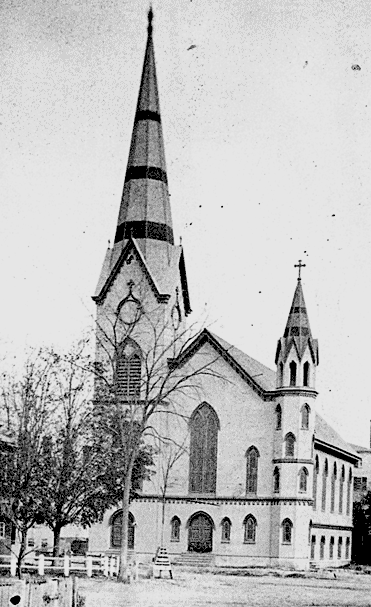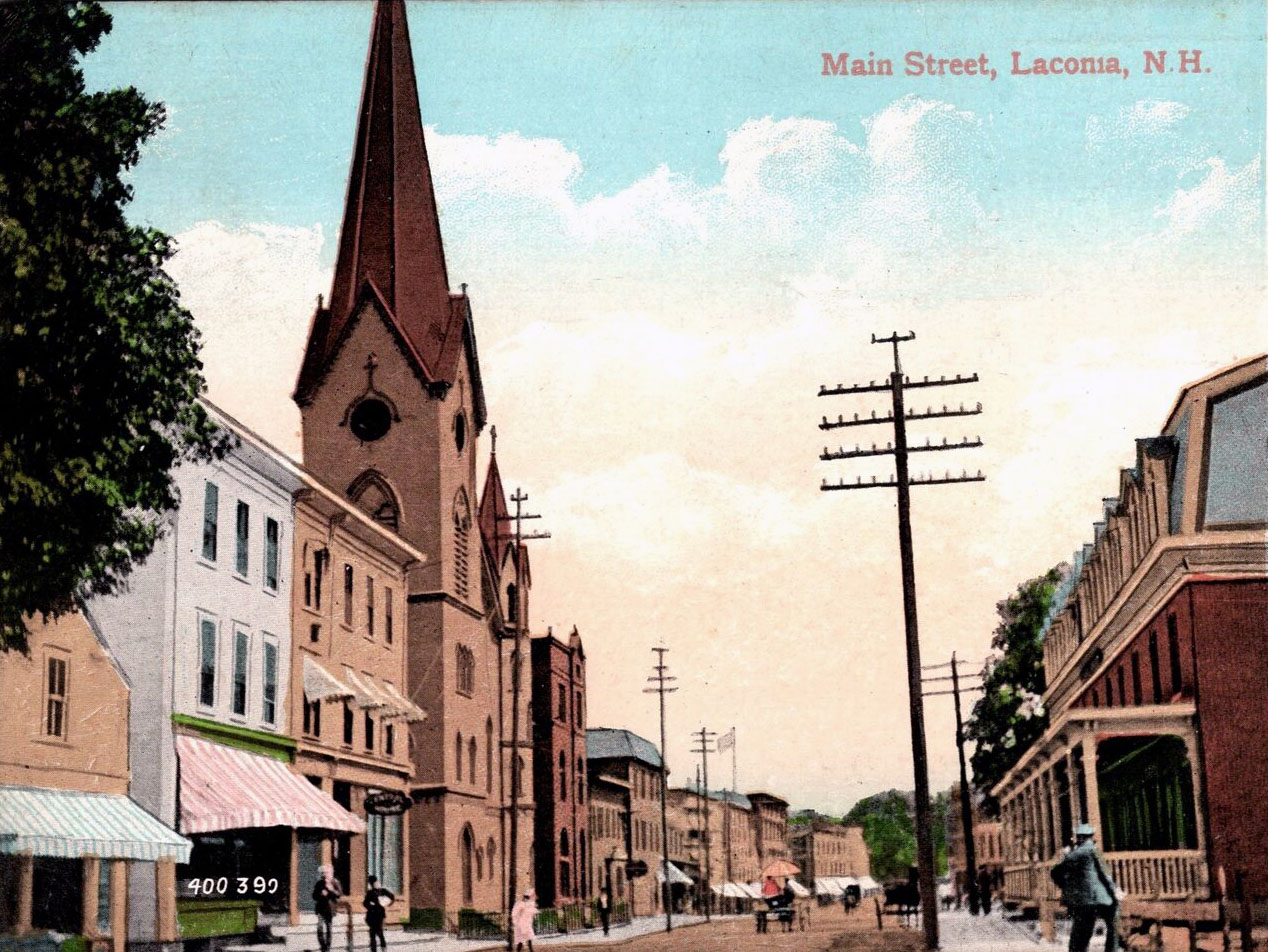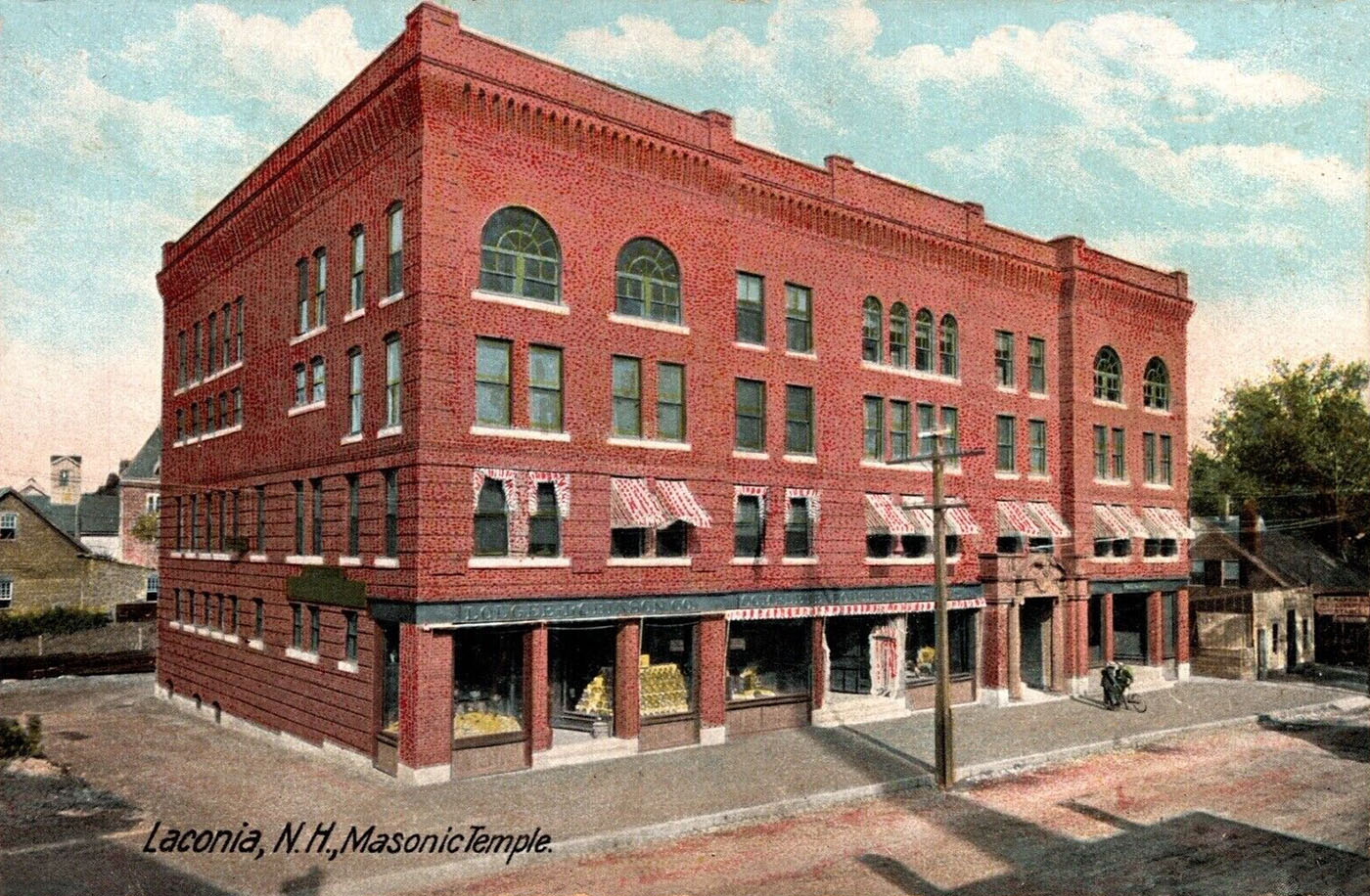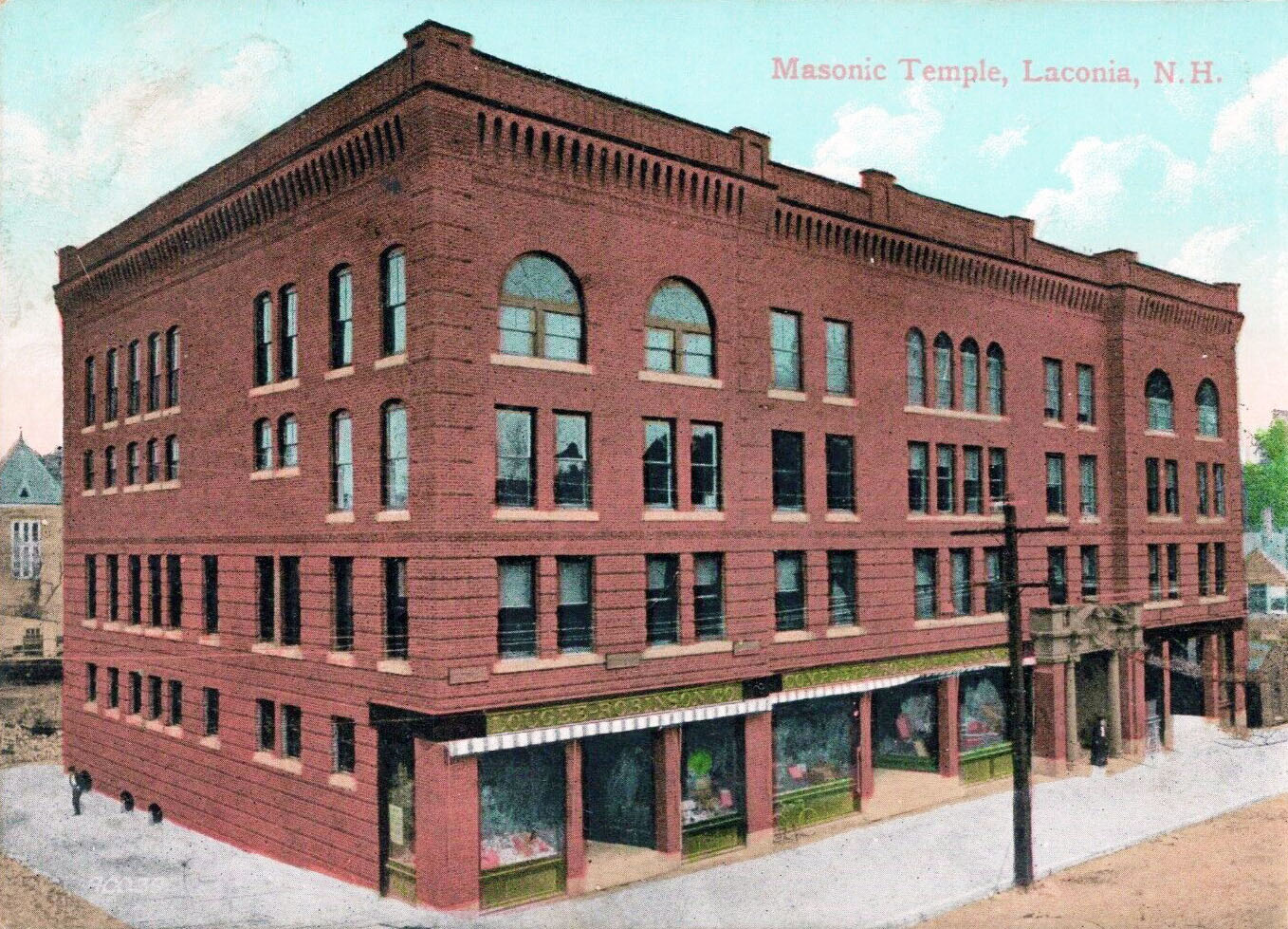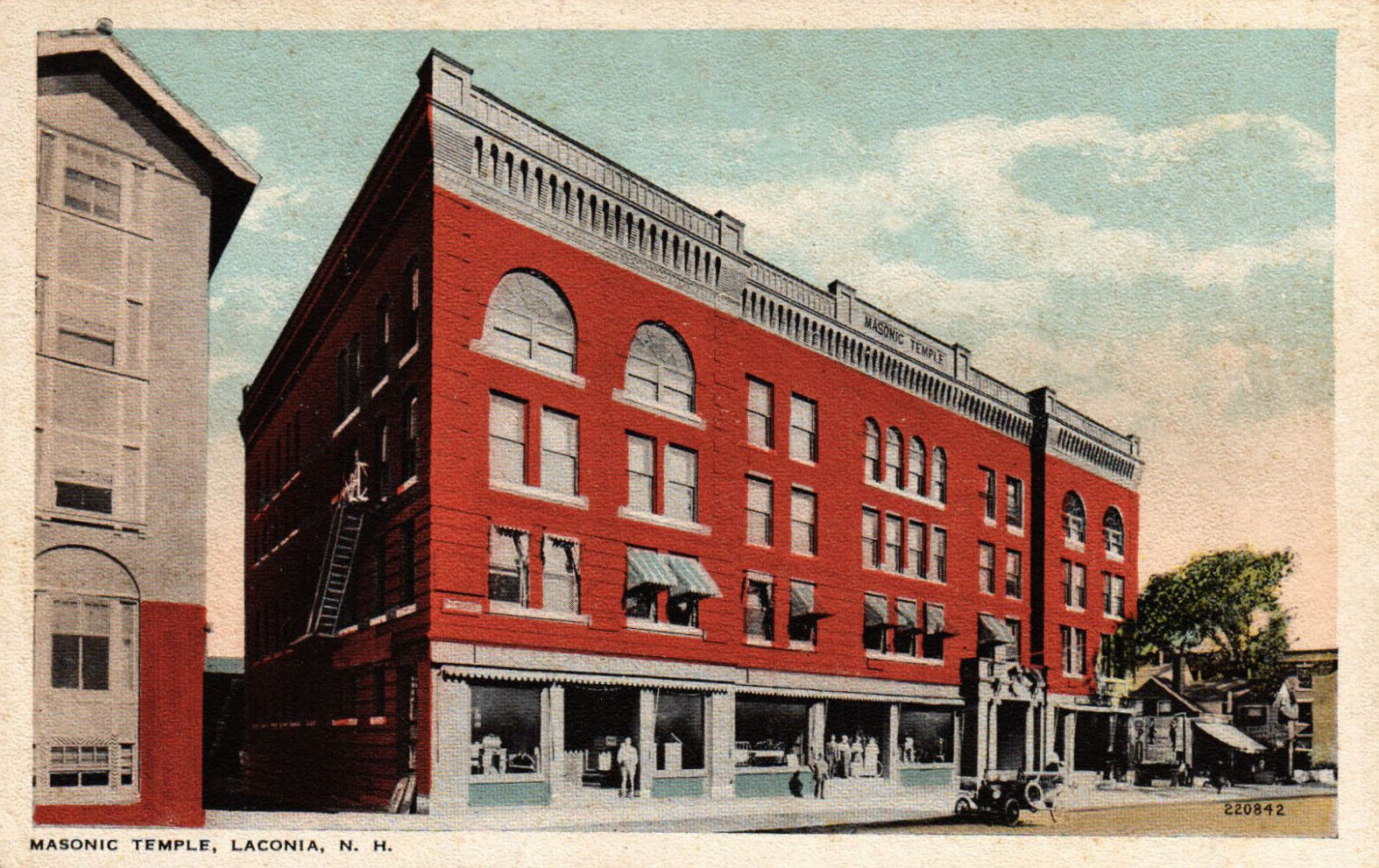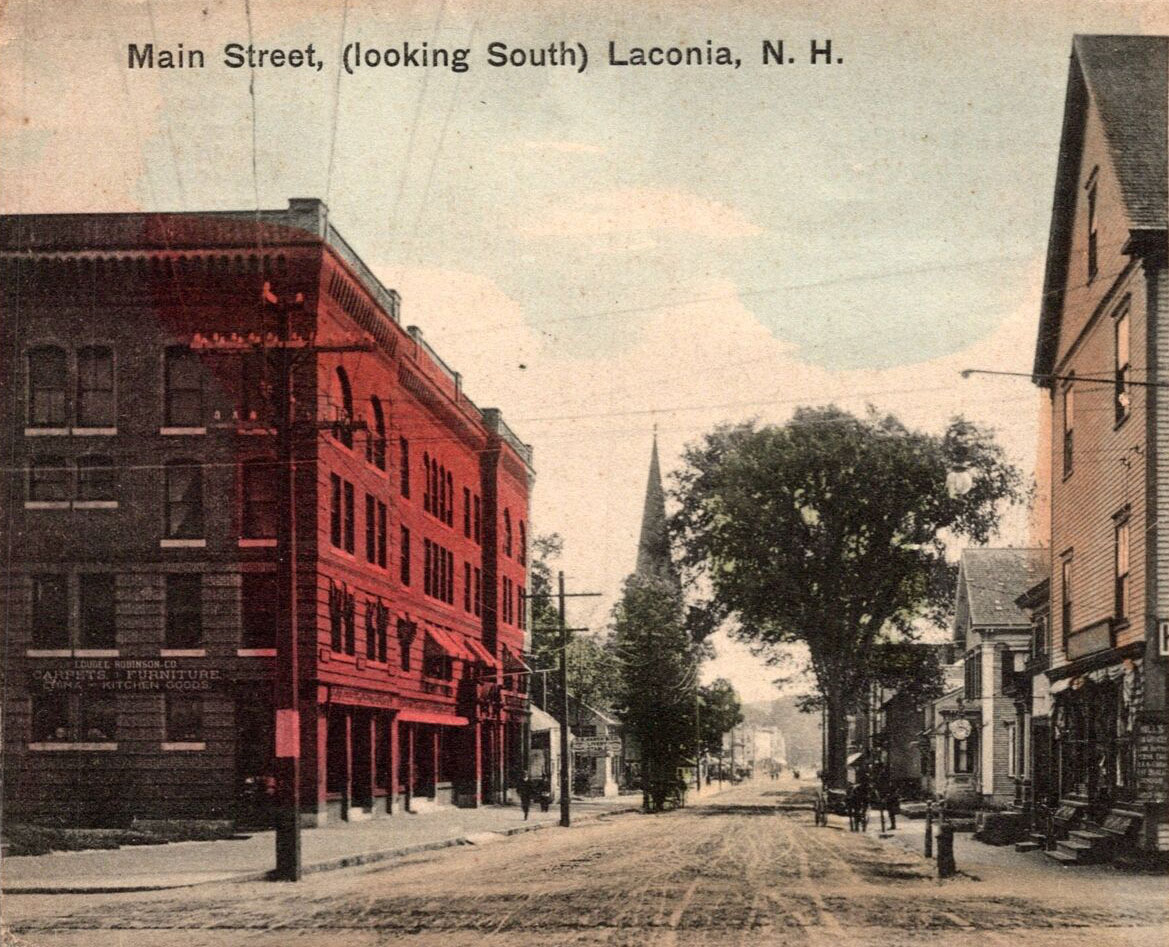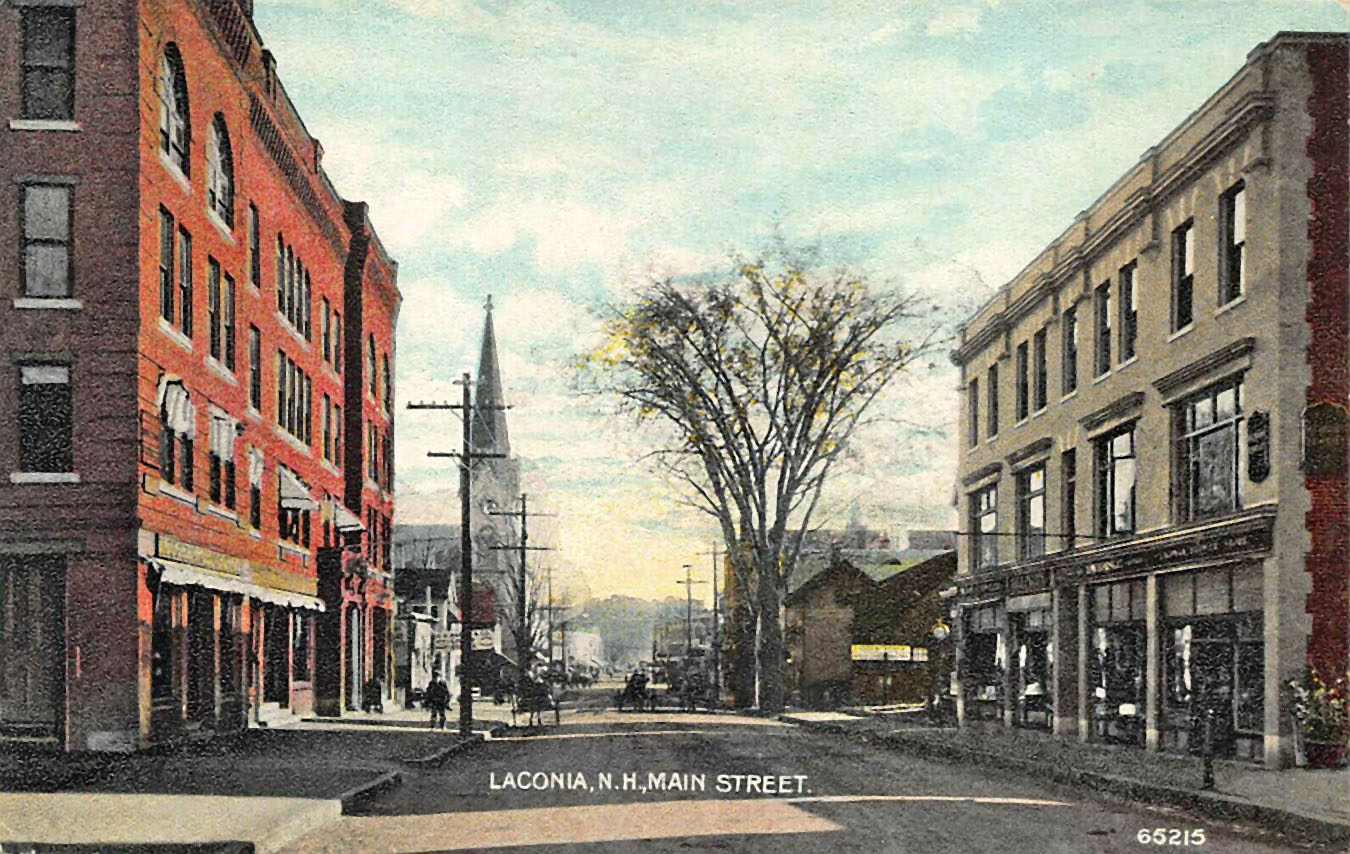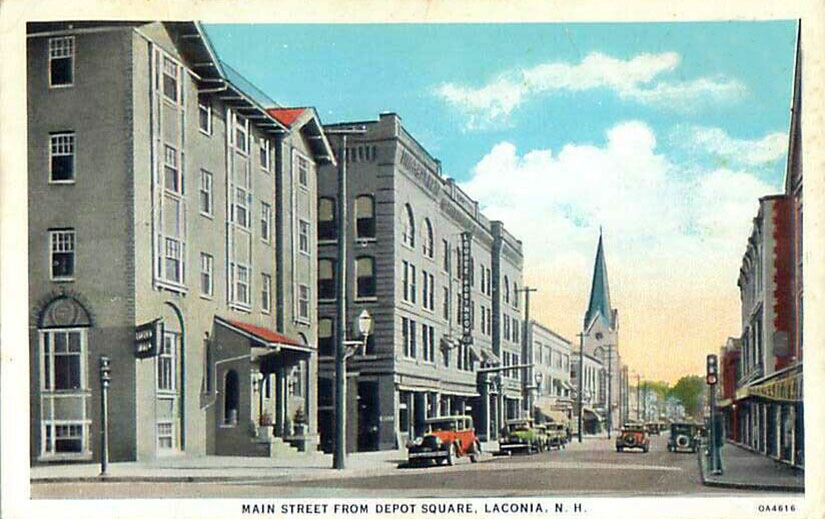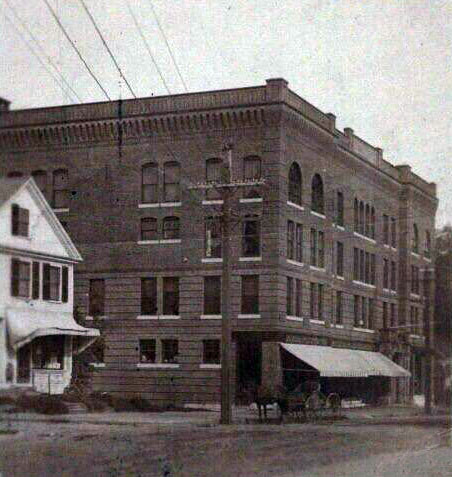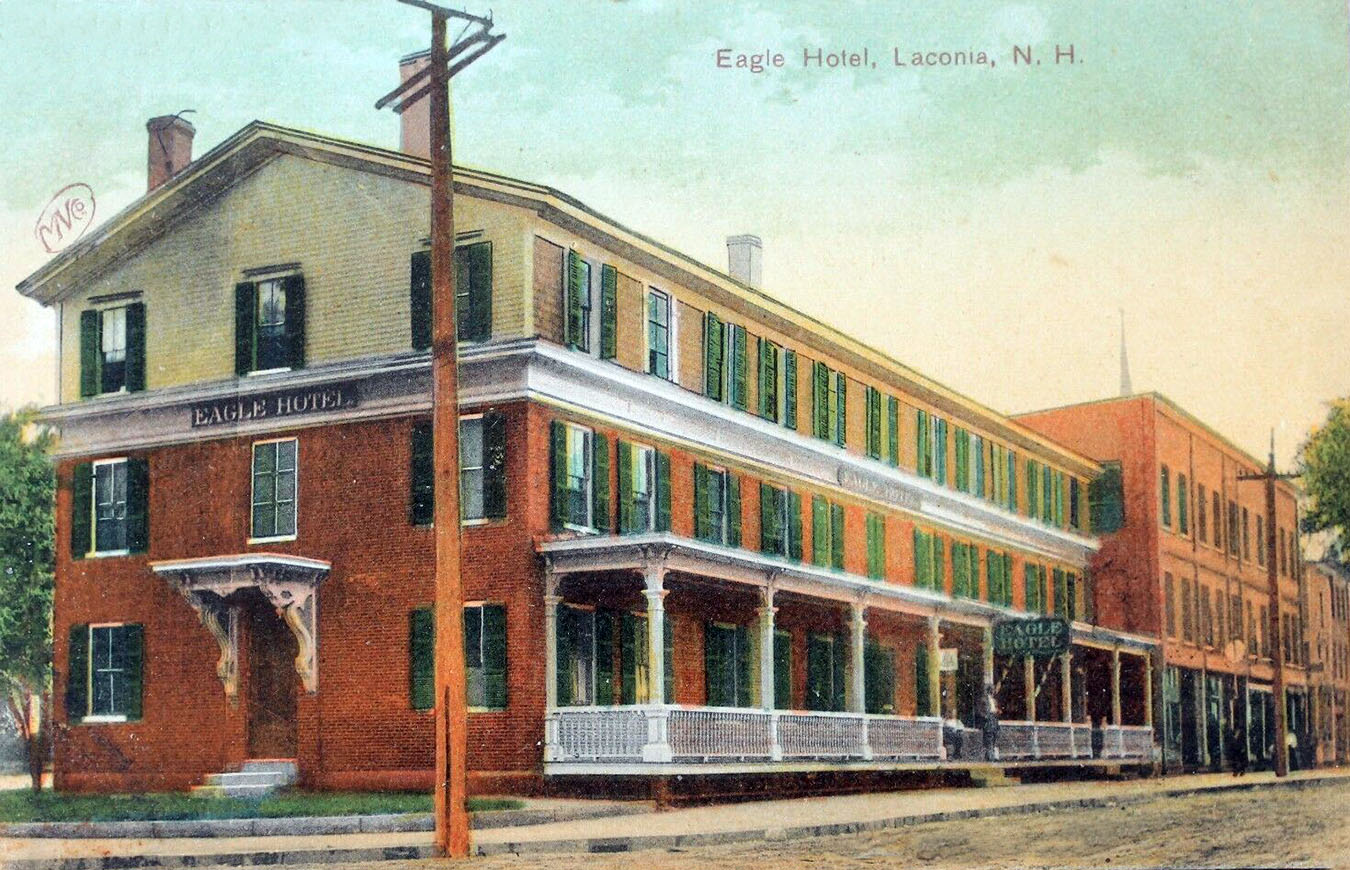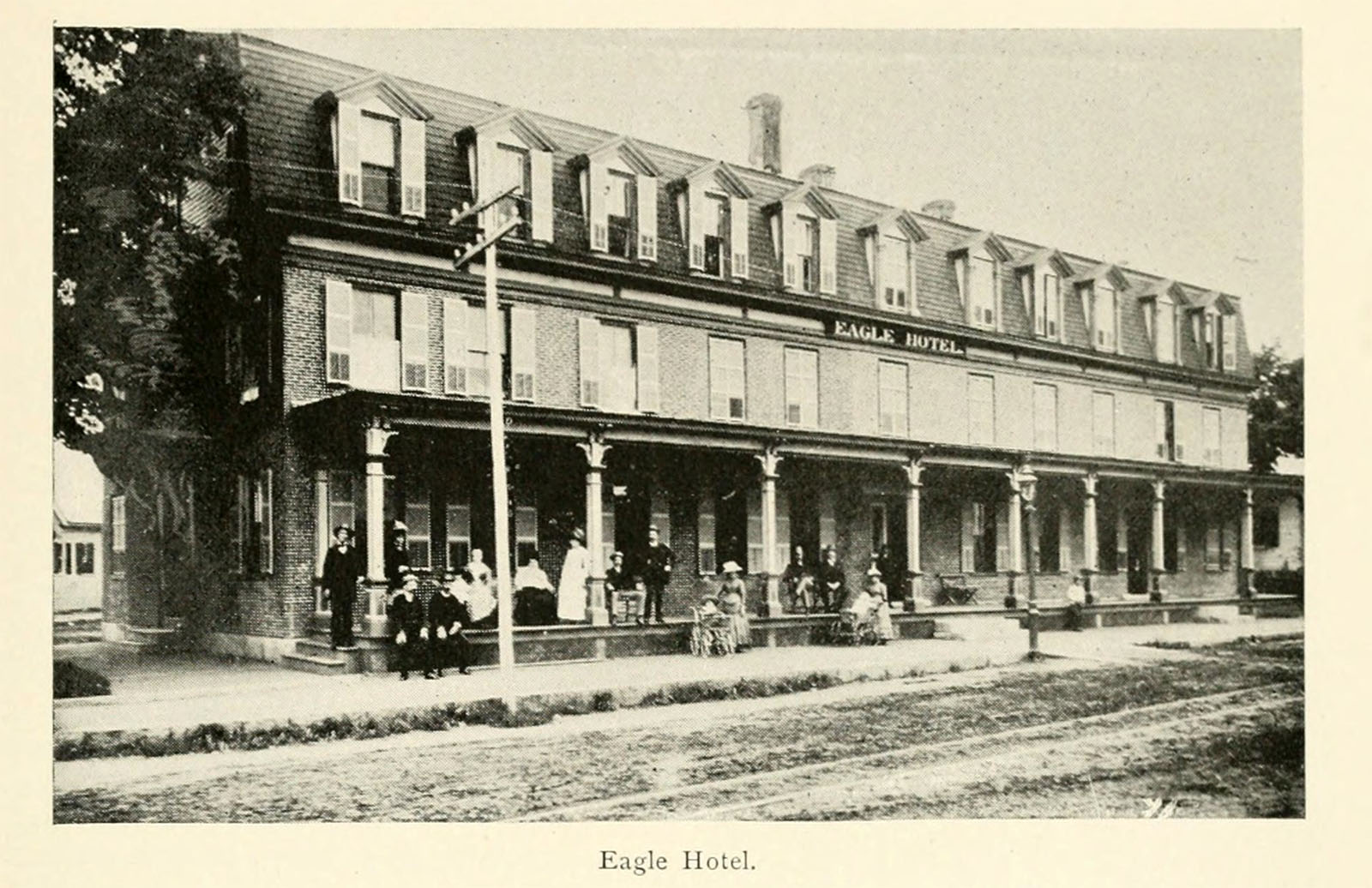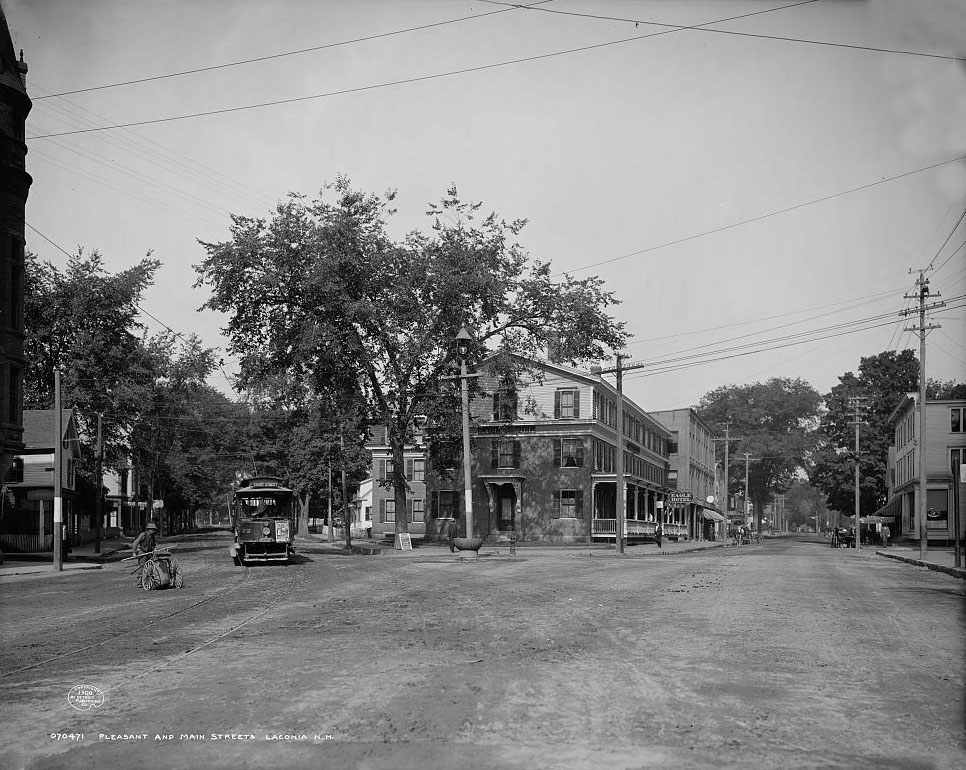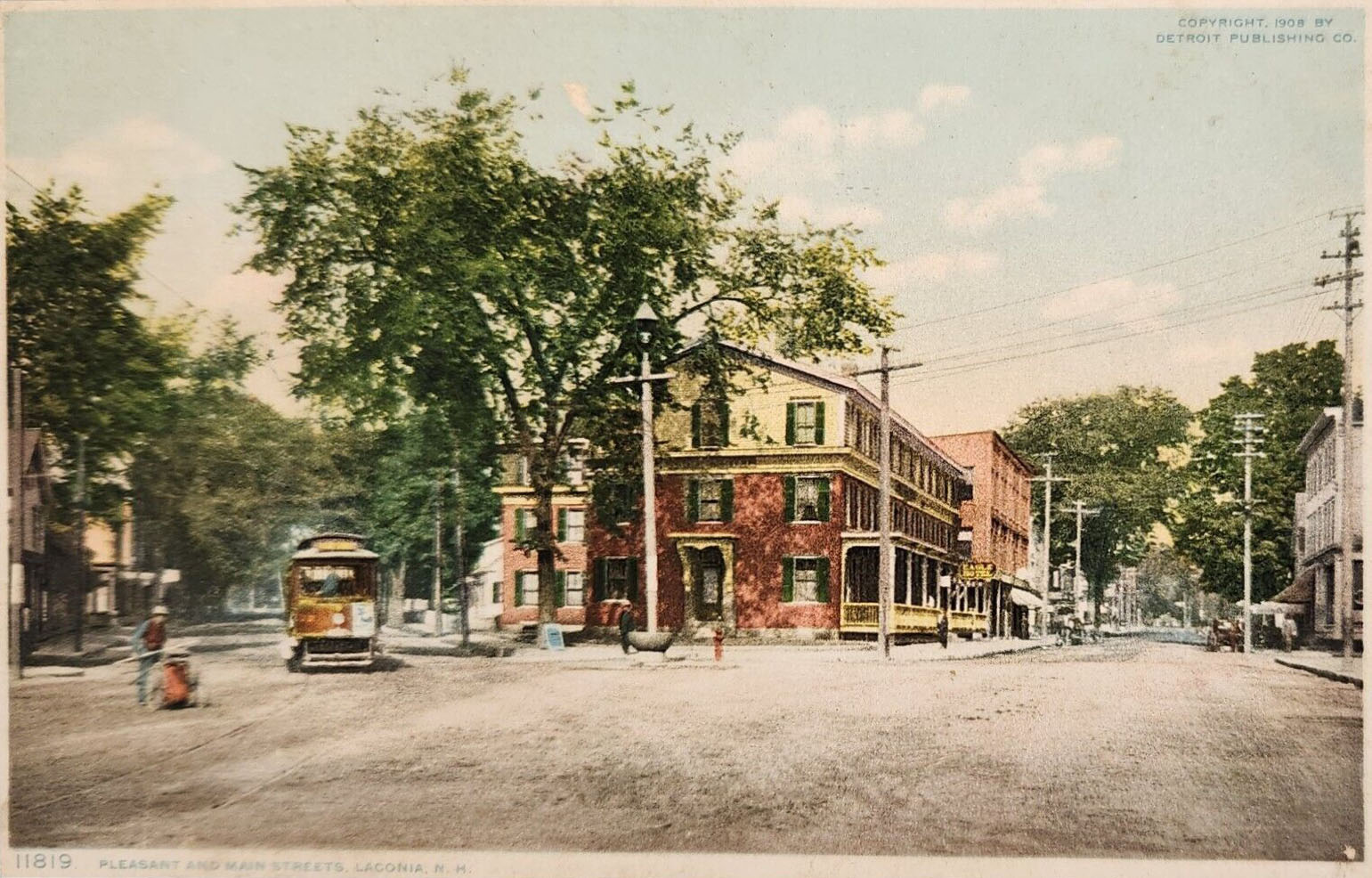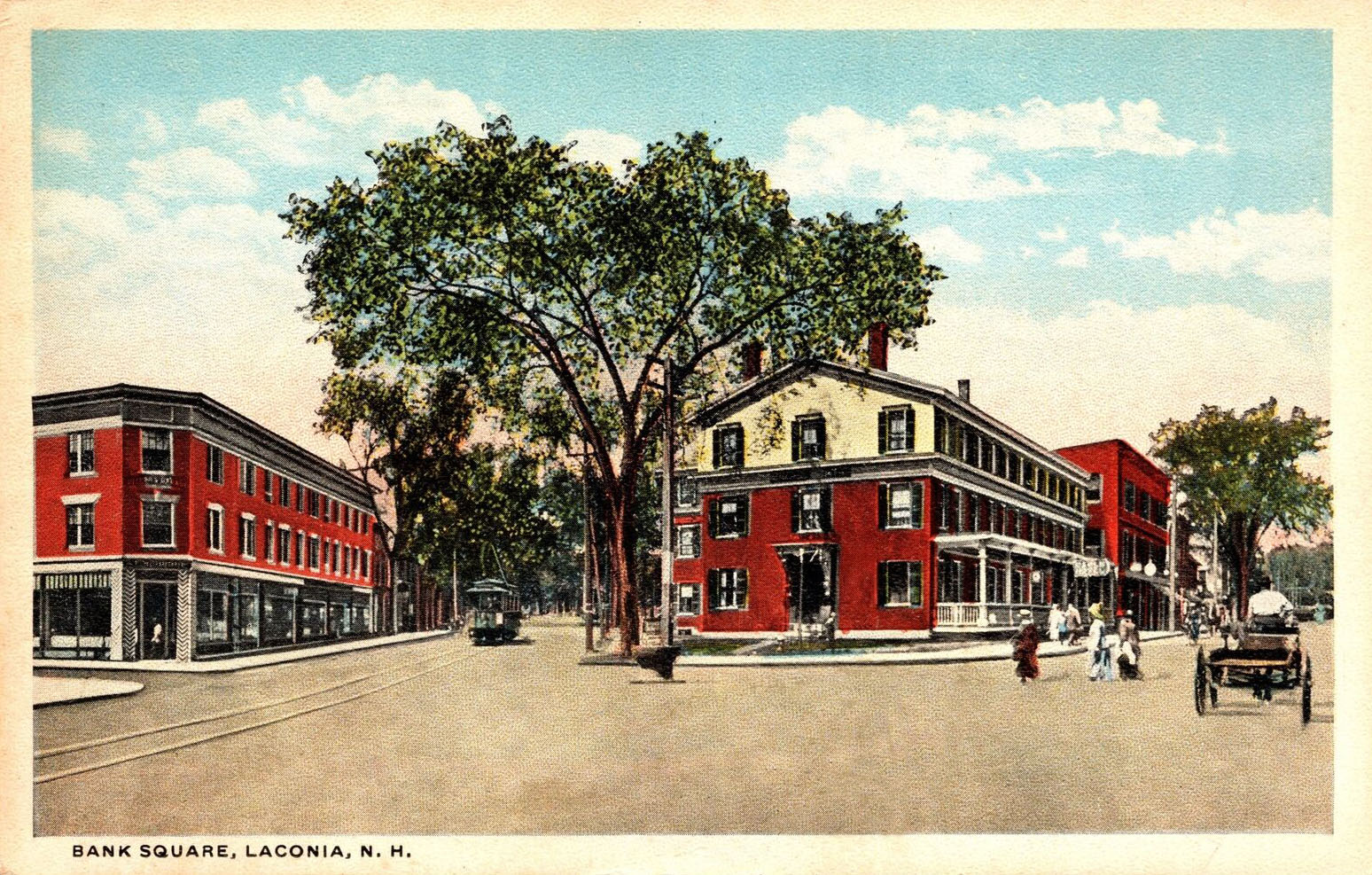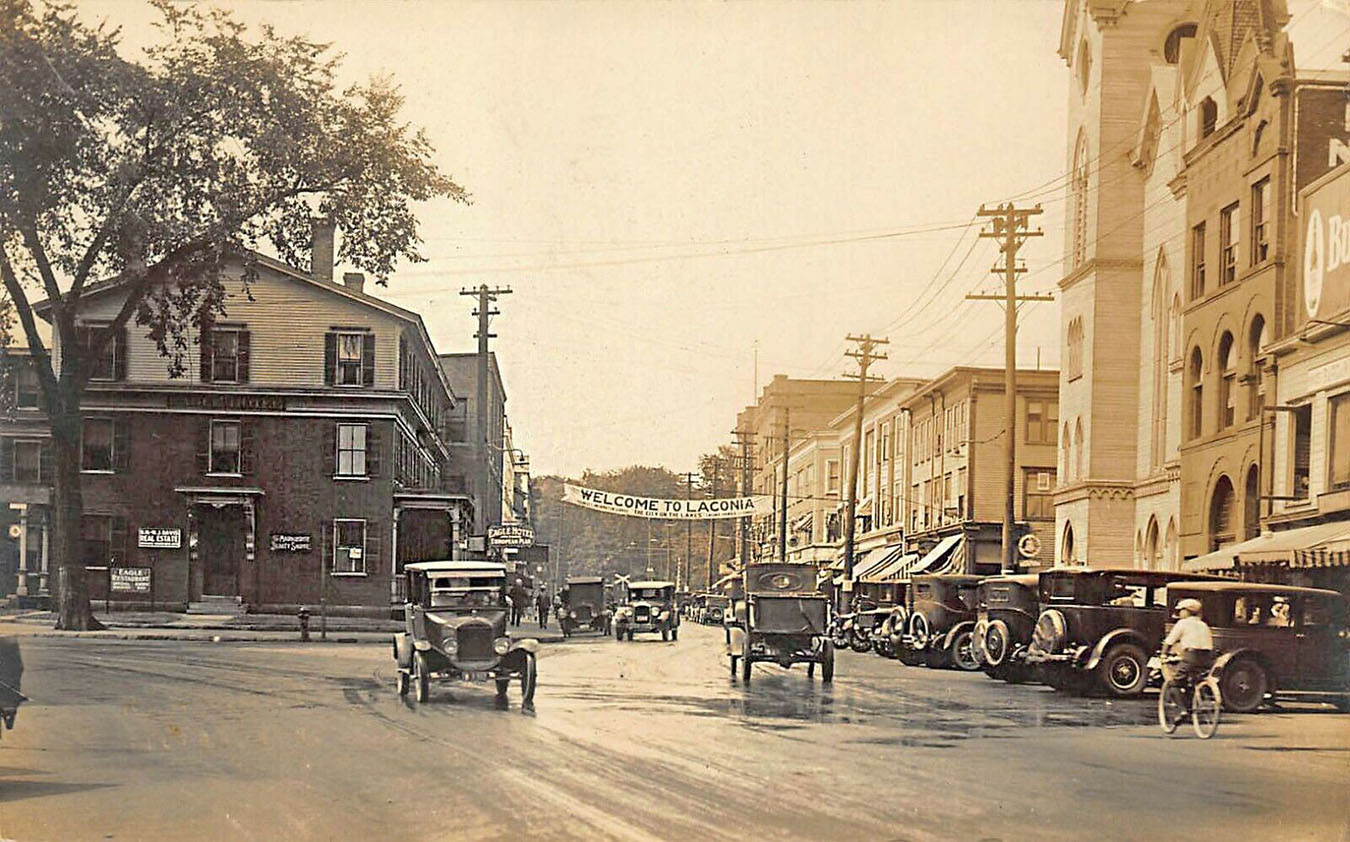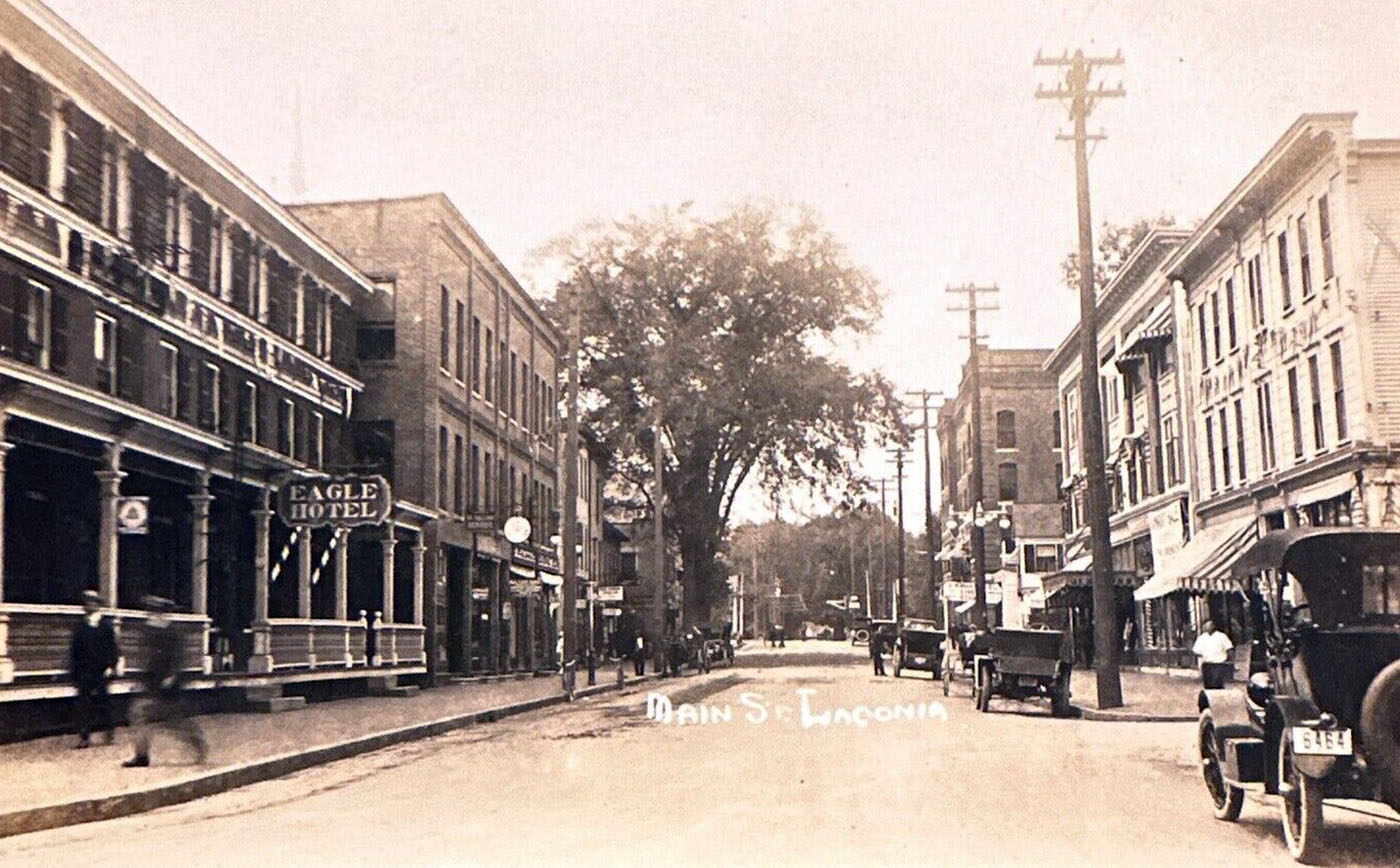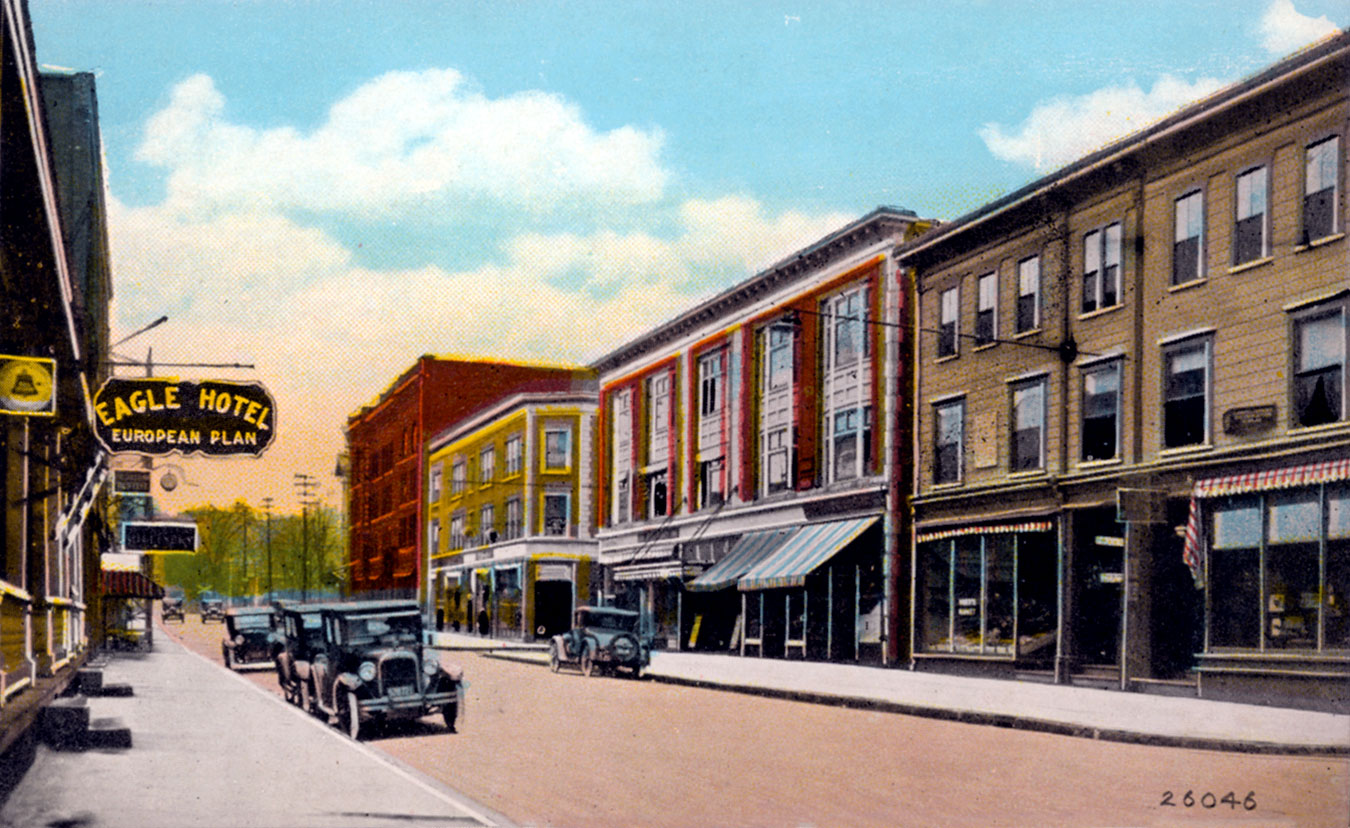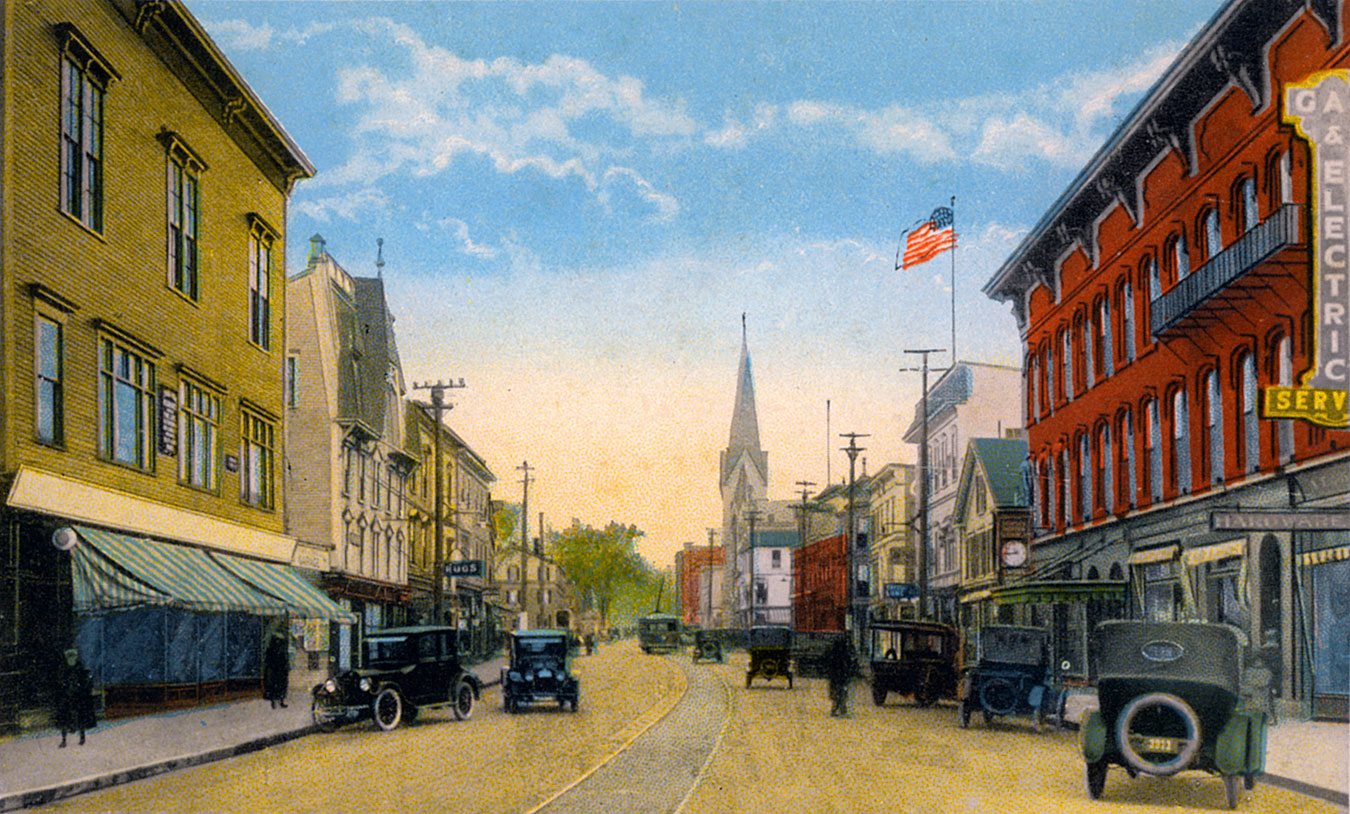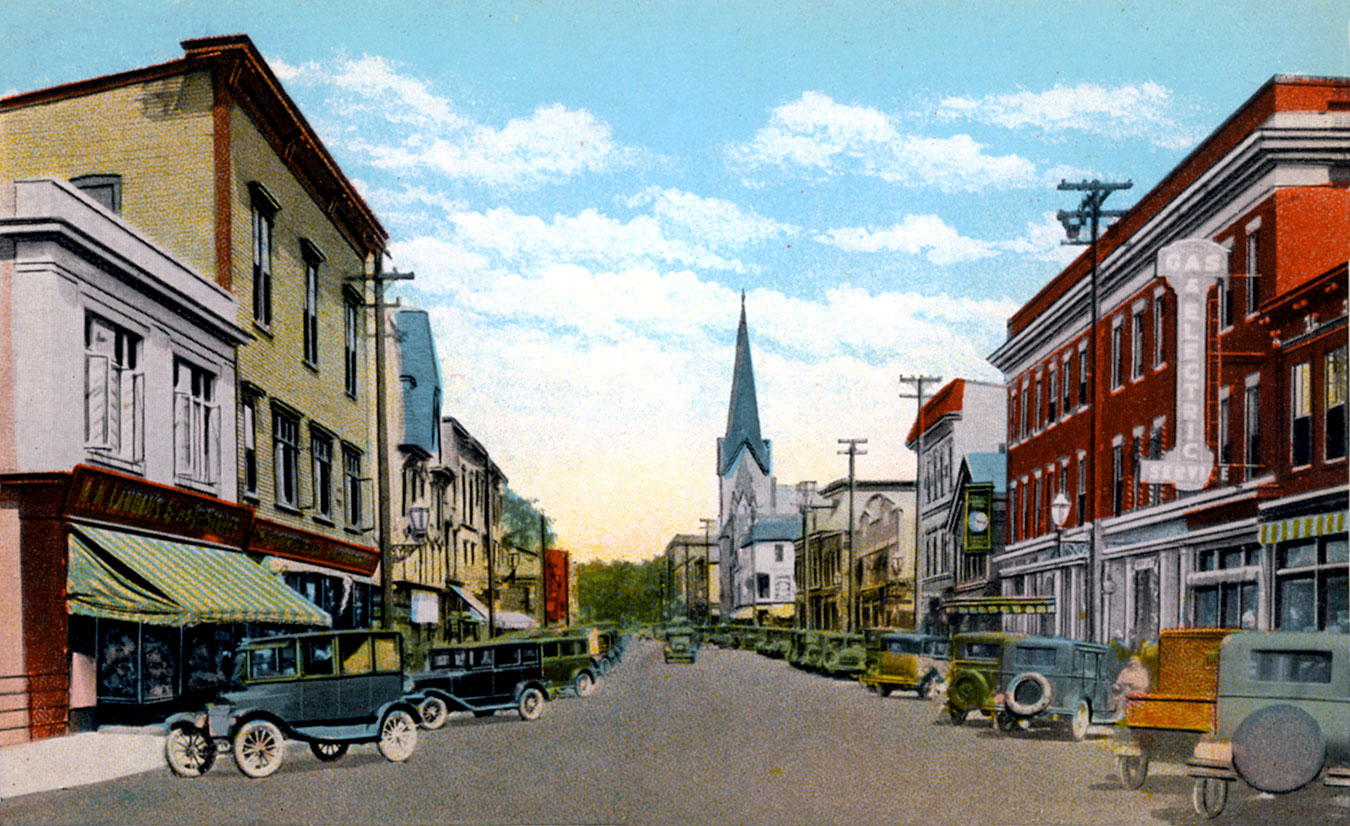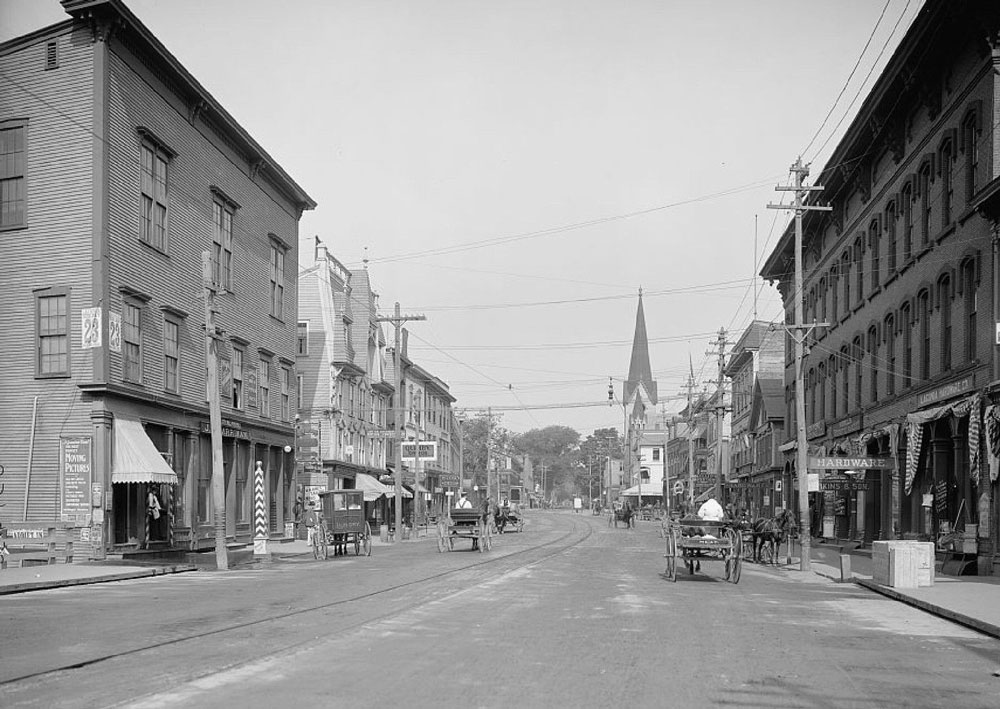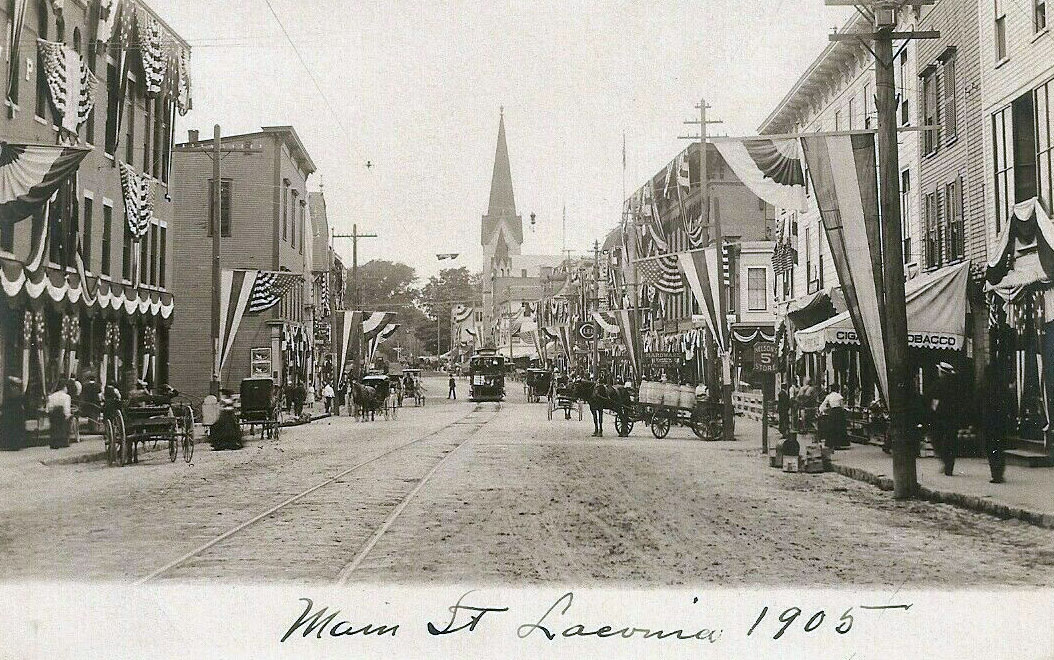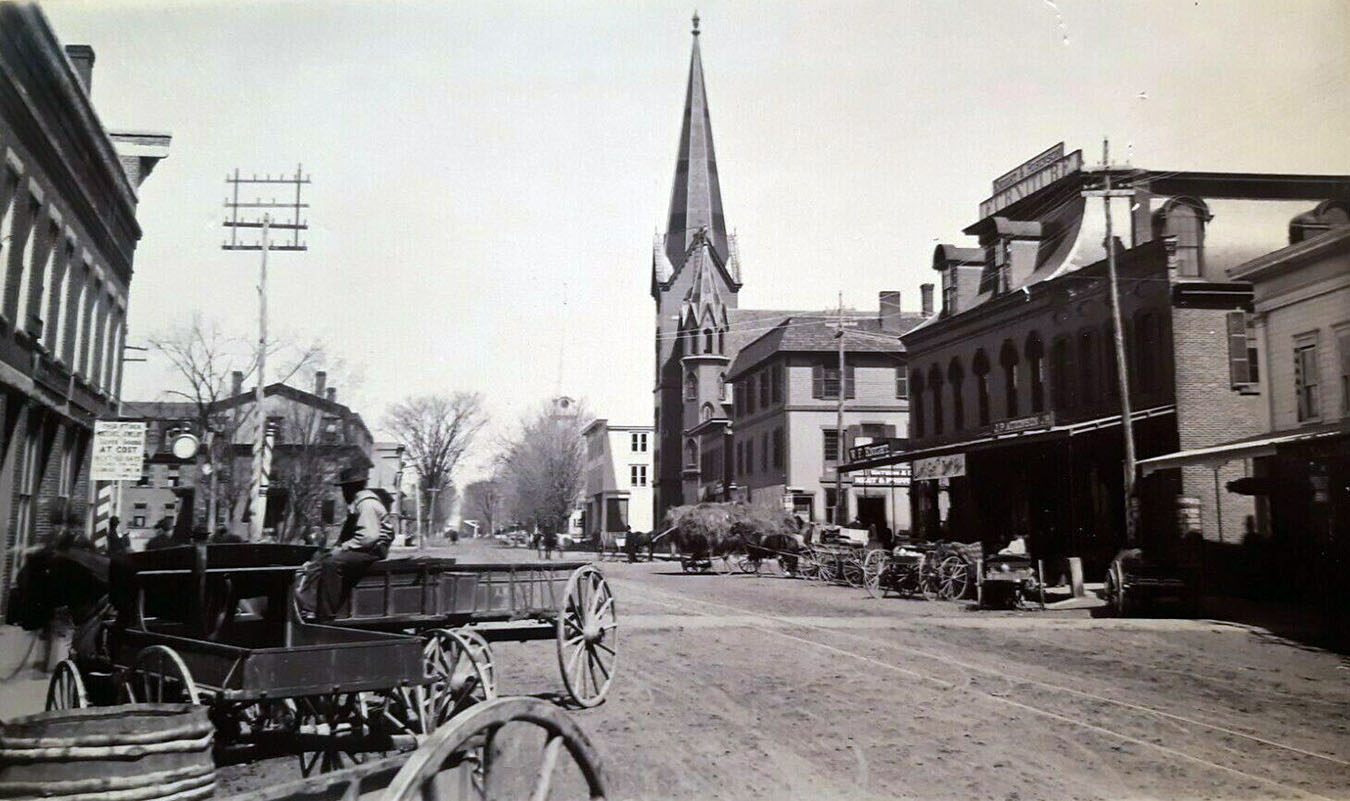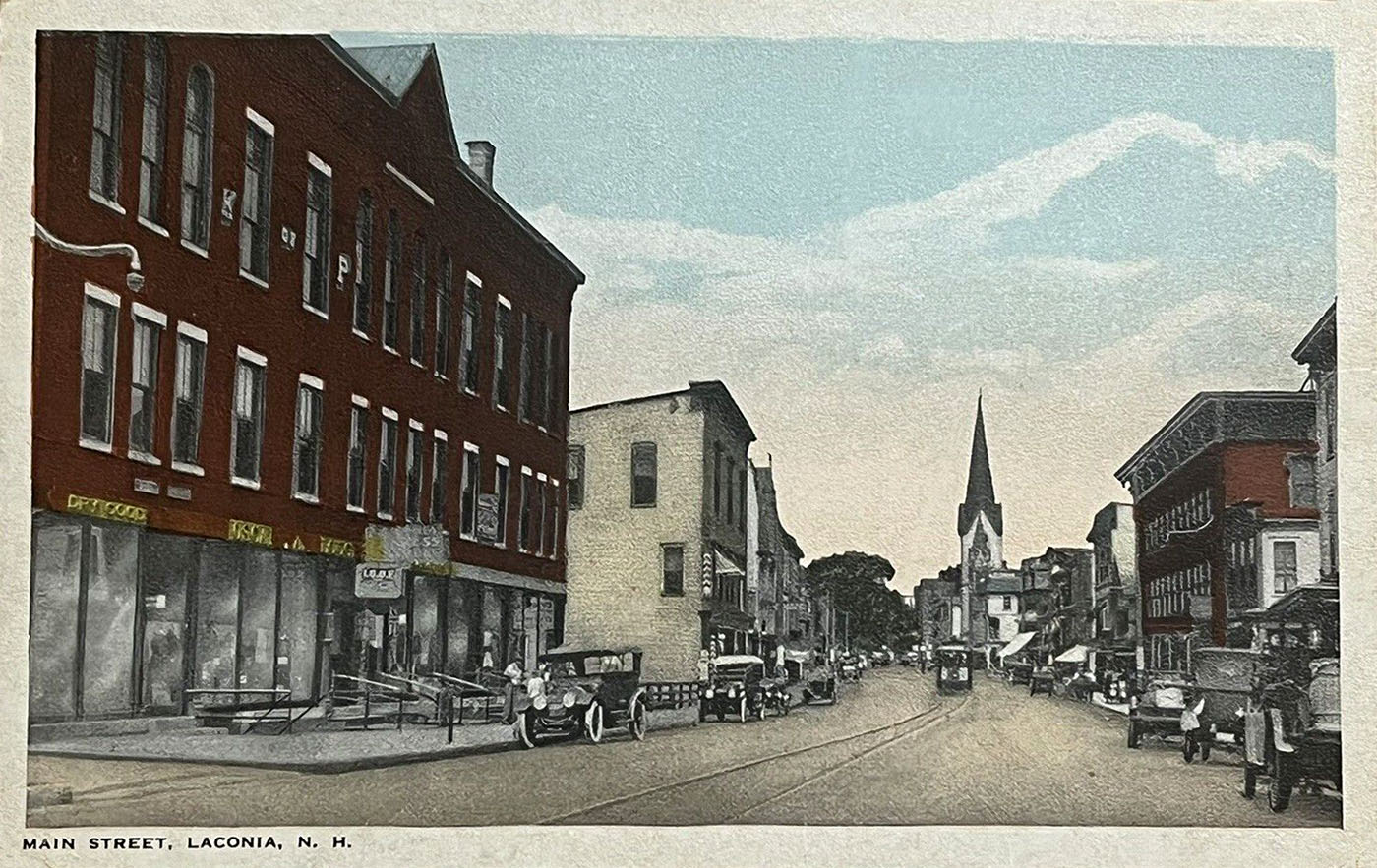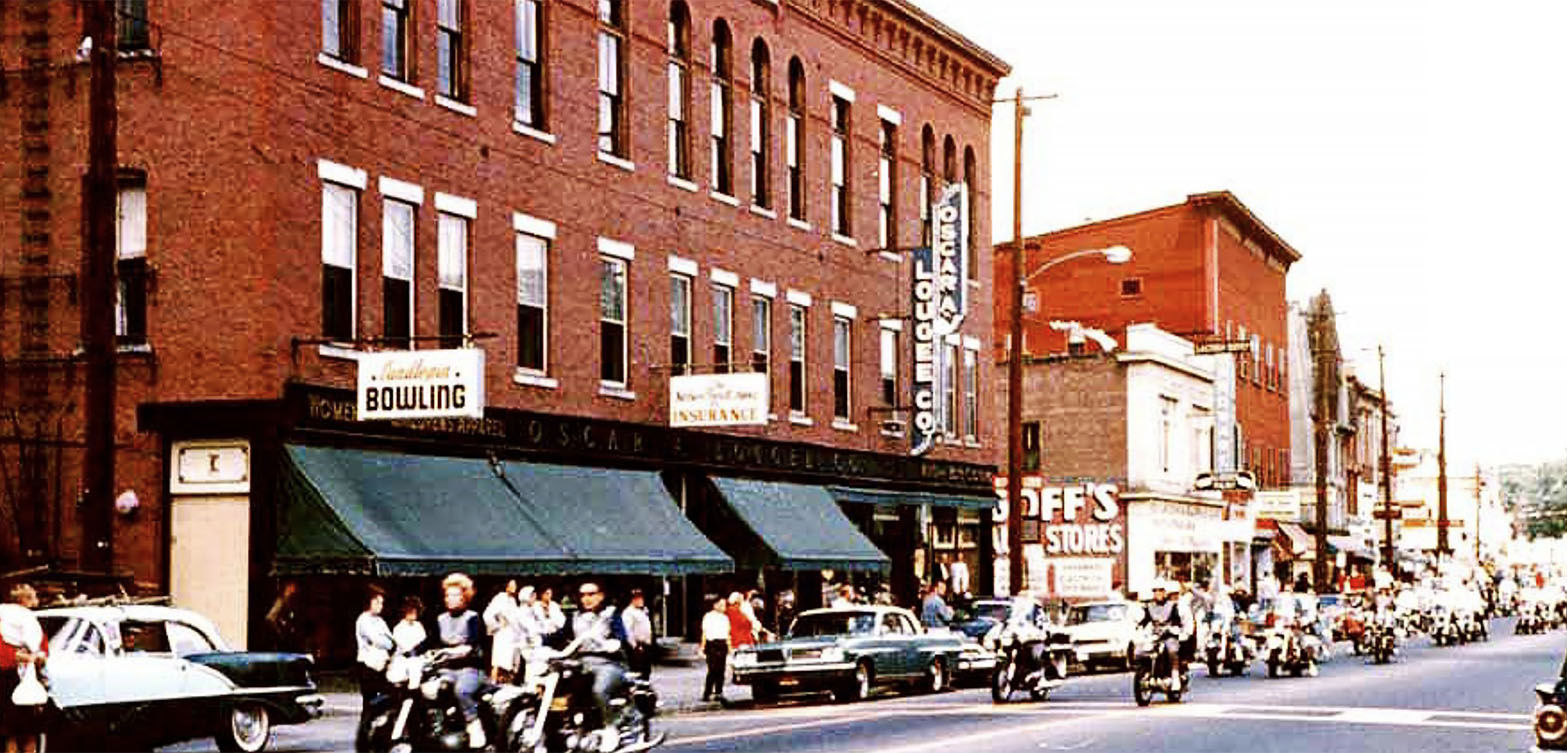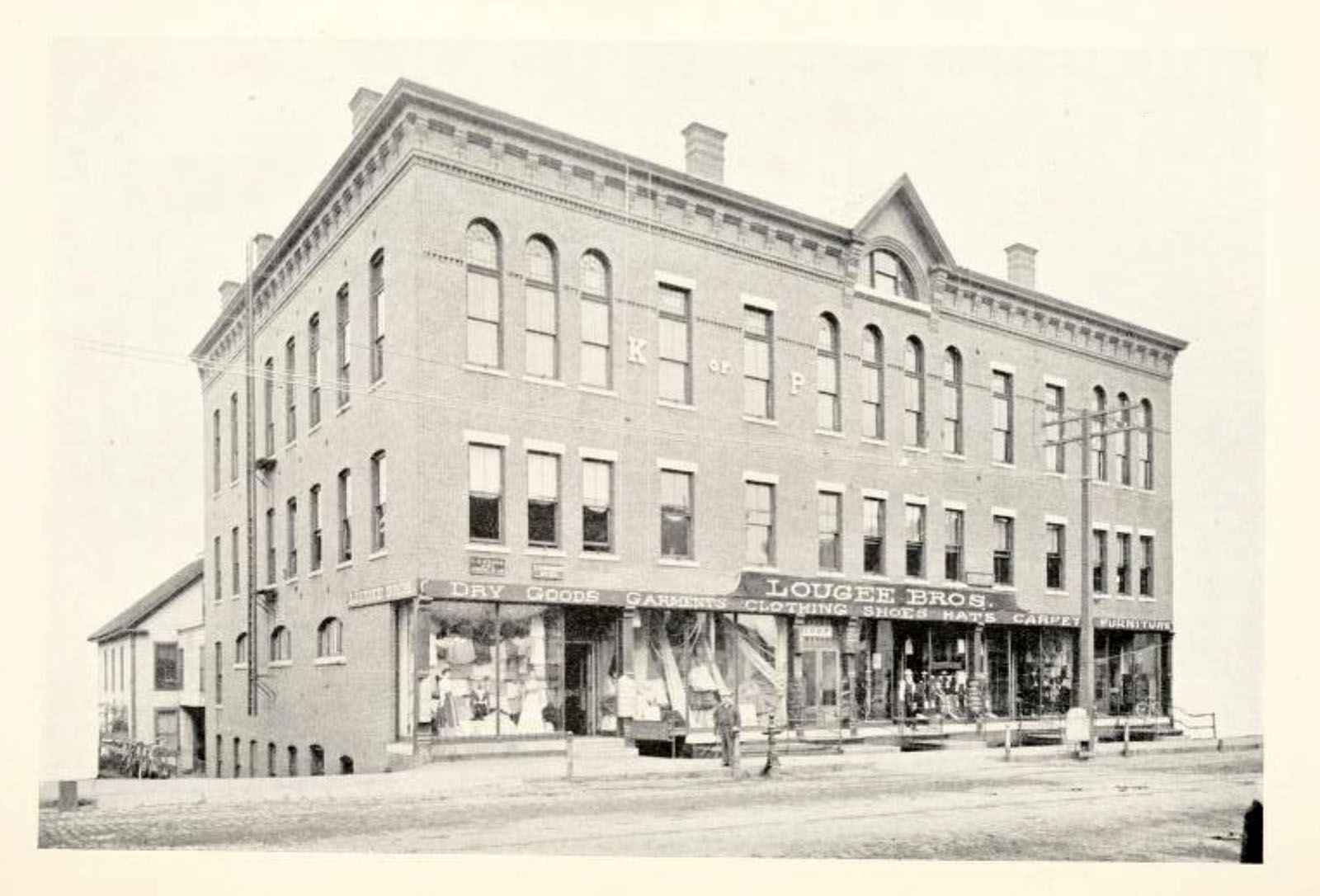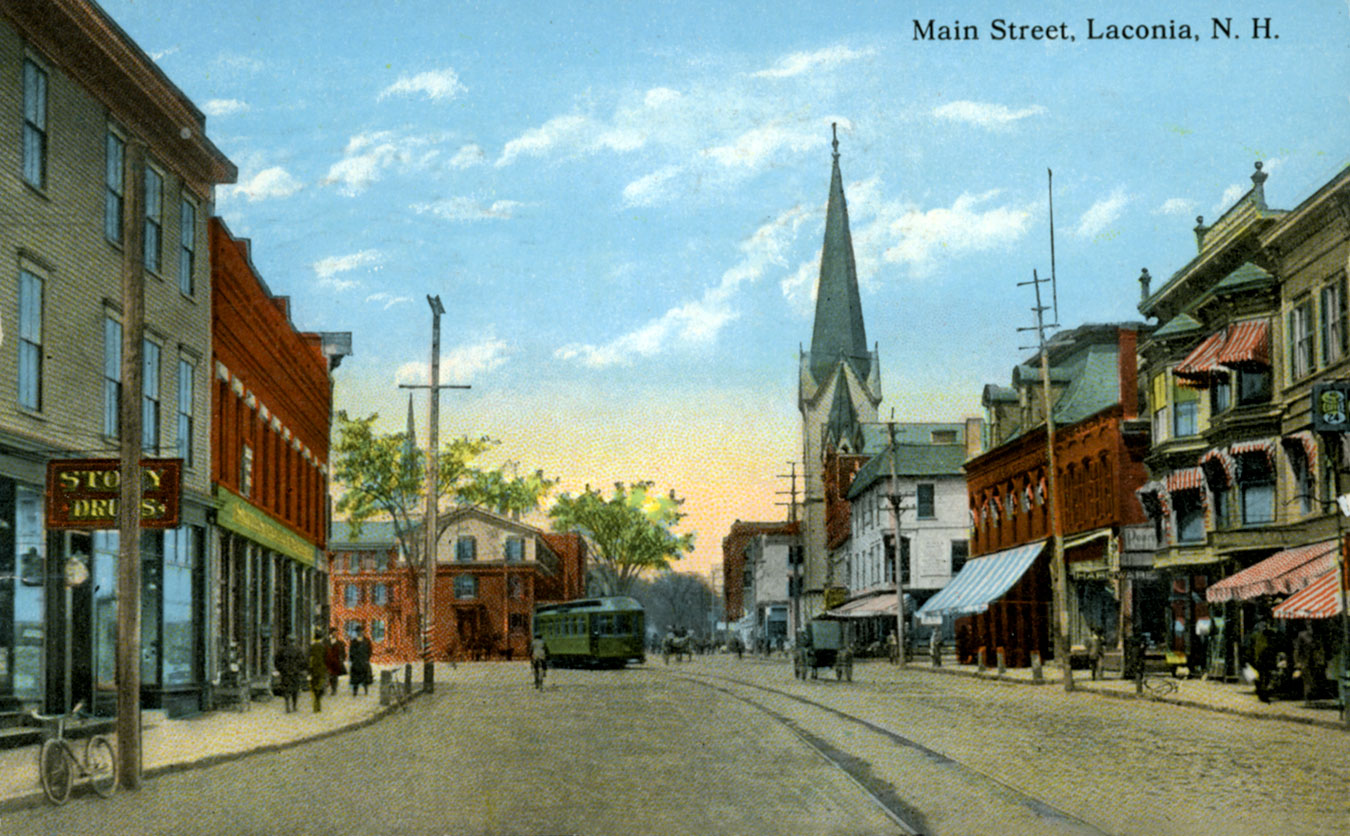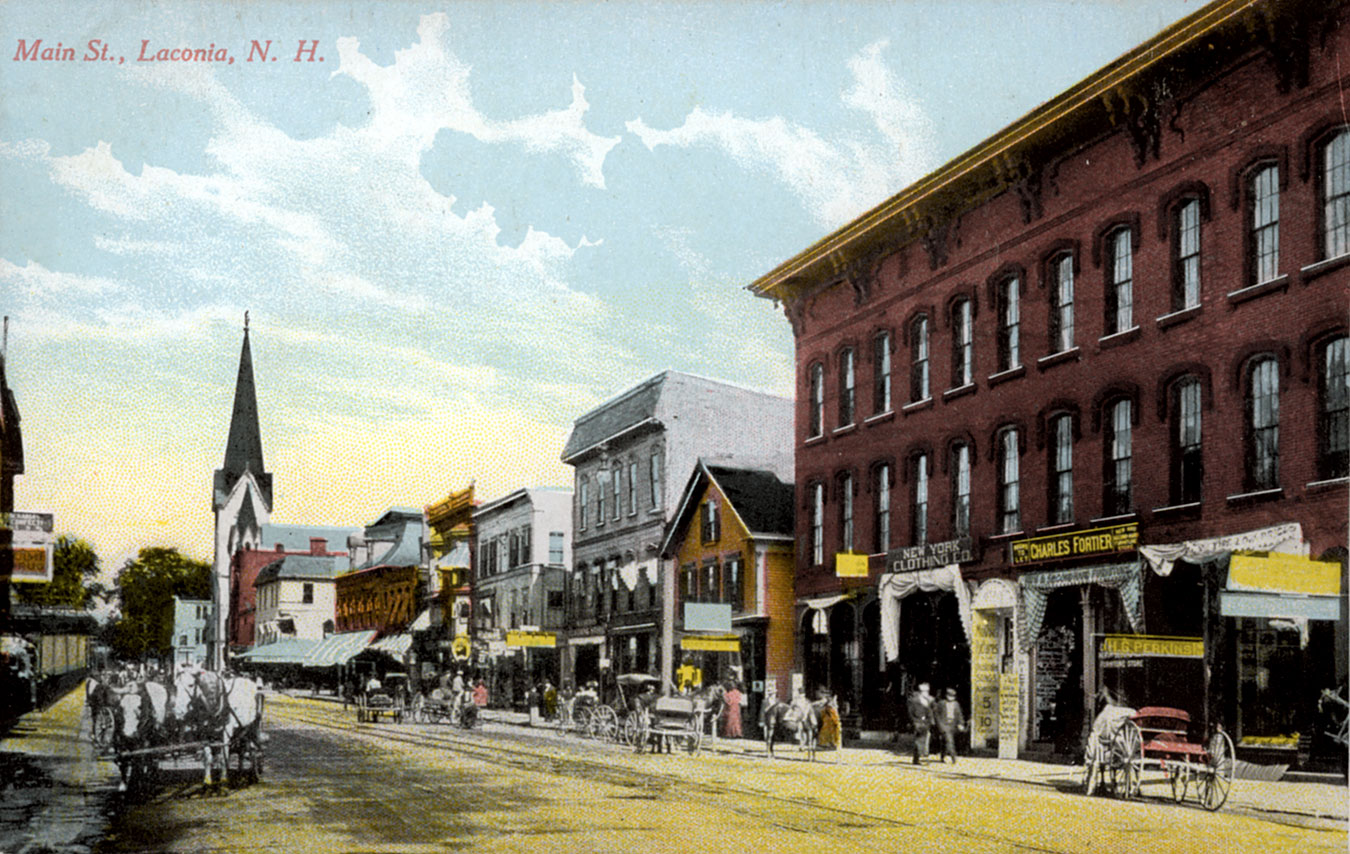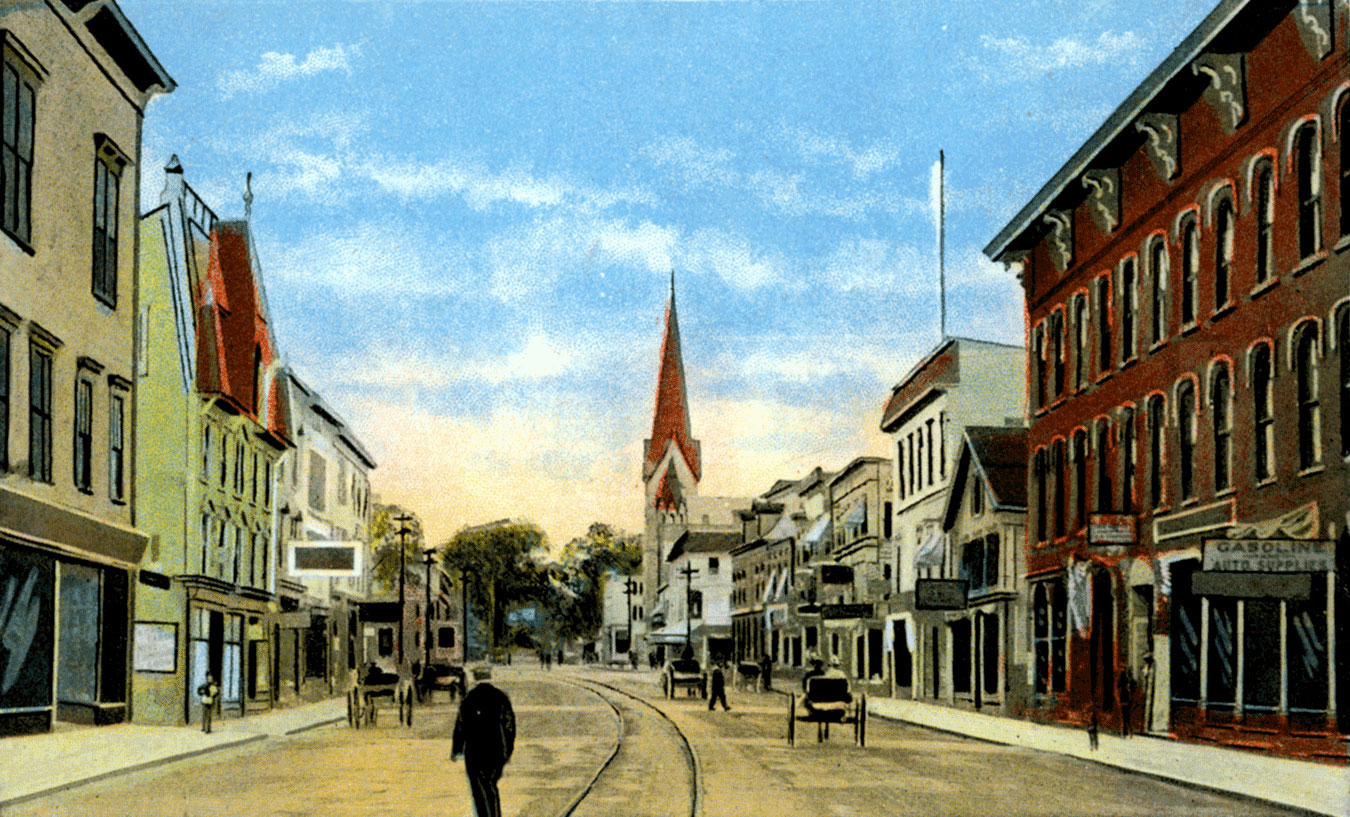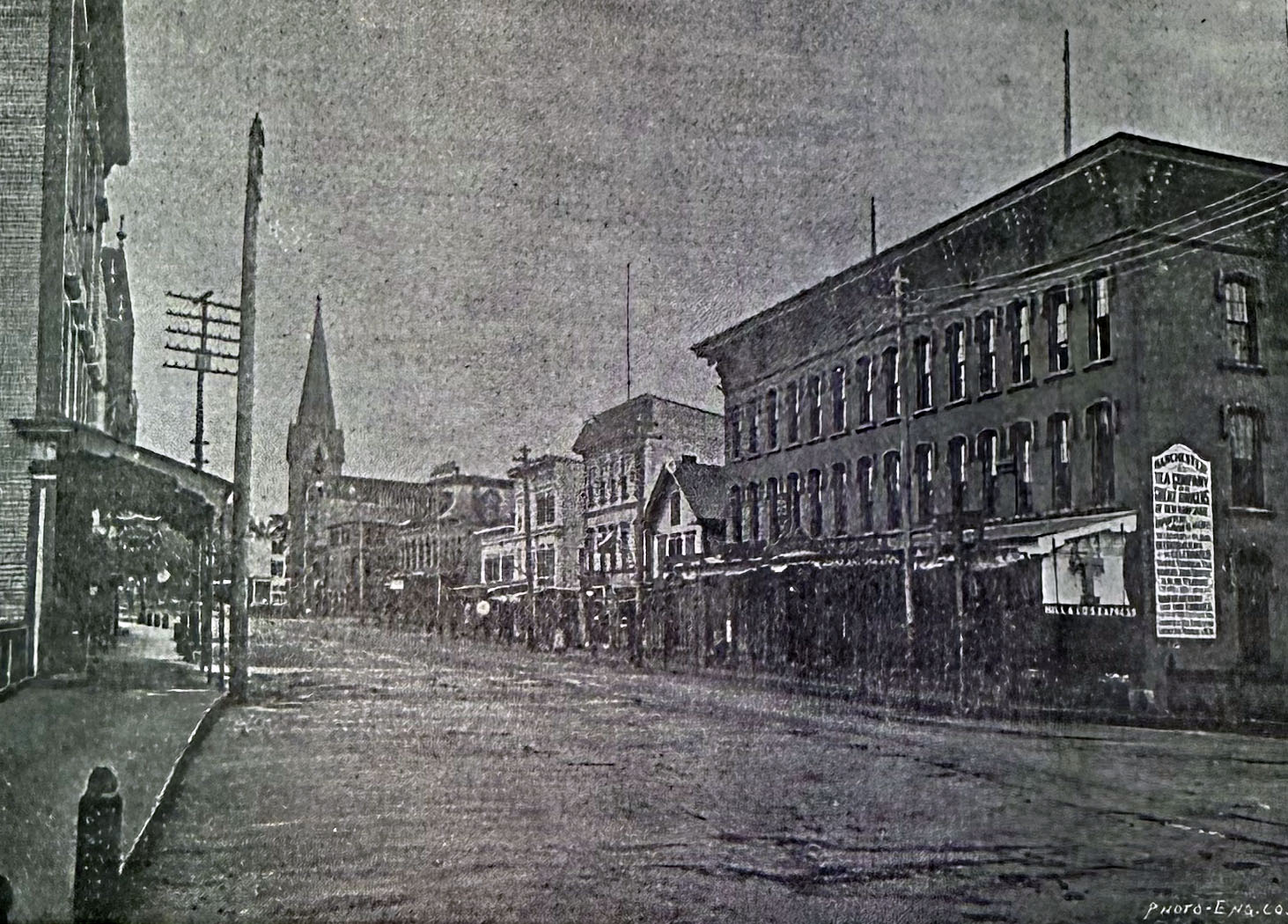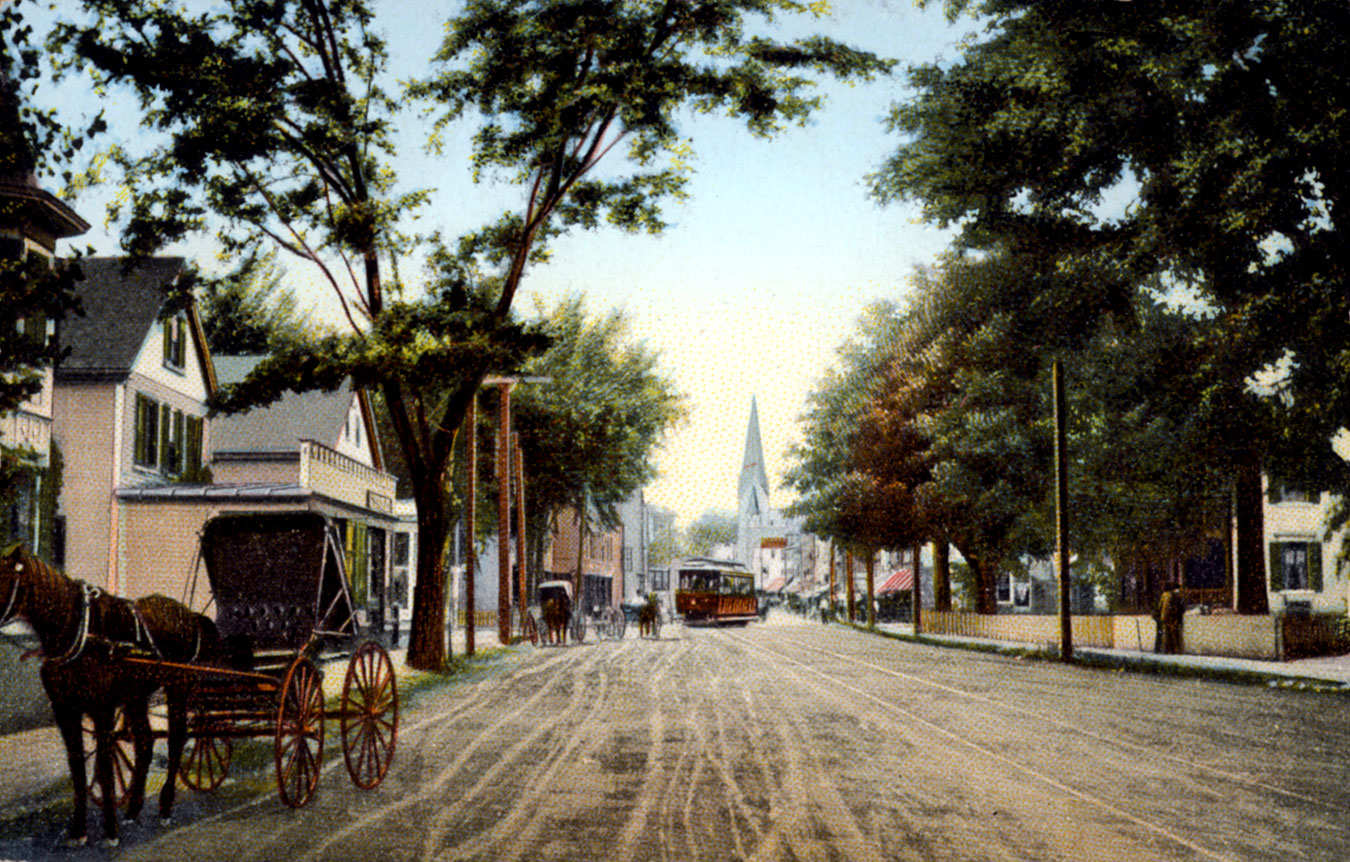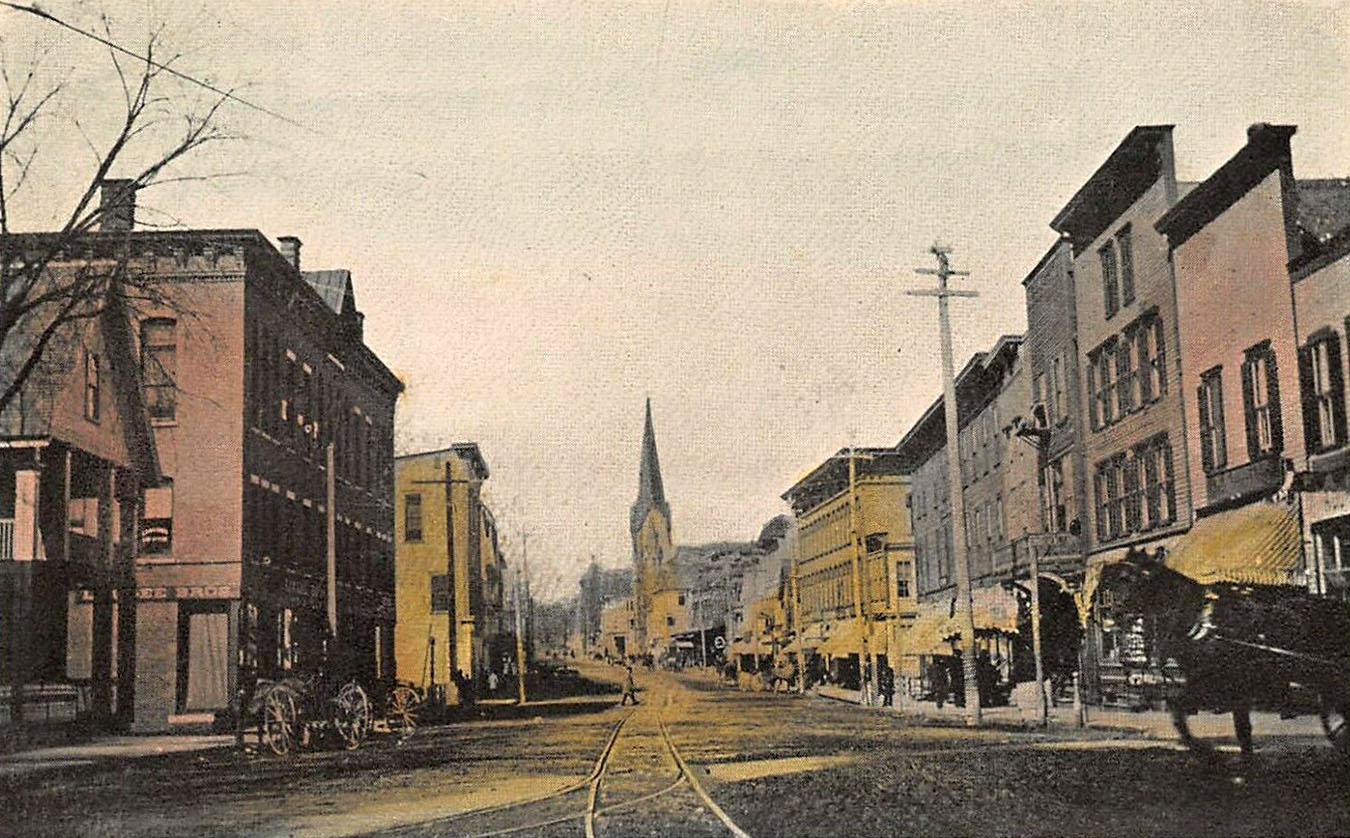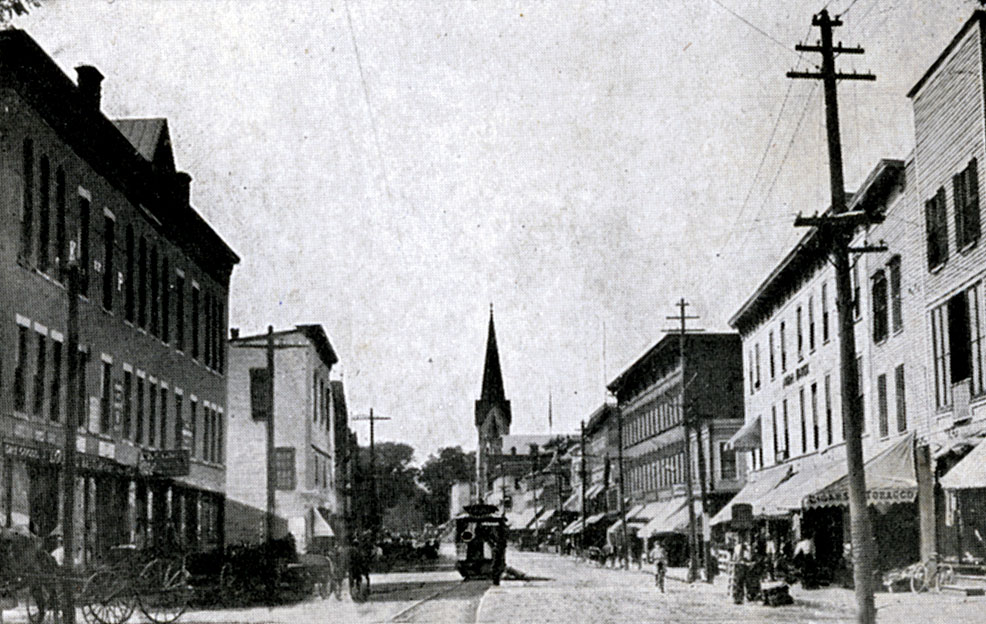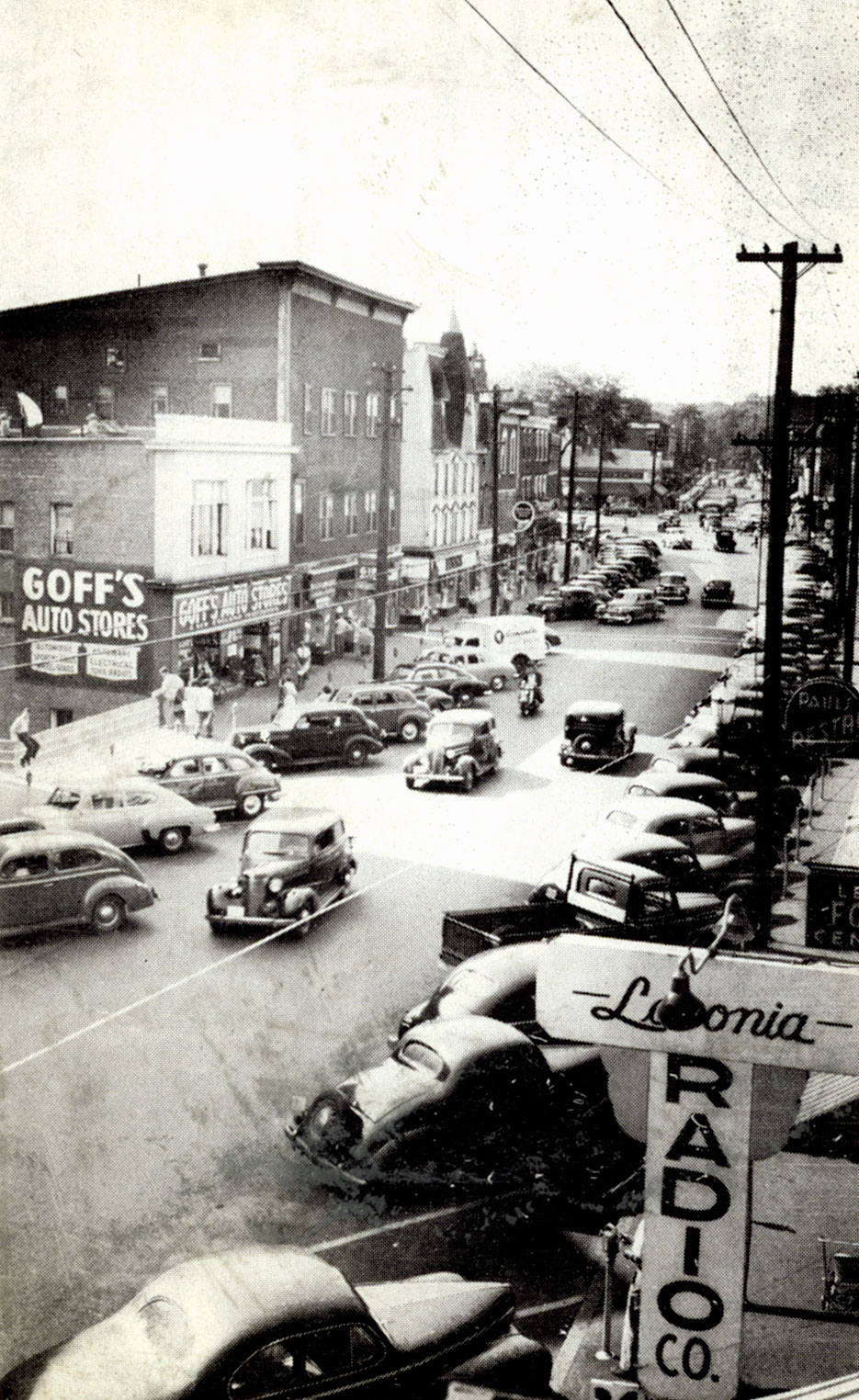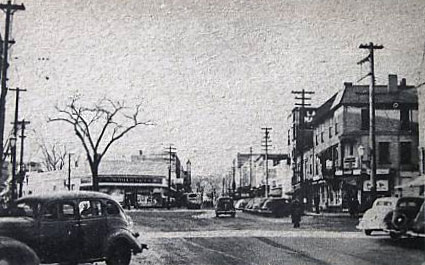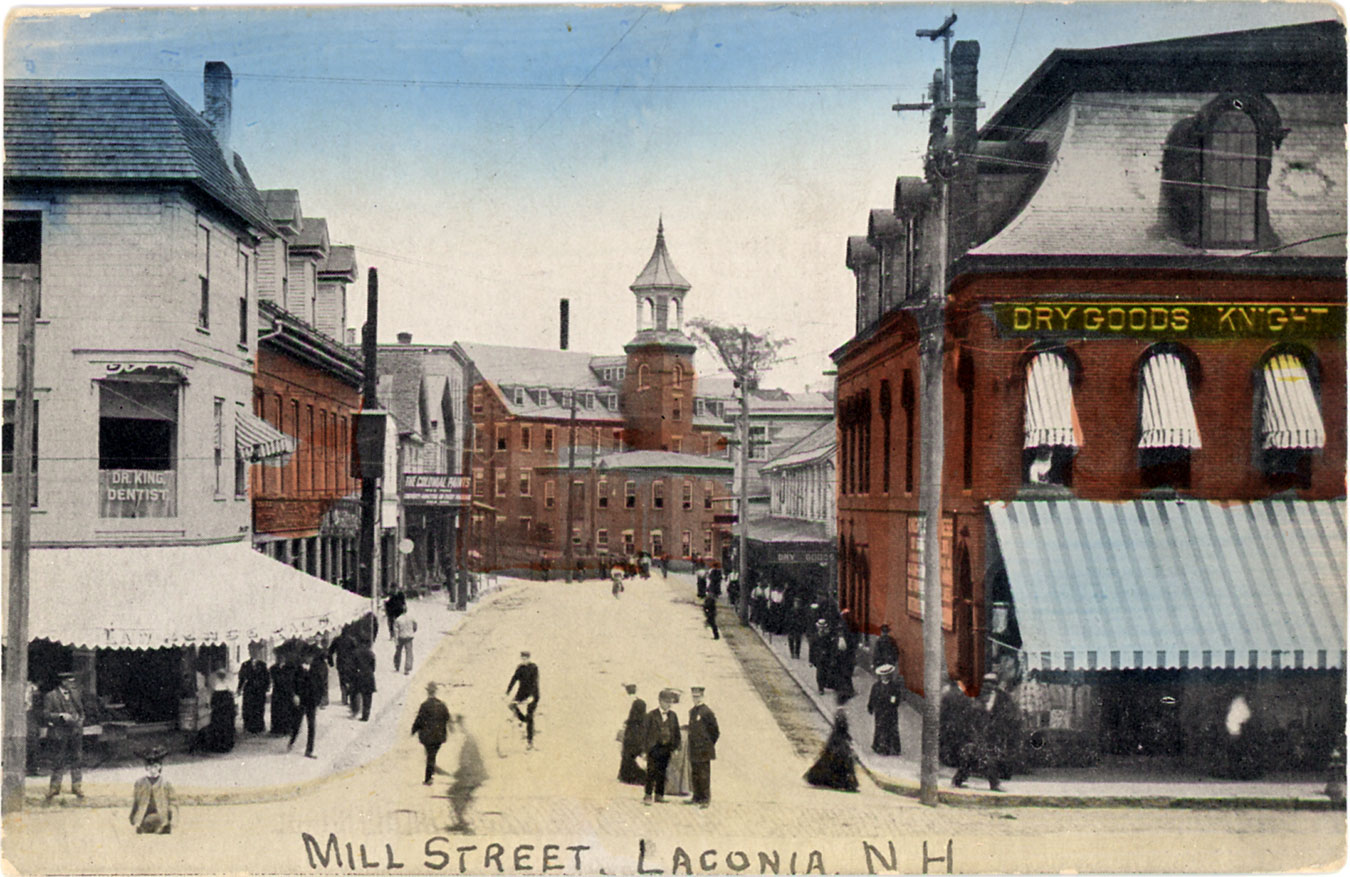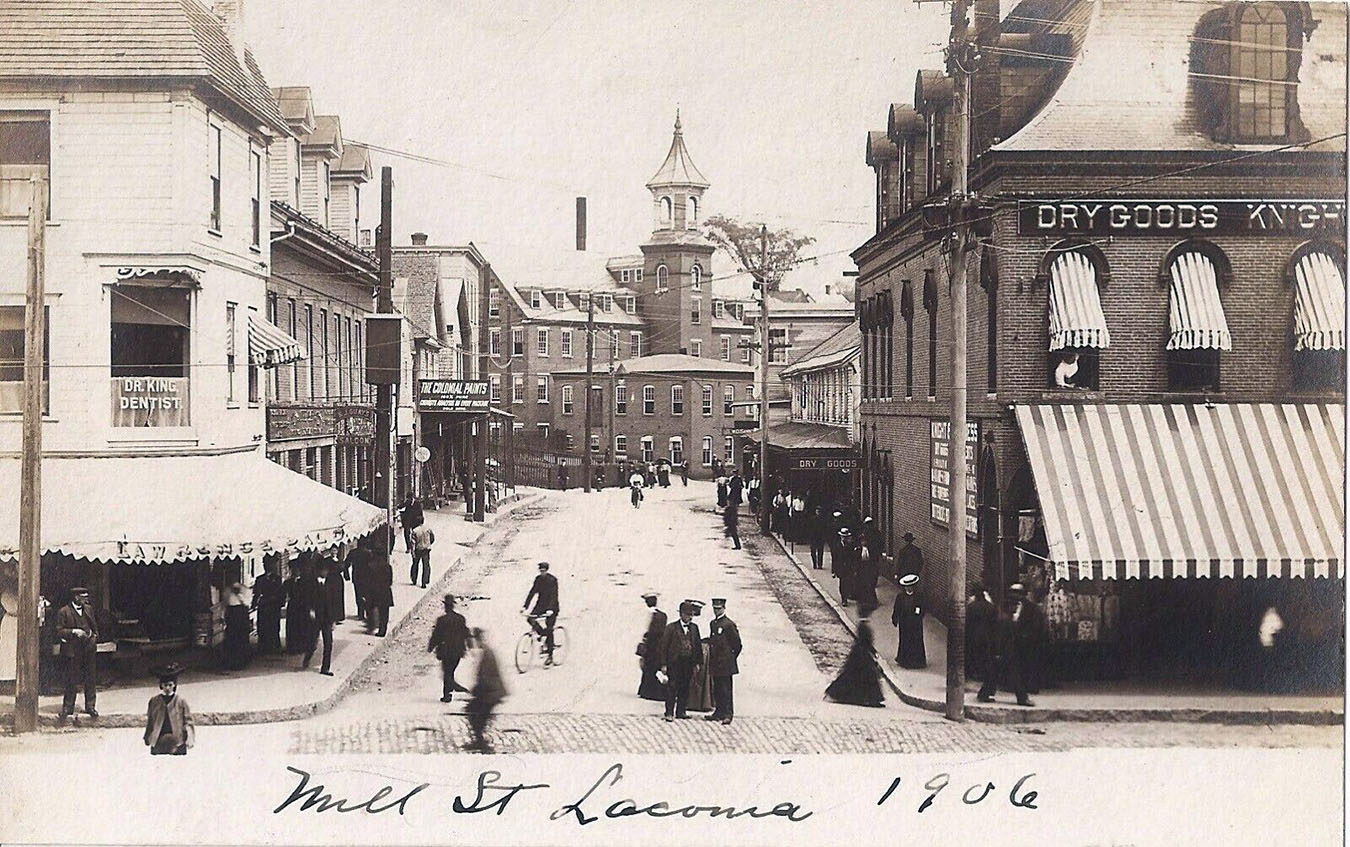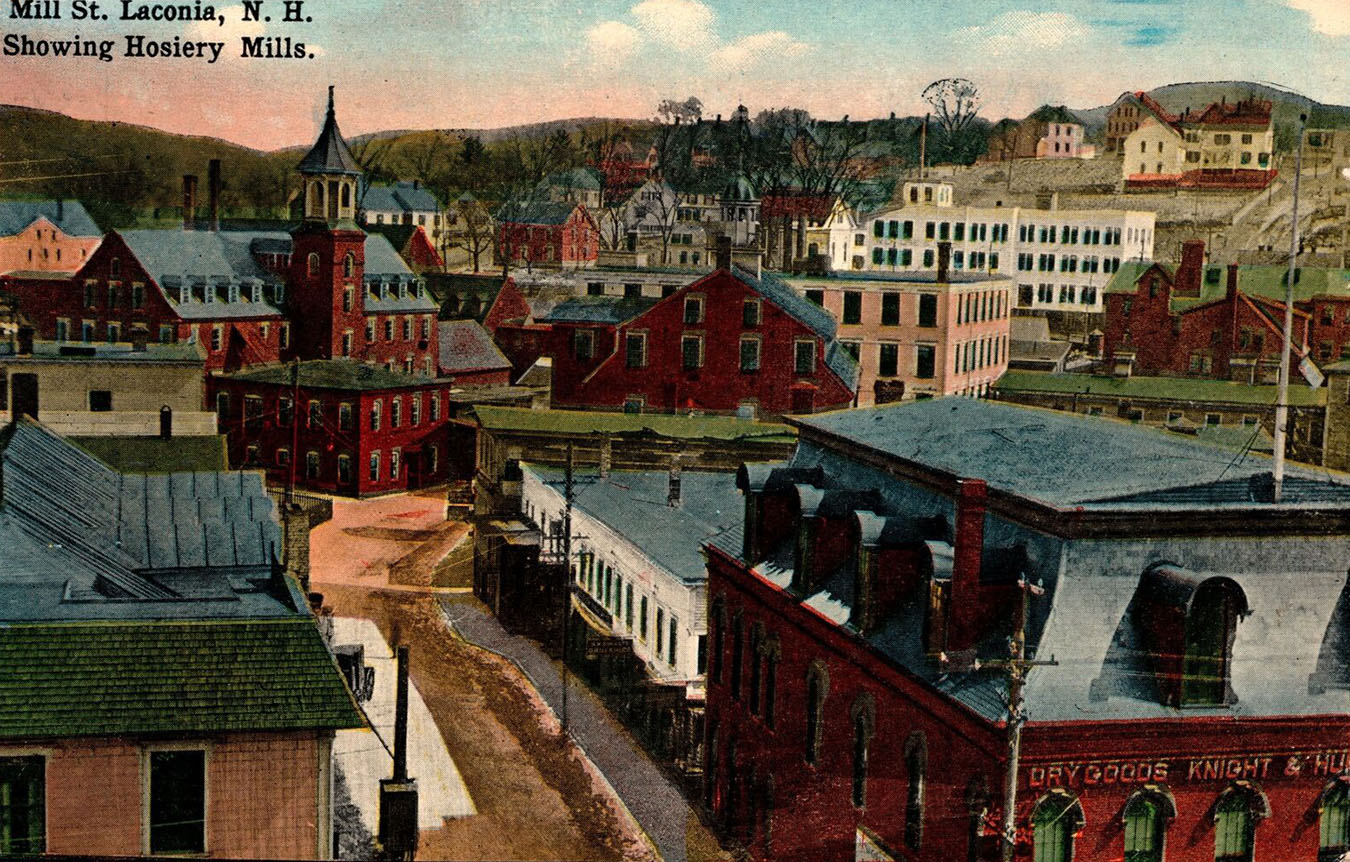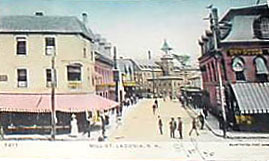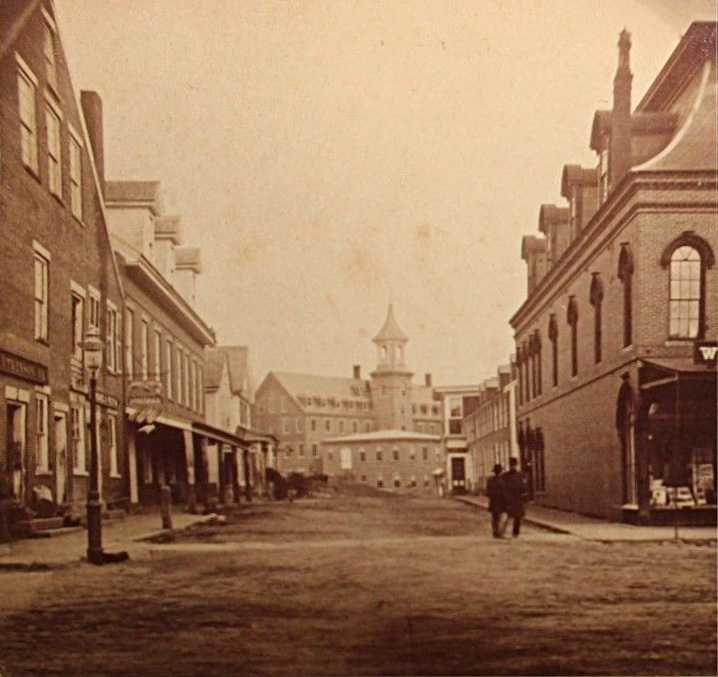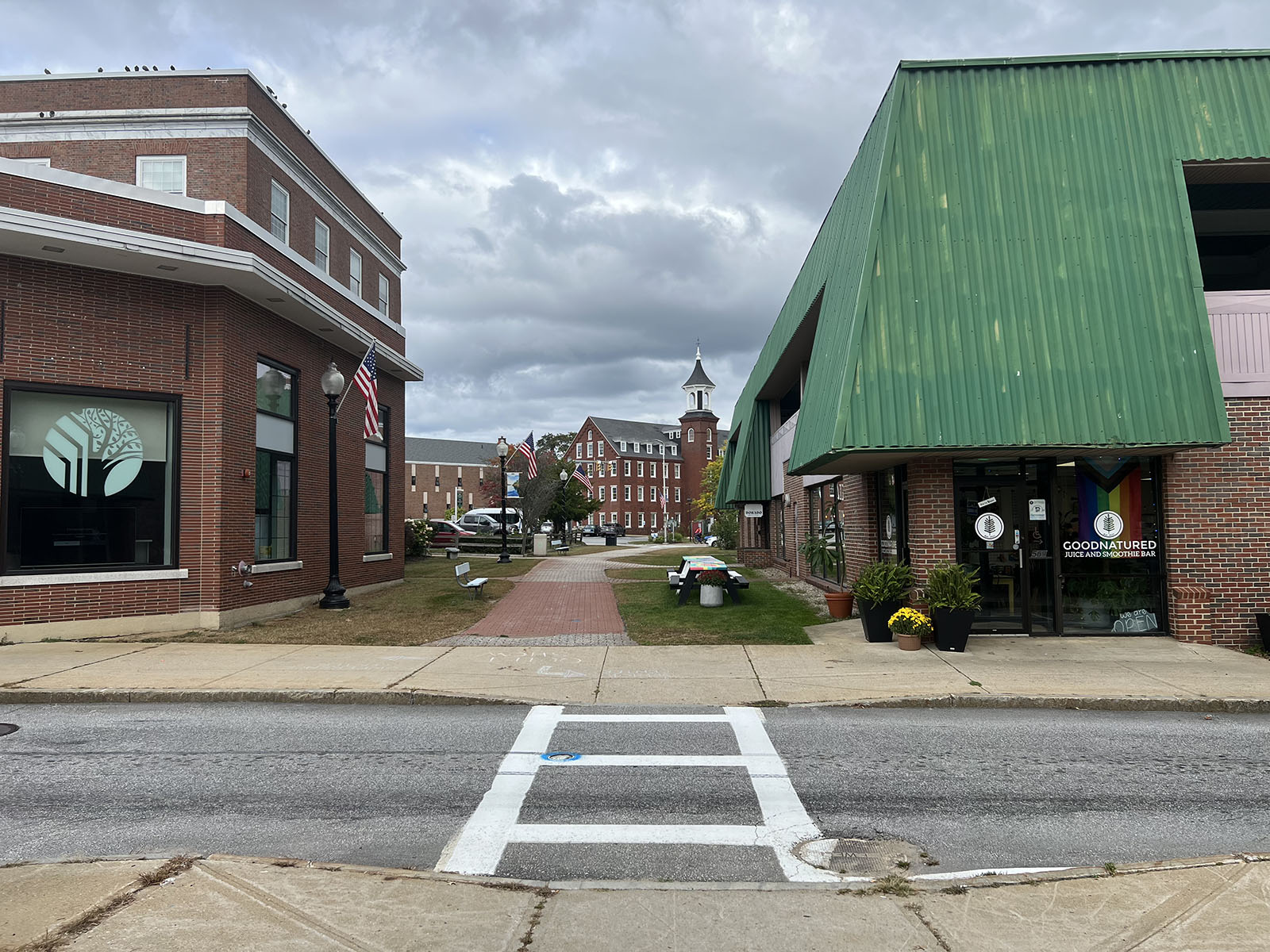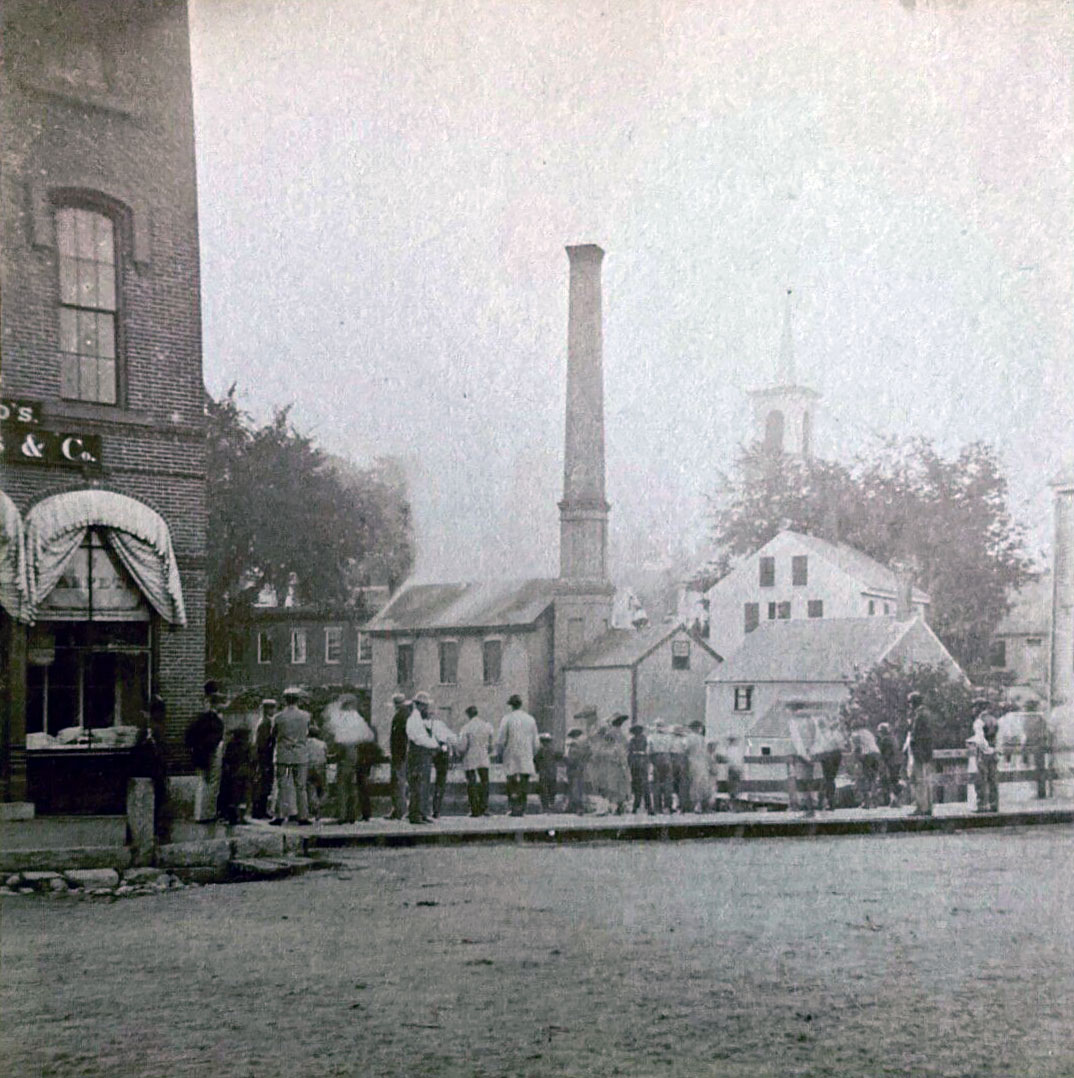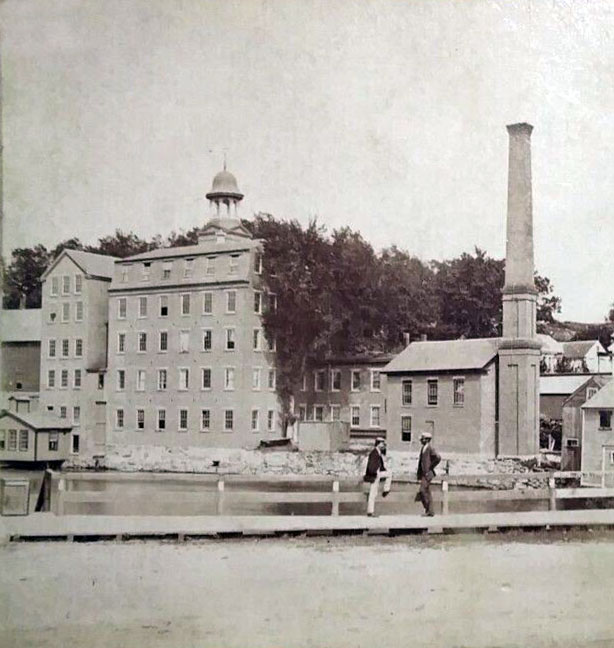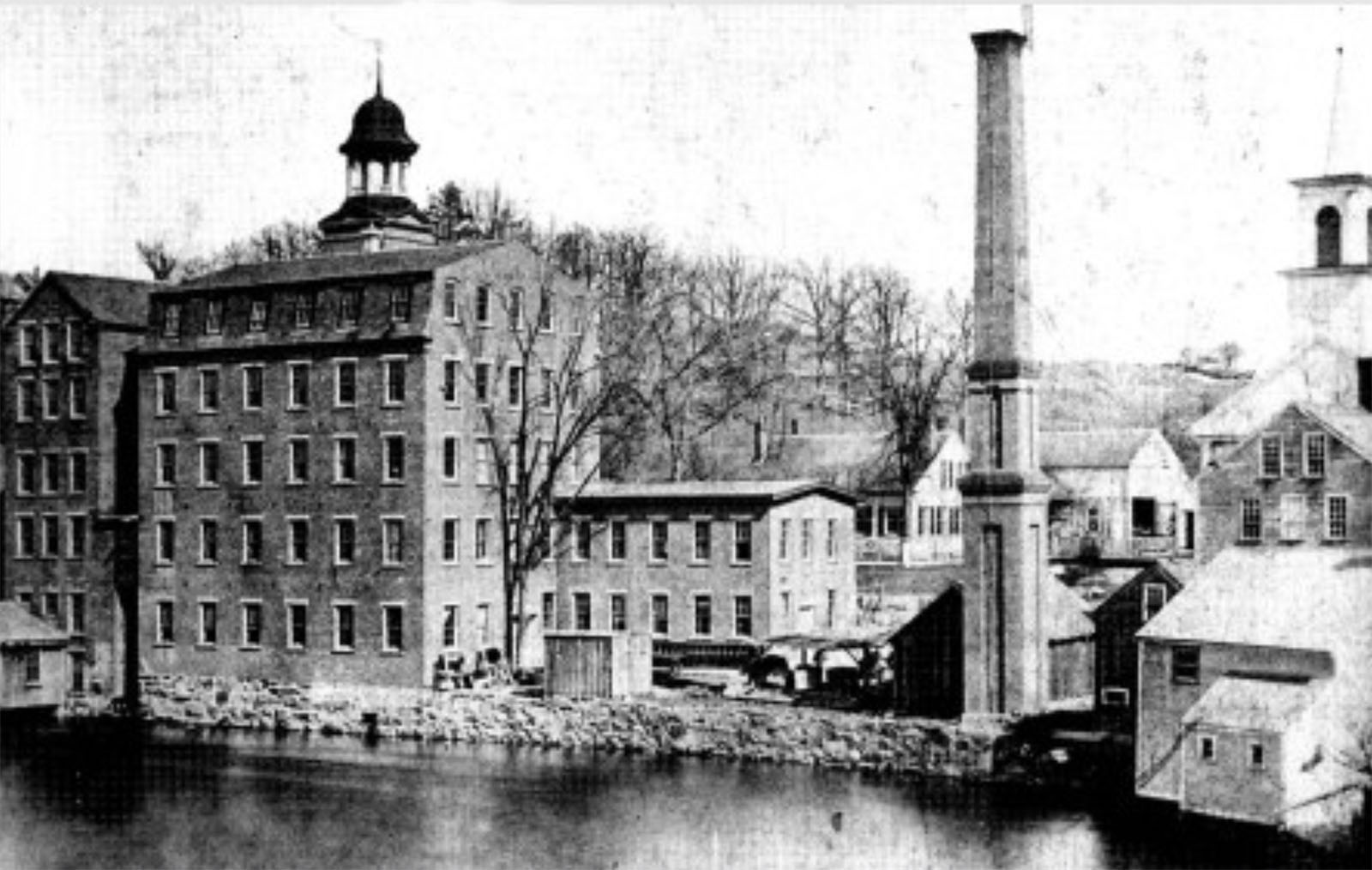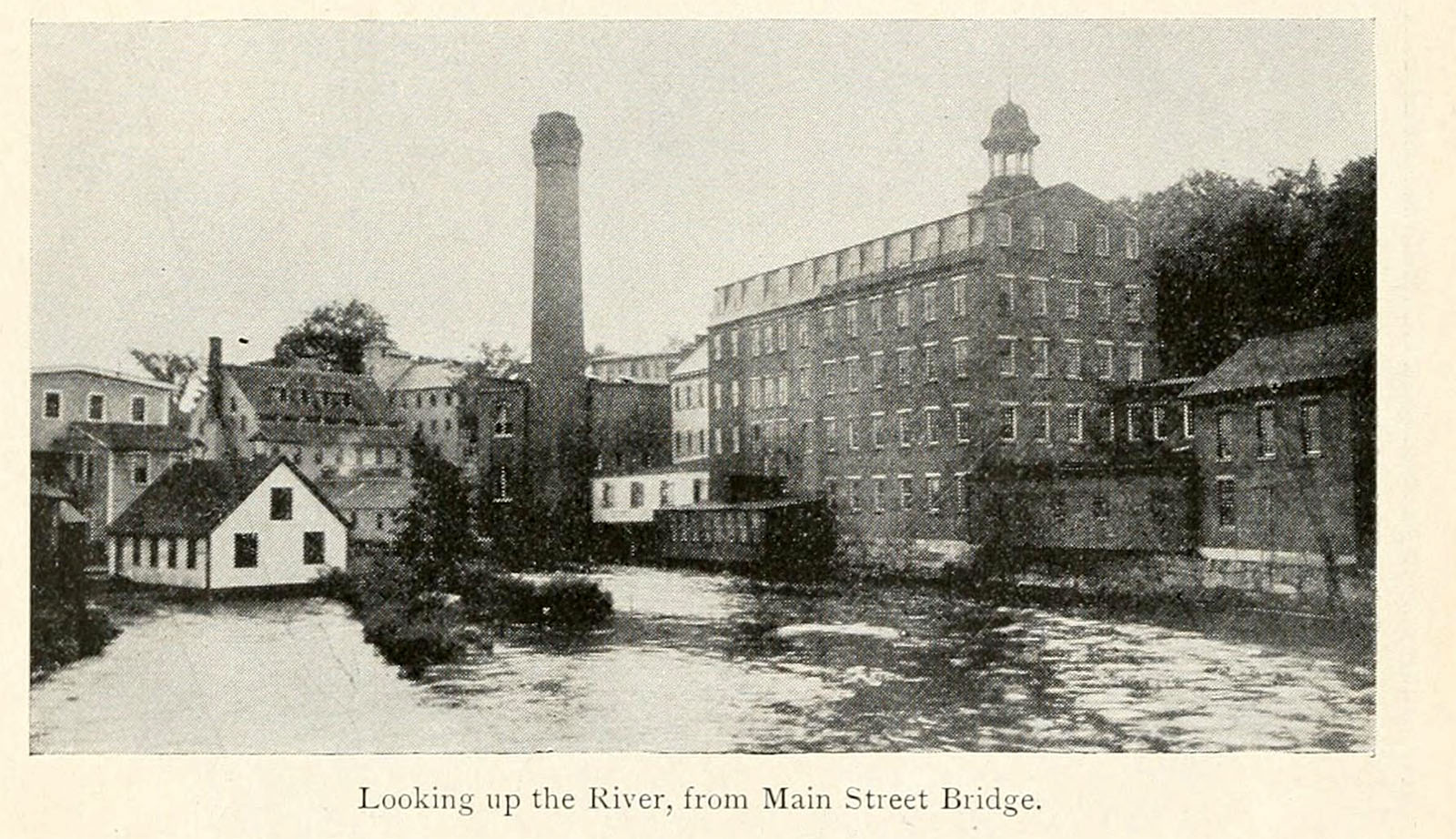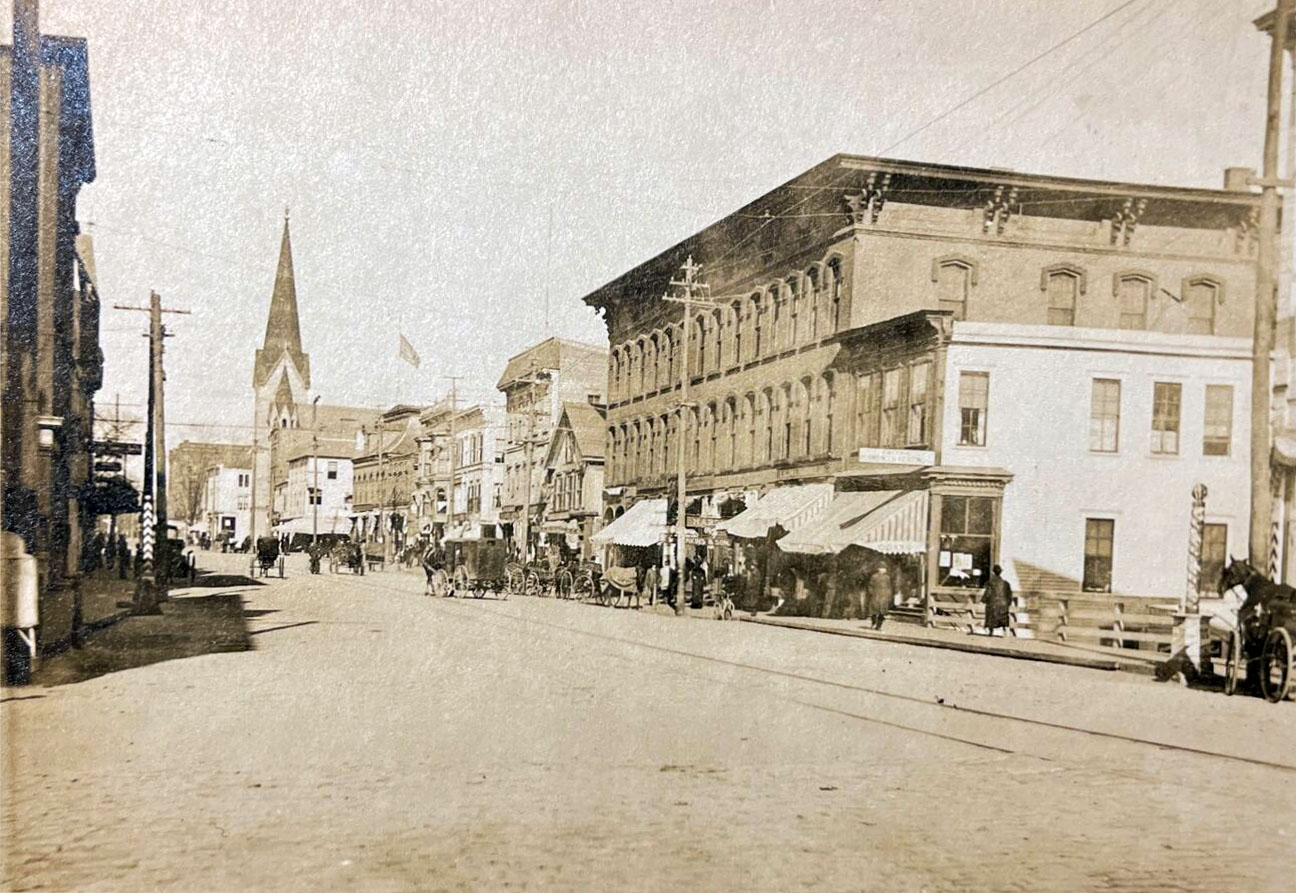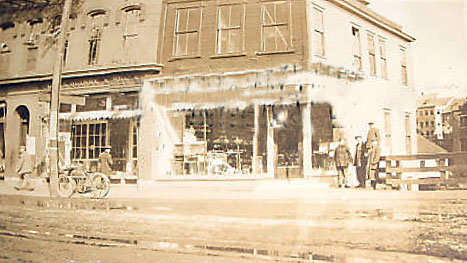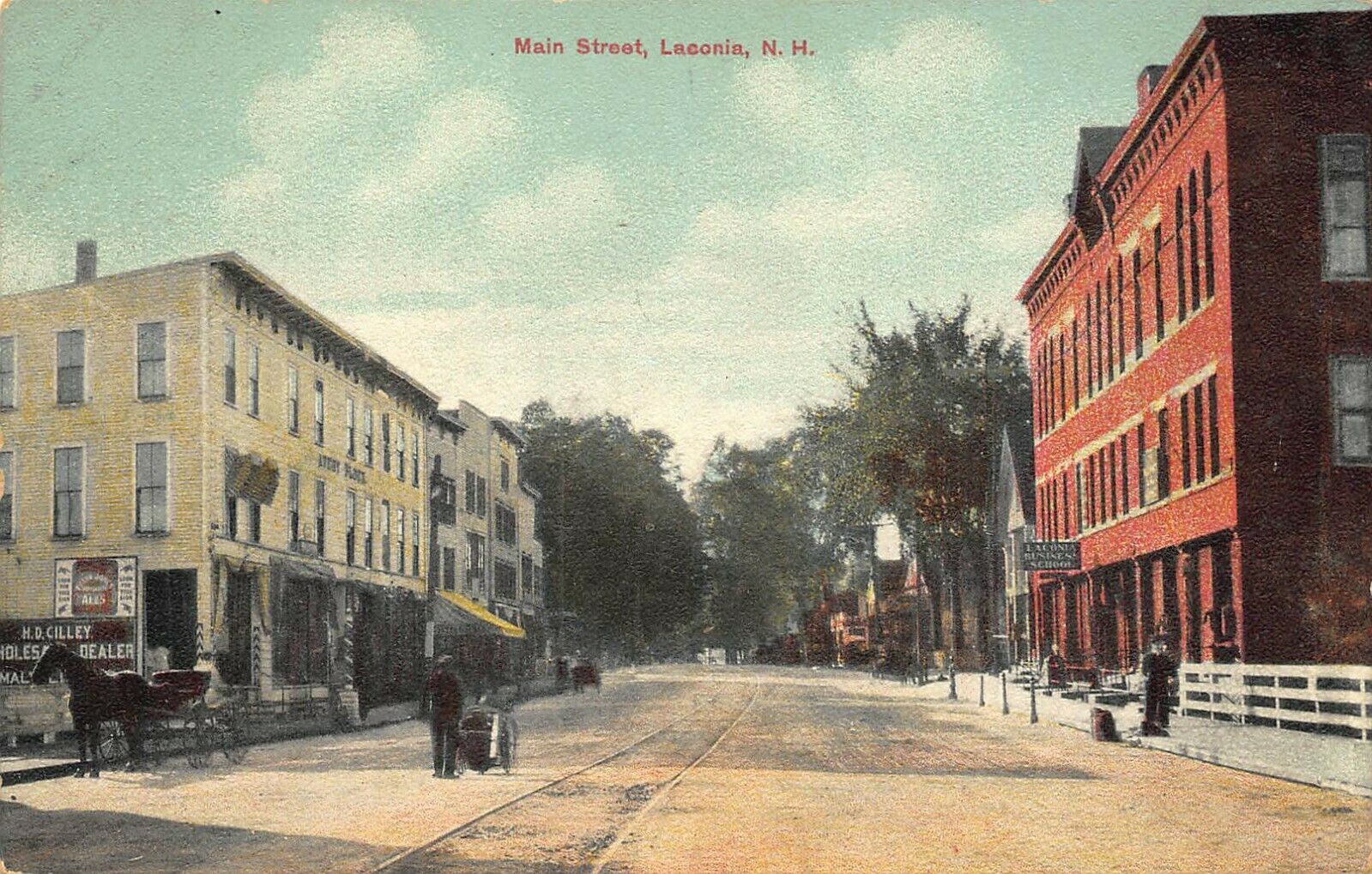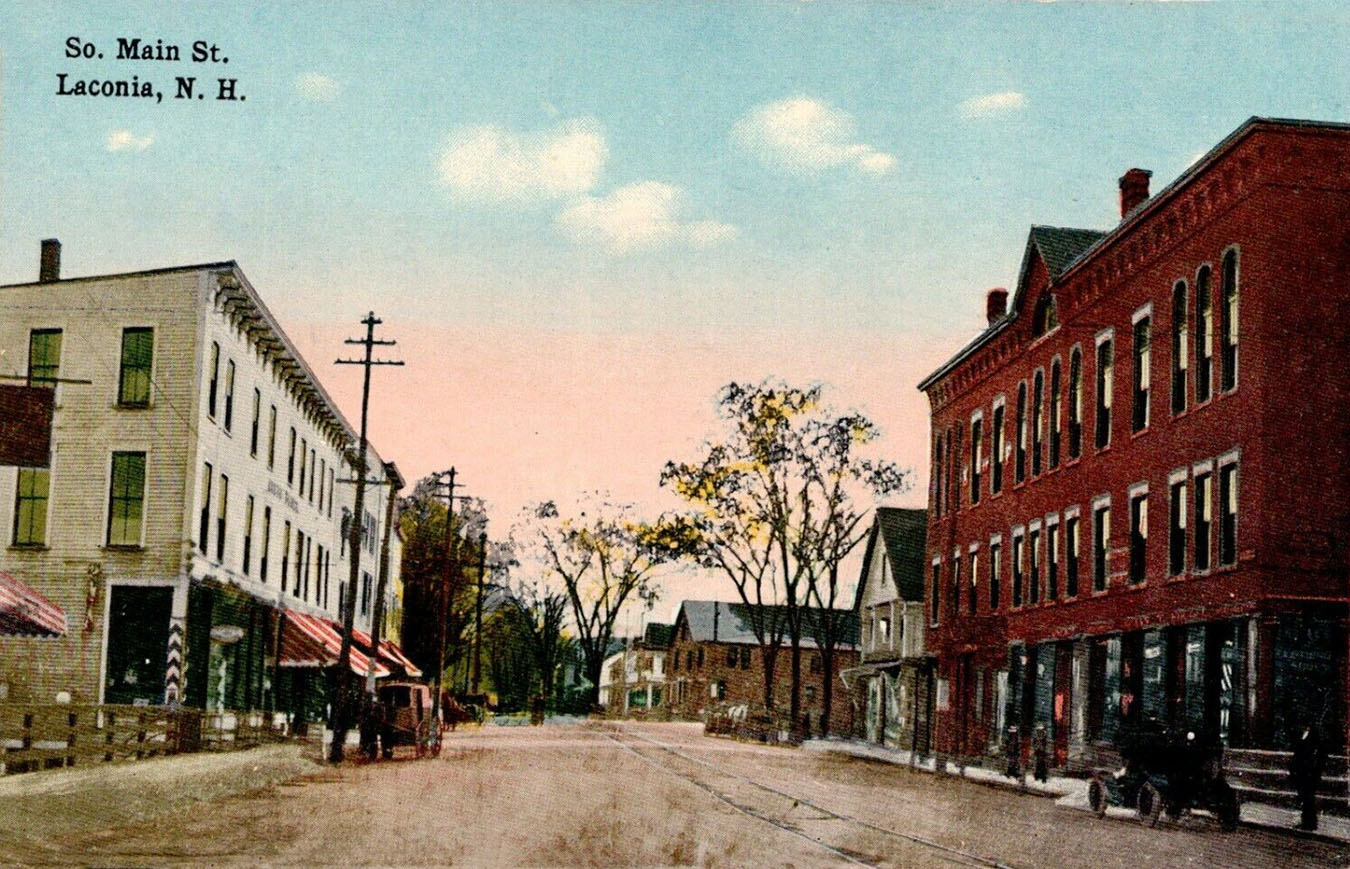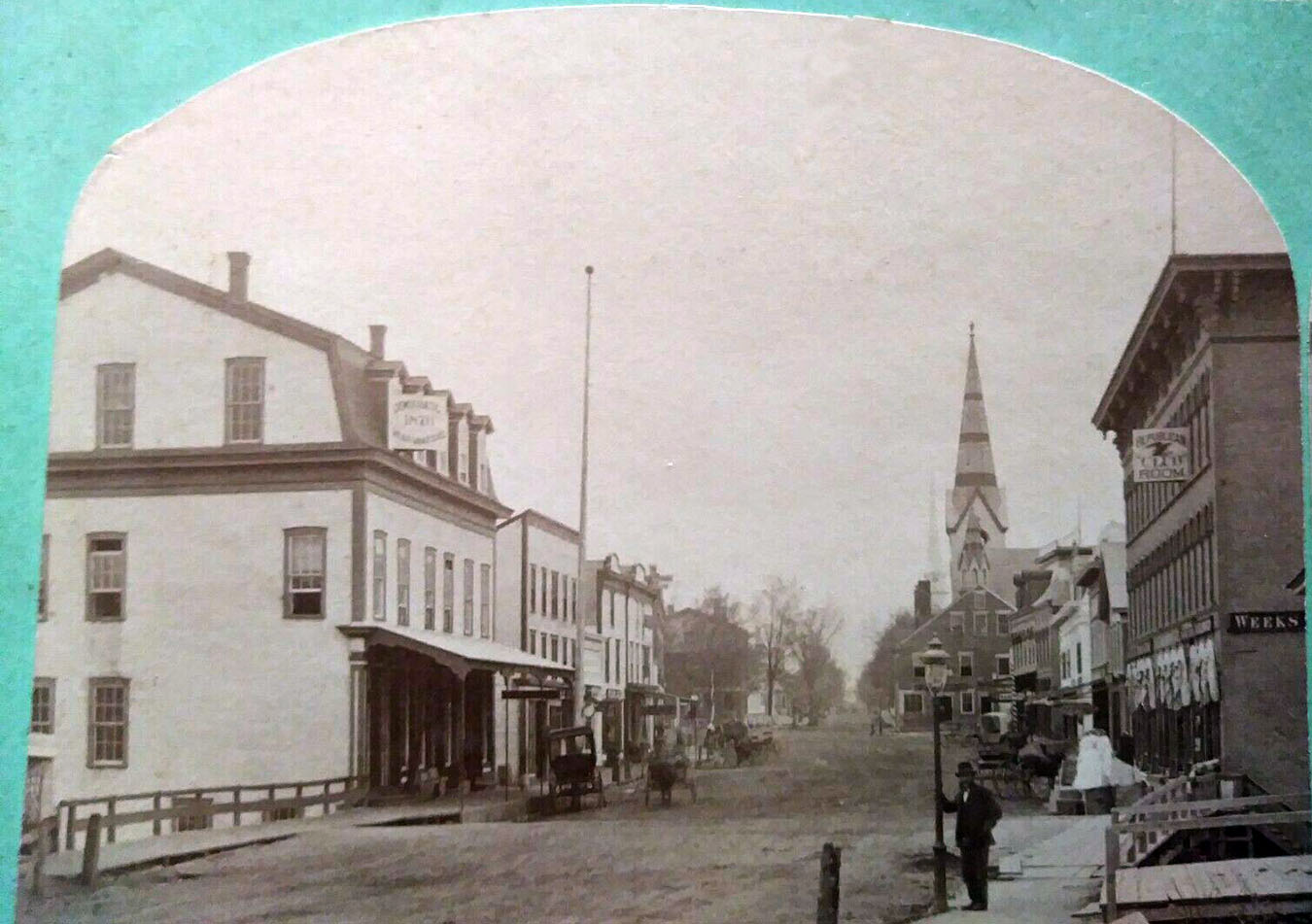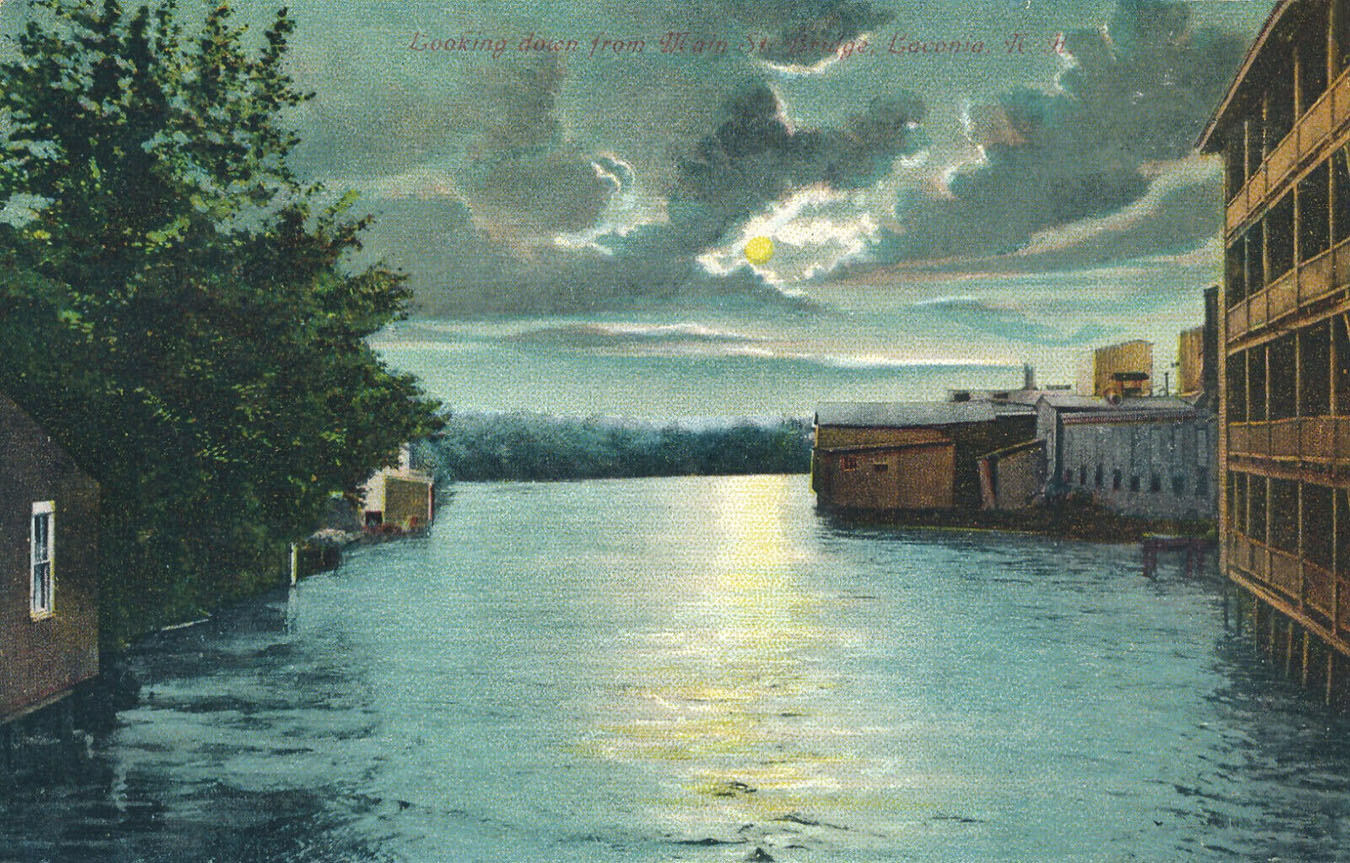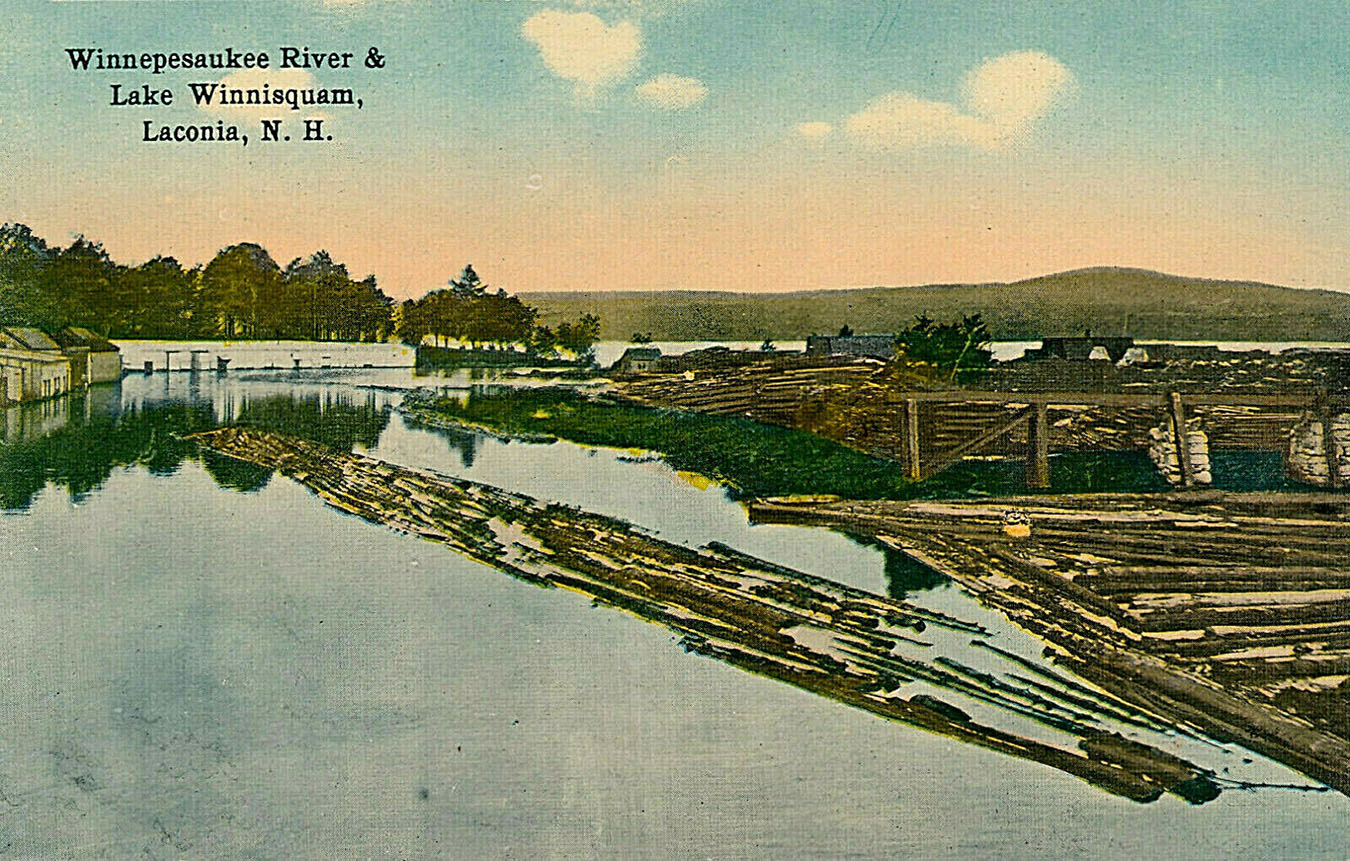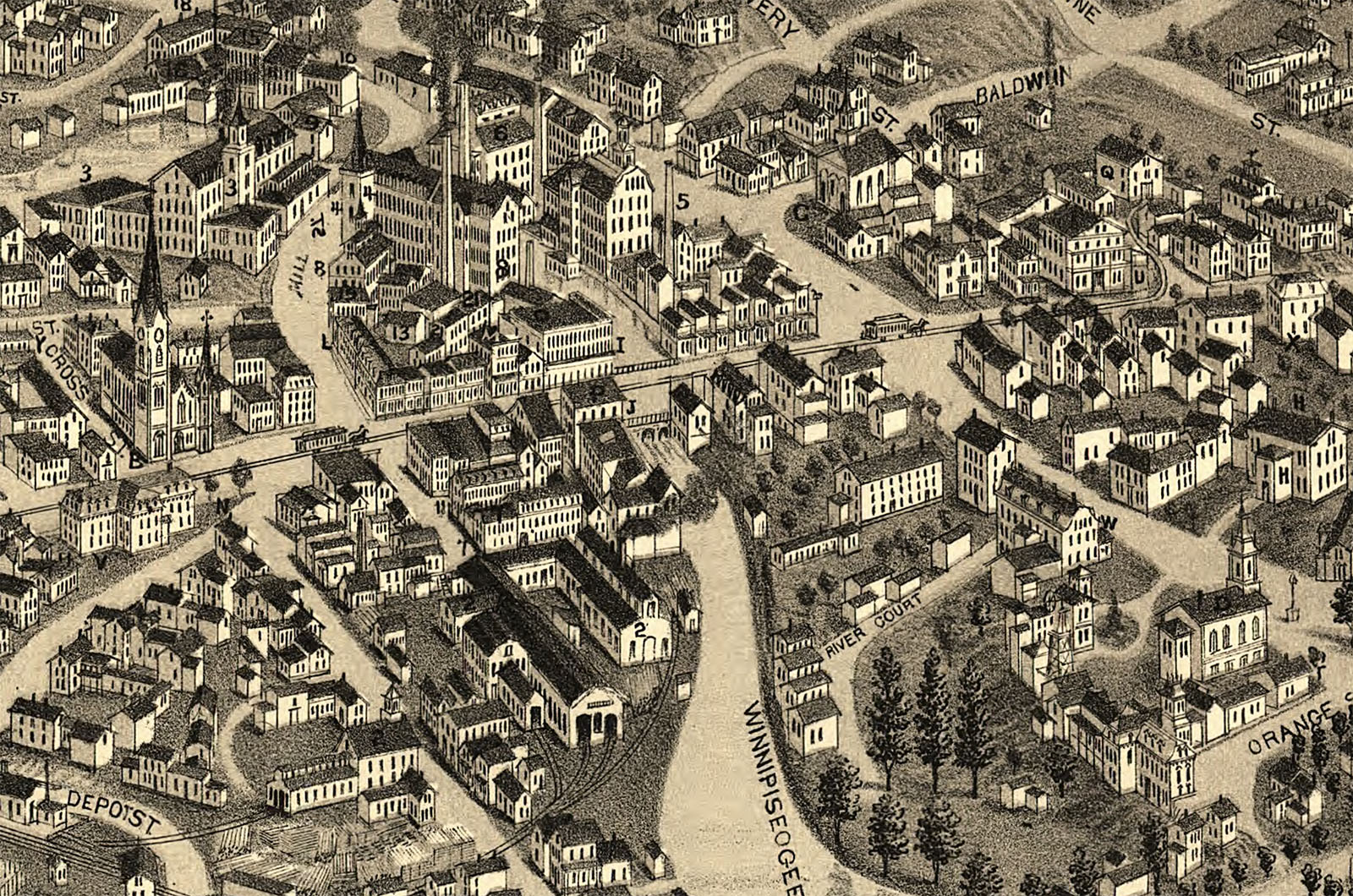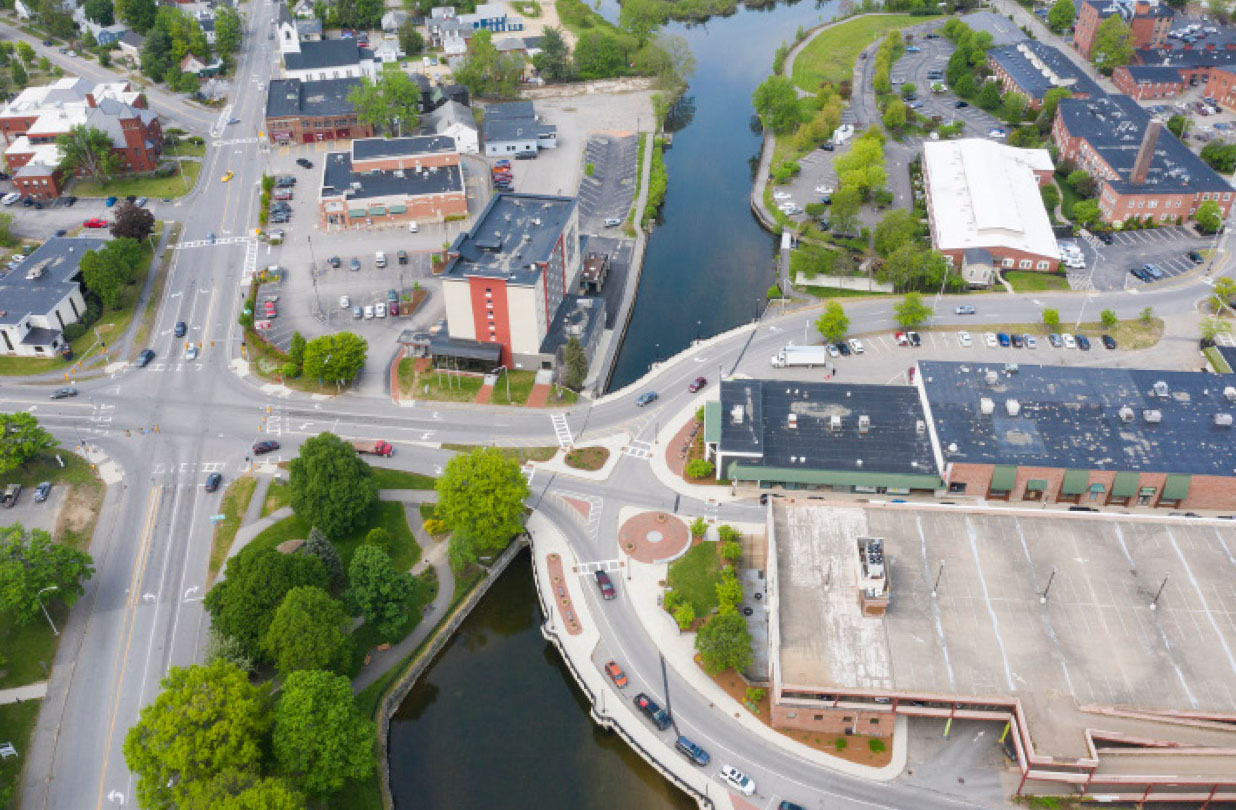Downtown Laconia
WOOLWORTH’S
Note below the original location of Woolworth’s “Five and Dime” on the West side of Main St. In 1937, it relocated to the prominent building at the corner of Pleasant St and Main St, above. By comparing these two images, we can see that, prior to Urban Renewal, most of the historic buildings on the West side of Main St were still being used well into the 1950s.
Woolworth’s continued in its corner location through the 1970 season. It was replaced by a Benjamin’s clothing store on April 15, 1971. In 1973, the Sundial gift shop replaced Benjamin’s. The Sundial’s last year was in 2010. A faux brick facade was installed shortly thereafter, in July, 2011.
In the early 1950’s photo below, one can clearly see the sign for the Gardens Theater. The large old elm tree to the left of Woolworth’s was removed in late April, 1958.
In this late 1950’s photo we can note a few changes: the older Victorian style light fixtures have been replaced by modern street lights, and a traffic island has been installed.
BANK SQUARE
Below: Moulton’s Opera House is flying the flag on the left corner. The Eagle Hotel (see section below) occupies the center. The Eagle Hotel was originally home to the Belknap Savings Bank in the early 1800s – hence the name, Bank Square. In 1937, the Eagle Hotel was replaced by Woolworth’s. On the right we see the imposing steeple of the Unitarian Church. The following are all images of Bank Square. The last two images, taken from a roof top, are in b&w and colorized postcard versions.
MOULTON’S OPERA HOUSE
Moulton’s Opera House. “Built in 1886, this massive brick structure, containing an opera house on its second and third floors, loomed over Bank Square at its corner with Water Street until it was demolished during Urban Renewal in 1970.” Quote from Warren D. Huse’s book, Laconia, Acadia publishing.
Moulton’s Opera House is partially shown on the far right of the postcards below. These postcards are the few postcards on this webpage looking in a southward direction, away from Bank Square.
LACONIA UNITARIAN CHURCH
The Laconia Unitarian Church opened on November 11, 1868. From circa 1890, until 1903, the Church hosted the Laconia Public Library in its basement. The Church burned down in late 1938. The cause was arson. On February 28, 1939, the ruins were carefully brought down, so as not to damage the nearby Laconia National Bank building.
The Masonic Temple
The Masonic Temple building still exists. It is located near the corner of Main Street and Church Street. The empty lot seen to the left of the building in the first two postcards was filled in by a wing of the Laconia Tavern building, built in 1913. The wing is seen in the third postcard.
Looking South from Depot Square (later known as Veterans Square). The new Masonic Temple building is seen on the left. The original building (not shown) was destroyed by explosion and fire on December 6, 1902. The new building was built in 1903.
THE EAGLE HOTEL
From the Illustrated Laconian, published in 1899: “The Eagle Hotel, located at the juction of Main and Pleasant streets, on Bank square, is Laconia’s most popular hotel for commerical travelers and others who desire strictly first-class accommodations. The Eagle Hotel…accommodates 100 guests. The table is superb, the rooms and beds are clean and comfortable, the house is illuminated with electricity, supplied with a pool room and a barber shop, while the location, directly in the business centre of the city, makes the Eagle a very convenient and desirable home for the “stranger within our gates”. The hotel lasted until 1937, when it was replaced by Woolworth’s.
In the following three postcards, the horse watering trough can be seen directly in front of the Eagle Hotel. The watering trough was removed in the early 1920s.
VIEWS OF MAIN STREET LOOKING NORTH
Contrast and compare the early 1920s view with the late 1920s view. They are very similar, except in the later view, the trolley tracks are gone ( the last year of operations for the Laconia Street Railway was in 1925.)
The first black & white view is from a Library of Congress photo. With no cars, just horse and carriages, the black & white views date between 1900-1910.
A similar view to the above, but taken in the late 1950s, shows many motorcycle visitors during Laconia Motorcycle Week.
The brick building in the previous two photos was the Lougee Bros (later the Lougee-Robinson Company) building. This photo is from the 1899 “Illustrated Laconian”. The initials on the top floor of the building, “K of P”, stands for the Knights of Pythias, who rented a meeting hall on the upper floor of the building.
MILL STREET
The following view is of Mill Street (center), looking towards the J.W. Busiel mill. The Unitarian Church can be seen on the left, while Main Street can be seen on the right. At the corner of Mill St and Main St, the store with the six window awnings and sidewalk canopy was the Knight & Huntress Dry Goods and Garments store. (Although the store name sounds quasi-medieval, Knight and Huntress were the last names of the store owners.)
Mill Street no longer exists. It was another victim of Urban Renewal. The photo was taken from the rooftop of Moulton’s Opera House, and was the left half of a panoramic view, which can be seen in its entirety here.
Here are several additional postcard views of Mill Street, and an old stereo view:
THE MAIN STREET BRIDGE
The bridge in a circa 1870s stereoview by W.L. Wilder, one of Laconia’s earliest photographers. Everyone is looking down at the river, but what they are looking at is unknown. The people are facing east towards the Avery Dam.
Another view of the bridge looking east, from a stereoview by W.L. Wilder, entitled Gilford Hosiery Mills, Laconia, N.H. The mill was later called the Clow Mill, and later still, the Cormier Mill. The mill was torn down circa 1970, during Laconia’s Urban Renewal, and replaced by Stewart Park, which was dedicated on November 19, 1973.
The following north-facing views (from 1907 and 1917) show a bit of the Main Street bridge over the Winnipesaukee River, to the right in the photos. The 2-story building, to the right of the larger, 3-story brick building (the Weeks Building), was added some years after the previous photos of the Gilford Mill were taken. The smaller building was built right over the river.
The bridge is seen on both sides of Main Street in this uncredited stereoview looking north. Rival political party signs hang from the buildings on opposite sides of the street. A sign for the “Republican Club Room” hangs from the 2nd floor of the Weeks building on the right, while the “Democratic Headquarters” sign hangs from a dormer of the building on the left. The Unitarian Church dominates the skyscape in the distance.
Detail from an 1883 map of Laconia shows the Main Street bridge between points “I” and “J”. Carriages from the Horse Railroad are drawn in on Main Street.
The current, U-shaped Main Street Bridge was built in 1972, as part of the downtown Laconia Urban Renewal project. It was completely rebuilt from the abutments up in 2015, at a cost of $3.57 million. To the right in the photo, the top of the “U” is Beacon St. West; the bottom of the “U” is Beacon St. East, and the middle of the “U” is Main Street, which changed from the Urban Renewal pedestrian mall to a one-way street on July 8, 1994. The bridge is 400′ across between the two Beacon streets, and consists of three spans. (Photo by Jon Decker/The Laconia Daily Sun)










